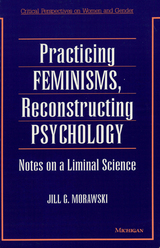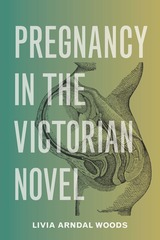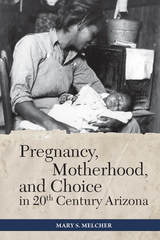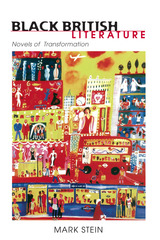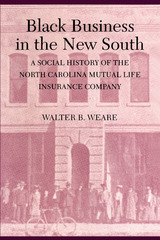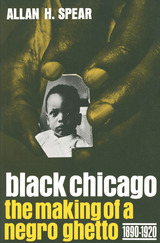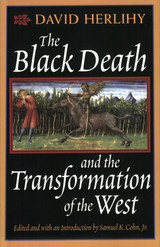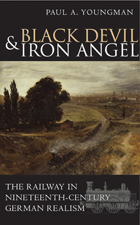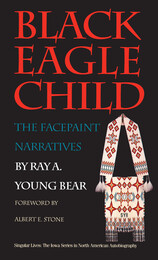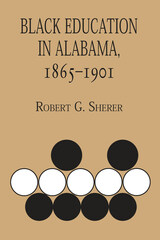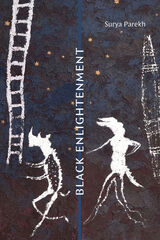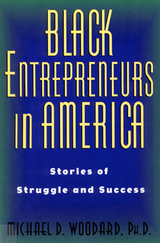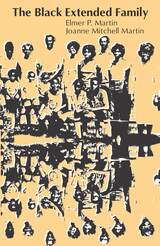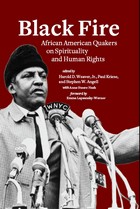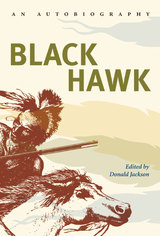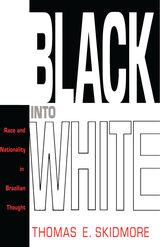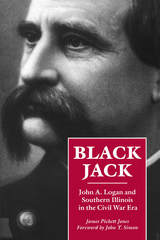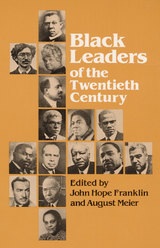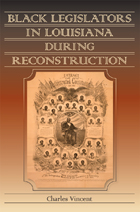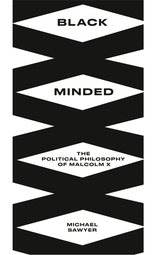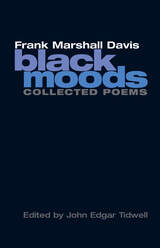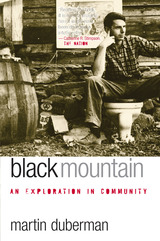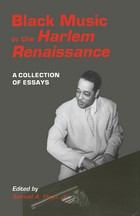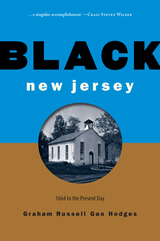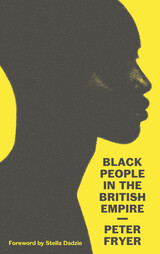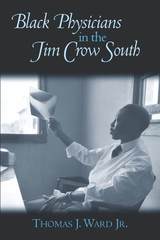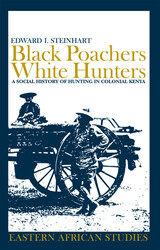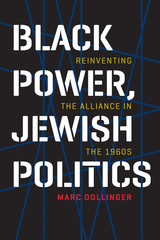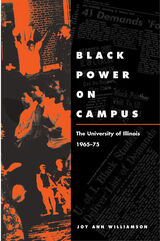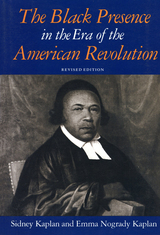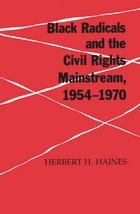 Black British Cultural Studies: A Reader
Edited by Houston A. Baker, Jr., Manthia Diawara, and Ruth H. Lindeborg
University of Chicago Press, 1996 Black British Cultural Studies has attracted significant attention recently in the American academy both as a model for cultural studies generally and as a corrective to reigning constructions of Blackness within African-American studies. This anthology offers the first book-length selection of writings by key figures in this field.
From Stuart Hall's classic study of racially structured societies to an interview by Manthia Diawara with Sonia Boyce, a leading figure in the Black British arts movement, the papers included here have transformed cultural studies through their sustained focus on the issue of race. Much of the book centers on Black British arts, especially film, ranging from a historical overview of Black British cinema to a weighing of the costly burden on Black artists of representing their communities. Other essays consider such topics as race and representation and colonial and postcolonial discourse.
This anthology will be an invaluable and timely resource for everyone interested in cultural studies. It also has much to offer students of anthropology, sociology, media and film studies, and literary criticism.
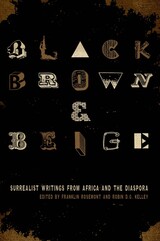 Black, Brown, & Beige: Surrealist Writings from Africa and the Diaspora
Edited by Franklin Rosemont and Robin D.G. Kelley
University of Texas Press, 2009 Surrealism as a movement has always resisted the efforts of critics to confine it to any static definition—surrealists themselves have always preferred to speak of it in terms of dynamics, dialectics, goals, and struggles. Accordingly, surrealist groups have always encouraged and exemplified the widest diversity—from its start the movement was emphatically opposed to racism and colonialism, and it embraced thinkers from every race and nation. Yet in the vast critical literature on surrealism, all but a few black poets have been invisible. Academic histories and anthologies typically, but very wrongly, persist in conveying surrealism as an all-white movement, like other "artistic schools" of European origin. In glaring contrast, the many publications of the international surrealist movement have regularly featured texts and reproductions of works by comrades from Martinique, Haiti, Cuba, Puerto Rico, South America, the United States, and other lands. Some of these publications are readily available to researchers; others are not, and a few fall outside academia's narrow definition of surrealism. This collection is the first to document the extensive participation of people of African descent in the international surrealist movement over the past seventy-five years. Editors Franklin Rosemont and Robin D. G. Kelley aim to introduce readers to the black, brown, and beige surrealists of the world—to provide sketches of their overlooked lives and deeds as well as their important place in history, especially the history of surrealism.
Black Business in the New South: A Social History of the NC Mutual Life Insurance Company
Walter B. Weare
Duke University Press, 1993 At the turn of the century, the North Carolina Mutual Life Insurance Company became the "world's largest Negro business." Located in Durham, North Carolina, which was known as the "Black Wall Street of America," this business came to symbolize the ideas of racial progress, self-help, and solidarity in America. Walter B. Weare's social and intellectual history, originally published in 1973 (University of Illinois Press) and updated here to include a new introduction, still stands as the definitive history of black business in the New South. Drawing on a wide range of sources—including personal papers of the company's leaders and oral history interviews—Weare traces the company's story from its ideological roots in the eighteenth century to its economic success in the twentieth century.
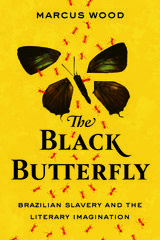 The Black Butterfly: Brazilian Slavery and the Literary Imagination
Marcus Wood
West Virginia University Press, 2019 The Black Butterfly focuses on the slavery writings of three of Brazil’s literary giants—Machado de Assis, Castro Alves, and Euclides da Cunha. These authors wrote in the late nineteenth and early twentieth centuries, as Brazil moved into and then through the 1888 abolition of slavery. Assis was Brazil’s most experimental novelist; Alves was a Romantic poet with passionate liberationist politics, popularly known as “the poet of the slaves”; and da Cunha is known for the masterpiece Os Sertões (The Backlands), a work of genius that remains strangely neglected in the scholarship of transatlantic slavery. Wood finds that all three writers responded to the memory of slavery in ways that departed from their counterparts in Europe and North America, where emancipation has typically been depicted as a moment of closure. He ends by setting up a wider literary context for his core authors by introducing a comparative study of their great literary abolitionist predecessors Luís Gonzaga Pinto da Gama and Joaquim Nabuco. The Black Butterfly is a revolutionary text that insists Brazilian culture has always refused a clean break between slavery and its aftermath. Brazilian slavery thus emerges as a living legacy subject to continual renegotiation and reinvention.
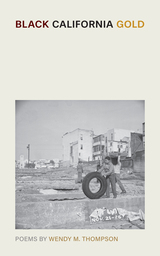 Black California Gold
Wendy M. Thompson
Bucknell University Press, 2025 For numerous migrants who ventured westward in the twentieth century in search of greater opportunities, the glitter of California often proved to be mere fool’s gold—promising easy riches but frequently resulting in dispossession and displacement. Poet Wendy M. Thompson is descended from two of these migrant waves—post-1965 Chinese immigrants and Black southerners of the Second Great Migration—whose presence has permanently transformed the region.
In this arresting debut poetry collection, Thompson traces the past and present of California’s Bay Area, exploring themes of family, migration, girlhood, and identity against a backdrop of urban redevelopment, advanced gentrification, and the erasure of Black communities. Traveling down both familiar highways and obscure side streets, her poems map a region where race, class, and language are just some of the fault lines that divide communities and produce periodic tremors of violence and resistance.
Confronting assimilationist myths of the American Dream, Black California Gold depicts a setting that is less a melting pot than a smelting pot, subjecting different ethnic groups to searing trials and extreme pressures that threaten to break them down entirely. Yet, it also celebrates the Black residents of the Bay Area who have struggled to sustain home and hope amid increasingly desperate conditions.
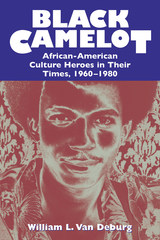 Black Camelot: African-American Culture Heroes in Their Times, 1960-1980
William L. Van Deburg
University of Chicago Press, 1997 In the wake of the Kennedy era, a new kind of ethnic hero emerged within African-American popular culture. Uniquely suited to the times, burgeoning pop icons projected the values and beliefs of the Civil Rights and Black Power movements, and reflected both the possibility and the actuality of a rapidly changing American landscape.
In Black Camelot, William Van Deburg examines the dynamic rise of these new black champions, the social and historical contexts in which they flourished, and their powerful impact on the African-American community.
"Van Deburg manages the enviable feat of writing with flair within a standardized academic framework, covering politics, social issues and entertainment with equal aplomb."—Jonathan Pearl, Jazz Times
"[A] fascinating, thorough account of how African-American icons of the 1960s and '70s have changed the course of American history. . . . An in-depth, even-tempered analysis. . . . Van Deburg's witty, lively and always grounded style entertains while it instructs."—Publishers Weekly
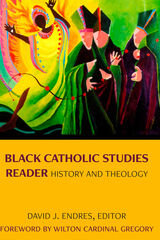 Black Catholic Studies Reader: History and Theology
David J. Endres
Catholic University of America Press, 2021 This first-ever Black Catholic Studies Reader offers an introduction to the theology and history of the Black Catholic experience from those who know it best: Black Catholic scholars, teachers, activists, and ministers. The reader offers a multi-faceted, interdisciplinary approach that illuminates what it means to be Black and Catholic in the United States.
This collection of essays from prominent scholars, both past and present, brings together contributions from theologians M. Shawn Copeland, Kim Harris, Diana Hayes, Bryan Massingale, and C. Vanessa White, and historians Cecilia Moore, Diane Batts Morrow, and Ronald Sharps, and selections from an earlier generation of thinkers and activists, including Thea Bowman, Cyprian Davis, and Clarence Rivers.
Contributions delve into the interlocking fields of history, spirituality, liturgy, and biography. Through their contributions, Black Catholic Studies scholars engage theologies of liberation and the reality of racism, the Black struggle for recognition within the Church, and the distinctiveness of African-inspired spirituality, prayer, and worship.
By considering their racial and religious identities, these select Black Catholic theologians and historians add their voices to the contemporary conversation surrounding culture, race, and religion in America, inviting engagement from students and teachers of the American experience, social commentators and advocates, and theologians and persons of faith.
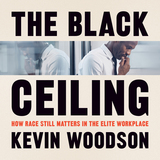 The Black Ceiling: How Race Still Matters in the Elite Workplace
Kevin Woodson
University of Chicago Press, 2023 A revelatory assessment of workplace inequality in high-status jobs that focuses on a new explanation for a pernicious problem: racial discomfort.
America’s elite law firms, investment banks, and management consulting firms are known for grueling hours, low odds of promotion, and personnel practices that push out any employees who don’t advance. While most people who begin their careers in these institutions leave within several years, work there is especially difficult for Black professionals, who exit more quickly and receive far fewer promotions than their White counterparts, hitting a “Black ceiling.”
Sociologist and law professor Kevin Woodson knows firsthand what life at a top law firm feels like as a Black man. Examining the experiences of more than one hundred Black professionals at prestigious firms, Woodson discovers that their biggest obstacle in the workplace isn’t explicit bias but racial discomfort, or the unease Black employees feel in workplaces that are steeped in Whiteness. He identifies two types of racial discomfort: social alienation, the isolation stemming from the cultural exclusion Black professionals experience in White spaces, and stigma anxiety, the trepidation they feel over the risk of discriminatory treatment. While racial discomfort is caused by America’s segregated social structures, it can exist even in the absence of racial discrimination, which highlights the inadequacy of the unconscious bias training now prevalent in corporate workplaces. Firms must do more than prevent discrimination, Woodson explains, outlining the steps that firms and Black professionals can take to ease racial discomfort.
Offering a new perspective on a pressing social issue, The Black Ceiling is a vital resource for leaders at preeminent firms, Black professionals and students, managers within mostly White organizations, and anyone committed to cultivating diverse workplaces.
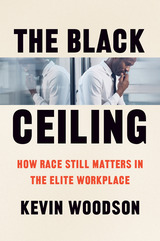 The Black Ceiling: How Race Still Matters in the Elite Workplace
Kevin Woodson
University of Chicago Press, 2023 A revelatory assessment of workplace inequality in high-status jobs that focuses on a new explanation for a pernicious problem: racial discomfort.
America’s elite law firms, investment banks, and management consulting firms are known for grueling hours, low odds of promotion, and personnel practices that push out any employees who don’t advance. While most people who begin their careers in these institutions leave within several years, work there is especially difficult for Black professionals, who exit more quickly and receive far fewer promotions than their White counterparts, hitting a “Black ceiling.”
Sociologist and law professor Kevin Woodson knows firsthand what life at a top law firm feels like as a Black man. Examining the experiences of more than one hundred Black professionals at prestigious firms, Woodson discovers that their biggest obstacle in the workplace isn’t explicit bias but racial discomfort, or the unease Black employees feel in workplaces that are steeped in Whiteness. He identifies two types of racial discomfort: social alienation, the isolation stemming from the cultural exclusion Black professionals experience in White spaces, and stigma anxiety, the trepidation they feel over the risk of discriminatory treatment. While racial discomfort is caused by America’s segregated social structures, it can exist even in the absence of racial discrimination, which highlights the inadequacy of the unconscious bias training now prevalent in corporate workplaces. Firms must do more than prevent discrimination, Woodson explains, outlining the steps that firms and Black professionals can take to ease racial discomfort.
Offering a new perspective on a pressing social issue, The Black Ceiling is a vital resource for leaders at preeminent firms, Black professionals and students, managers within mostly White organizations, and anyone committed to cultivating diverse workplaces.
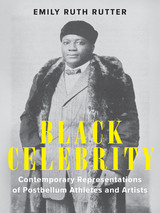 Black Celebrity: Contemporary Representations of Postbellum Athletes and Artists
Emily Ruth Rutter
University of Delaware Press, 2022 Black Celebrity examines representations of postbellum black athletes and artist-entertainers by novelists Caryl Phillips and Jeffery Renard Allen and poets Kevin Young, Frank X Walker, Adrian Matejka, and Tyehimba Jess. Inhabiting the perspectives of boxer Jack Johnson and musicians “Blind Tom” Wiggins and Sissieretta Jones, along with several others, these writers retrain readers’ attention away from athletes’ and entertainers’ overdetermined bodies and toward their complex inner lives. Phillips, Allen, Young, Walker, Matejka, and Jess especially plumb the emotional archive of desire, anxiety, pain, and defiance engendered by the racial hypervisibility and depersonalization that has long characterized black stardom. In the process, these novelists and poets and, in turn, the present book revise understandings of black celebrity history while evincing the through-lines between the postbellum era and our own time.
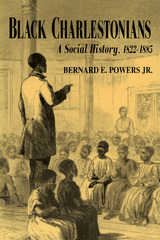 Black Charlestonians: A Social History, 1822-1885
Bernard E. Powers
University of Arkansas Press, 2016 This revisionist work delineates the major social and economic contours of the large black population in the pivotal Southern city of Charleston, South Carolina., historic seaport center for the slave trade. It draws upon census data, manuscript collections, and newspaper accounts to expand our knowledge of this particular community of nineteenth-century black urbanites. Although the federal government codified the rights of African-Americans into law following the Civil War, it was the initiatives taken by black men and women that actually transformed the theoretical benefits of emancipation into clear achievement. Because of its large free black population, Charleston provided a case study of black social class stratification and social mobility even before the war. Reconstruction only emphasized that stratification, and Powers examines in detail the aspirations and concessions that shaped the lives of the newly freed blacks, who were led by a black upper class tat sometimes seemed more inclined to emulate white social mores than act as a vanguard for fundamental social change. Unlike most Reconstruction studies, which concentrate on politics, Black Charlestonians explores the era’s vital socioeconomic challenges for blacks as they emerged into full citizenship in an important city in the South. Choice’s 1996 Outstanding Academic Books List
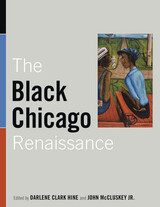 The Black Chicago Renaissance
Edited by Darlene Clark Hine and John McCluskey Jr.
University of Illinois Press, 2012 Beginning in the 1930s, Black Chicago experienced a cultural renaissance that lasted into the 1950s and rivaled the cultural outpouring in the Harlem Renaissance of the 1920s. The contributors to this volume analyze this prolific period of African American creativity in music, performance art, social science scholarship, and visual and literary artistic expression. Unlike Harlem, Chicago was an urban industrial center that gave a unique working class and internationalist perspective to the cultural work being done in Chicago. This collection's various essays discuss the forces that distinguished the Black Chicago Renaissance from the Harlem Renaissance and placed the development of black culture in a national and international context. Among the topics discussed in this volume are Chicago writers Gwendolyn Brooks and Richard Wright, The Chicago Defender and Tivoli Theater, African American music and visual arts, and the American Negro Exposition of 1940. Contributors are Hilary Mac Austin, David T. Bailey, Murry N. DePillars, Samuel A. Floyd Jr., Erik S. Gellman, Jeffrey Helgeson, Darlene Clark Hine, John McCluskey Jr., Christopher Robert Reed, Elizabeth Schlabach, and Clovis E. Semmes.
Black Chicago: The Making of a Negro Ghetto, 1890-1920
Allan H. Spear
University of Chicago Press, 1969 Allan Spear explores here the history of a major Negro community during a crucial thirty-year period when a relatively fluid patter of race relations gave way to a rigid system of segregation and discrimination. This is the first historical study of the ghetto made famous by the sociological classics of St. Clair Drake, E. Franklin Frazier, and others—by the novels of Richard Wright, and by countless blues songs. It was this ghetto that Martin Luther King, Jr., chose to focus on when he turned attention to the racial injustices of the North. Spear, by his objective treatment of the results of white racism, gives an effective, timely reminder of the serious urban problems that are the legacy of prejudice.
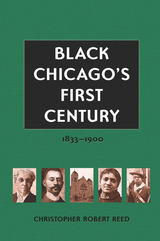 Black Chicago's First Century: 1833-1900
Christopher Robert Reed
University of Missouri Press, 2005 In Black Chicago’s First Century, Christopher Robert Reed provides the first comprehensive study of an African American population in a nineteenth-century northern city beyond the eastern seaboard. Reed’s study covers the first one hundred years of African American settlement and achievements in the Windy City, encompassing a range of activities and events that span the antebellum, Civil War, Reconstruction, and post-Reconstruction periods. The author takes us from a time when black Chicago provided both workers and soldiers for the Union cause to the ensuing decades that saw the rise and development of a stratified class structure and growth in employment, politics, and culture. Just as the city was transformed in its first century of existence, so were its black inhabitants. Methodologically relying on the federal pension records of Civil War soldiers at the National Archives, as well as previously neglected photographic evidence, manuscripts, contemporary newspapers, and secondary sources, Reed captures the lives of Chicago’s vast army of ordinary black men and women. He places black Chicagoans within the context of northern urban history, providing a better understanding of the similarities and differences among them. We learn of the conditions African Americans faced before and after Emancipation. We learn how the black community changed and developed over time: we learn how these people endured—how they educated their children, how they worked, organized, and played. Black Chicago’s First Century is a balanced and coherent work. Anyone with an interest in urban history or African American studies will find much value in this book.
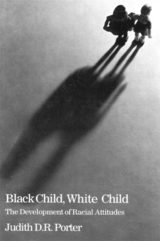 Black Child, White Child: The Developement of Racial Attitudes
Judith Porter
Harvard University Press, 1971 Racial attitudes are learned during the preschool years and directly reflect the attitudes and actions of American society. Using the self-portraits, stories, and doll-play of 400 children 3 to 5 years old, Judith Porter investigated the effects of such sociological variables as age, race, skin color, social class, interracial contact, and sex, both alone and in combination with other variables on the children's racial preferences. She is one of the first to relate these attitudes to actual interaction patterns in integrated kindergartens. Her research sheds new light on the ways in which early encounters with racism and prejudice affect the self-esteem, racial self-concept, and personality development of black children. Her study includes new findings on the effect of social class on the formation of racial attitudes. She concludes with a discussion of the implications of the data for theory, for future research, and for public policy, as well as specific recommendations for the creation of high-quality integrated nursery schools.
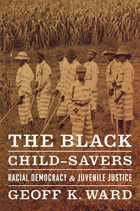 The Black Child-Savers: Racial Democracy and Juvenile Justice
Geoff K. Ward
University of Chicago Press, 2012 During the Progressive Era, a rehabilitative agenda took hold of American juvenile justice, materializing as a citizen-and-state-building project and mirroring the unequal racial politics of American democracy itself. Alongside this liberal "manufactory of citizens,” a parallel structure was enacted: a Jim Crow juvenile justice system that endured across the nation for most of the twentieth century. In The Black Child Savers, the first study of the rise and fall of Jim Crow juvenile justice, Geoff Ward examines the origins and organization of this separate and unequal juvenile justice system. Ward explores how generations of “black child-savers” mobilized to challenge the threat to black youth and community interests and how this struggle grew aligned with a wider civil rights movement, eventually forcing the formal integration of American juvenile justice. Ward’s book reveals nearly a century of struggle to build a more democratic model of juvenile justice—an effort that succeeded in part, but ultimately failed to deliver black youth and community to liberal rehabilitative ideals. At once an inspiring story about the shifting boundaries of race, citizenship, and democracy in America and a crucial look at the nature of racial inequality, The Black Child Savers is a stirring account of the stakes and meaning of social justice.
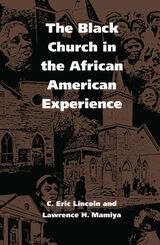 The Black Church in the African American Experience
C. Eric Lincoln and Lawrence H. Mamiya
Duke University Press, 1990 Black churches in America have long been recognized as the most independent, stable, and dominant institutions in black communities. In The Black Church in the African American Experience, based on a ten-year study, is the largest nongovernmental study of urban and rural churches ever undertaken and the first major field study on the subject since the 1930s.
Drawing on interviews with more than 1,800 black clergy in both urban and rural settings, combined with a comprehensive historical overview of seven mainline black denominations, C. Eric Lincoln and Lawrence H. Mamiya present an analysis of the Black Church as it relates to the history of African Americans and to contemporary black culture. In examining both the internal structure of the Church and the reactions of the Church to external, societal changes, the authors provide important insights into the Church’s relationship to politics, economics, women, youth, and music.
Among other topics, Lincoln and Mamiya discuss the attitude of the clergy toward women pastors, the reaction of the Church to the civil rights movement, the attempts of the Church to involve young people, the impact of the black consciousness movement and Black Liberation Theology and clergy, and trends that will define the Black Church well into the next century.
This study is complete with a comprehensive bibliography of literature on the black experience in religion. Funding for the ten-year survey was made possible by the Lilly Endowment and the Ford Foundation.
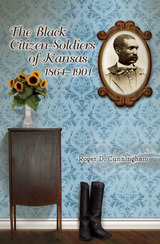 The Black Citizen-Soldiers of Kansas, 1864-1901
Roger D. Cunningham
University of Missouri Press, 2008 Whether slaves or free men, African Americans were generally excluded from military service until Emancipation. Many Americans know the story of the United States Colored Troops, who broke racial barriers in Civil War combat, and of the “buffalo soldiers,” who served in the West after that conflict, but African Americans also served in segregated militia units in twenty-three states. This book tells the story of that experience in Kansas.
Roger Cunningham examines a lost history to show that, in addition to black regulars, hundreds of other black militiamen and volunteers from the Sunflower State provided military service from the Civil War until the dawn of the twentieth century. He tells how African Americans initially filled segregated companies hurriedly organized to defend the state from the threat of Confederate invasion, with some units ordered into battle around Kansas City. Then after the state constitution was amended to admit blacks into the Kansas National Guard, but its generals still refused to integrate, blacks served in reserve militia and independent companies and in all-black regiments that were raised for the Spanish-American and Philippine wars.
Cunningham has researched service records, African American newspapers, and official correspondence to give voice to these citizen-soldiers. He shares stories of real people like William D. Matthews, a captain in the First Kansas Colored Infantry who was refused a commission when his regiment was mustered into the Union army; Charles Grinsted, who commanded the first black militia company after the Civil War; and other unsung heroes.
More than a military history, Cunningham’s account records the quest of black men, many of them former slaves, for inclusion in American society. Many came from the bottom of the socioeconomic order and found that as militiamen they could gain respect within their communities. And by marching in public ceremonies and organizing fund-raising activities to compensate for lack of financial support from the state, they also strengthened the ties that bound African American communities together. The Black Citizen-Soldiers of Kansas, 1864–1901 broadens the story of these volunteers beyond the buffalo soldiers, telling how they served their state and country in both peace and war. It opens a new chapter in history both for the state and for African Americans throughout the United States.
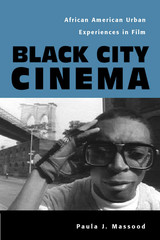 Black City Cinema: African American Urban Experiences In Film
Paula J. Massood
Temple University Press, 2003 In Black City Cinema, Paula Massood shows how popular films reflected the massive social changes that resulted from the Great Migration of African Americans from the rural South to cities in the North, West, and Mid-West during the first three decades of the twentieth century. By the onset of the Depression, the Black population had become primarily urban, transforming individual lives as well as urban experience and culture.Massood probes into the relationship of place and time, showing how urban settings became an intrinsic element of African American film as Black people became more firmly rooted in urban spaces and more visible as historical and political subjects. Illuminating the intersections of film, history, politics, and urban discourse, she considers the chief genres of African American and Hollywood narrative film: the black cast musicals of the 1920s and the "race" films of the early sound era to blaxploitation and hood films, as well as the work of Spike Lee toward the end of the century. As it examines such a wide range of films over much of the twentieth century, this book offers a unique map of Black representations in film.
 Black Columbiad: Defining Moments in African American Literature and Culture
Werner Sollors
Harvard University Press, 1994 After a long and painful transatlantic passage, African captives reached a continent they hadn’t even known existed, where they were treated in ways that broke every law of civilization as they understood it. This was the discovery of America for a good number of our ancestors, one quite different from the “paradise” Columbus heralded but no less instrumental in shaping the country’s history. What finding the New World meant to those who never sought it, and how they made the hostile, unfamiliar continent their own, is the subject of this volume, the first truly international collection of essays on African American literature and culture.
Distinguished scholars, critics, and writers from around the world gather here to examine a great variety of moments that have defined the African American experience. What were the values, images, and vocabulary that accompanied African “explorers” on their terrifying Columbiad, and what new forms did they develop to re-invent America from a black perspective? How did an extremely heterogeneous group of African pioneers remake themselves as African Americans? The authors search out answers in such diverse areas as slavery, the transatlantic tradition, urbanization, rape and lynching, gender, Paris, periodicals, festive moments, a Berlin ethnologist, Afrocentrism, Mark Twain, Spain, Casablanca, orality, the 1960s, Black–Jewish relations, television images, comedy, and magic. William Wells Brown, Frank Webb, W. E. B. Du Bois, Alain Locke, Zora Neale Hurston, Richard Wright, Etheridge Knight, Ishmael Reed, Toni Morrison, Gloria Naylor, and Charles Johnson are among the many writers they discuss in detail. The result, a landmark text in African American studies, reveals, within a broader context than ever before, the great and often unpredictable variety of complex cultural forces that have been at work in black America.
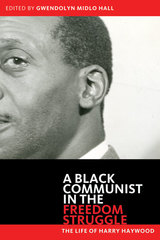 Black Communist in the Freedom Struggle: The Life of Harry Haywood
Harry Haywood
University of Minnesota Press, 2012 Mustering out of the U.S. army in 1919, Harry Haywood stepped into a battle that was to last the rest of his life. Within months, he found himself in the middle of one of the bloodiest race riots in U.S. history and realized that he’d been fighting the wrong war—the real enemy was right here at home. This book is Haywood’s eloquent account of coming of age as a black man in twentieth-century America and of his political awakening in the Communist Party. For all its cultural and historical interest, Harry Haywood’s story is also noteworthy for its considerable narrative drama. The son of parents born into slavery, Haywood tells how he grew up in Omaha, Nebraska, found his first job as a shoeshine boy in Minneapolis, then went on to work as a waiter on trains and in restaurants in Chicago. After fighting in France during the war, he studied how to make revolutions in Moscow during the 1920s, led the Communist Party’s move into the Deep South in 1931, helped to organize the campaign to free the Scottsboro Boys, worked with the Sharecroppers’ Union, supported protests in Chicago against Mussolini’s invasion of Ethiopia, fought with the International Brigades in Spain, served in the Merchant Marines during World War II, and continued to fight for the right of self-determination for the Afro-American nation in the United States until his death in 1985. This new edition of his classic autobiography, Black Bolshevik, introduces American readers to the little-known story of a brilliant thinker, writer, and activist whose life encapsulates the struggle for freedom against all odds of the New Negro generation that came of age during and after World War I.
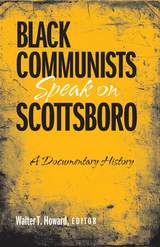 Black Communists Speak on Scottsboro: A Documentary History
edited by Walter T. Howard
Temple University Press, 2007 On March 25, 1931, Alabama police detained nine young African AMerican men at a railroad stop not far from Scottsboro. In the process, they encountered two white women -- who promptly accused the young men of raping them. Soon after, all-white juries found the nine youths guilty and eight of them were sentenced to death. Although many Americans were outraged by the injustices of the case, the loudest voices raised in protest were those of members of the American Communist Party.
Many white Communists spoke out, but black Communists took the lead in organizing public protests and legal responses. As this surprising book makes clear, they were acting at the direction of the Communist International (Comintern), which had directed them to address the "Negro problem." Now, with the opening of formerly inaccessible Communist party archives, this collection of primary documents reveals the little-known but major roles played by black Communists in the case of "the Scottsboro Boys."
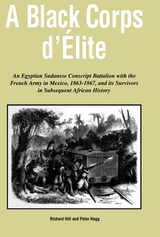 A Black Corps d'Elite: An Egyptian Sudanese Conscript Battalion with the French Army in Mexico, 1863-1867, and its Survivors in Subsequent African History
Richard Hill
Michigan State University Press, 1995 For several years, the armies of Napoleon III deployed some 450 Muslim Sudanese slave soldiers in Veracruz, the port of Mexico City. As in the other case of Western hemisphere military slavery (the West India Regiments, a British unit in existence 1795-1815), the Sudanese were imported from Africa in the hopes that they would better survive the tropical diseases that so terribly afflicted European soldiers. In both cases, the Africans did indeed fulfill these expectations. The mixture of cultures embodied by this event has piqued the interest of several historians, so it is by no means unknown. Hill and Hogg provide a particularly thorough account of this exotic interlude, explaining its background, looking in detail at the battle record in Mexico, and figuring out who exactly made up the battalion. Much in their account is odd and interesting, for example, the Sudanese superiority to Austrian troops and their festive nine-day spree in Paris on the emperor's tab. The authors also assess the episode's longer-term impact on the Sudan, showing that the veterans of Mexico, having learnt much from their extended exposure to French military practices, rose quickly in the ranks, then taught these methods to others.
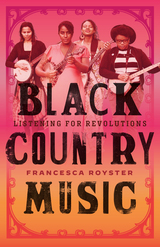 Black Country Music: Listening for Revolutions
Francesca T. Royster
University of Texas Press, 2022 2023 Ralph J. Gleason Music Book Award, Rock & Roll Hall of Fame
2024 Woody Guthrie Book Award, International Association for the Study of Popular Music-US Branch (IASPM-US)
2023 Certificate of Merit, ARSC Awards for Excellence in Historical Recorded Sound Research, Association for Recorded Sound Collections
2023 The Judy Tsou Critical Race Studies Award, American Musicological Society
How Black musicians have changed the country music landscape and brought light to Black creativity and innovation.
After a century of racist whitewashing, country music is finally reckoning with its relationship to Black people. In this timely work—the first book on Black country music by a Black writer—Francesca Royster uncovers the Black performers and fans, including herself, who are exploring the pleasures and possibilities of the genre. Informed by queer theory and Black feminist scholarship, Royster’s book elucidates the roots of the current moment found in records like Tina Turner’s first solo album, Tina Turns the Country On! She reckons with Black “bros” Charley Pride and Darius Rucker, then chases ghosts into the future with Valerie June. Indeed, it is the imagination of Royster and her artists that make this music so exciting for a genre that has long been obsessed with the past. The futures conjured by June and others can be melancholy, and are not free of racism, but by centering Black folk Royster begins to understand what her daughter hears in the banjo music of Our Native Daughters and the trap beat of Lil Nas X’s “Old Town Road.” A Black person claiming country music may still feel a bit like a queer person coming out, but, collectively, Black artists and fans are changing what country music looks and sounds like—and who gets to love it.
The Black Cow's Footprint: Time, Space and Music in the Lives of the Kotas of South India
Richard K. Wolf
University of Illinois Press, 2006 A black cow leads the members of a South Indian hill tribe, the Kotas, to the Nilgiri Hills and, with its hoof, indicates where to found each village. This footprint acts as a moral center of gravity, an important place for music-making, dancing, and other rituals. Places such as this, and moments in time, serve as physical and moral “anchors” for the Kota community. In this book, Richard K. Wolf explores how the Kotas “anchor” their musical and other activities around places and significant moments in time and, in the process, constitute themselves as individuals and as a group. This volume also includes a CD of Richard Wolf’s Kota field recordings.
 Black Critics and Kings: The Hermeneutics of Power in Yoruba Society
Andrew Apter
University of Chicago Press, 1992 How can we account for the power of ritual? This is the guiding question of Black Critics and Kings, which examines how Yoruba forms of ritual and knowledge shape politics, history, and resistance against the state. Focusing on "deep" knowledge in Yoruba cosmology as an interpretive space for configuring difference, Andrew Apter analyzes ritual empowerment as an essentially critical practice, one that revises authoritative discourses of space, time, gender, and sovereignty to promote political—-and even violent—-change.
Documenting the development of a Yoruba kingdom from its nineteenth-century genesis to Nigeria's 1983 elections and subsequent military coup, Apter identifies the central role of ritual in reconfiguring power relations both internally and in relation to wider political arenas. What emerges is an ethnography of an interpretive vision that has broadened the horizons of local knowledge to embrace Christianity, colonialism, class formation, and the contemporary Nigerian state. In this capacity, Yoruba òrìsà worship remains a critical site of response to hegemonic interventions.
With sustained theoretical argument and empirical rigor, Apter answers critical anthropologists who interrogate the possibility of ethnography. He reveals how an indigenous hermeneutics of power is put into ritual practice—-with multiple voices, self-reflexive awareness, and concrete political results. Black Critics and Kings eloquently illustrates the ethnographic value of listening to the voice of the other, with implications extending beyond anthropology to engage leading debates in black critical theory.
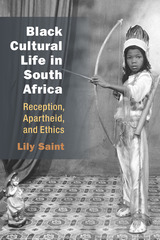 Black Cultural Life in South Africa: Reception, Apartheid, and Ethics
Lily Saint
University of Michigan Press, 2018 Under apartheid, black South Africans experienced severe material and social disadvantages occasioned by the government’s policies, and they had limited time for entertainment. Still, they closely engaged with an array of textual and visual cultures in ways that shaped their responses to this period of ethical crisis. Marshaling forms of historical evidence that include passbooks, memoirs, American “B” movies, literary and genre fiction, magazines, and photocomics, Black Cultural Life in South Africa considers the importance of popular genres and audiences in the relationship between ethical consciousness and aesthetic engagement.
This study provocatively posits that states of oppression, including colonial and postcolonial rule, can elicit ethical responses to imaginative identification through encounters with popular culture, and it asks whether and how they carry over into ethical action. Its consideration of how globalized popular culture “travels” not just in material form, but also through the circuits of the imaginary, opens a new window for exploring the ethical and liberatory stakes of popular culture. Each chapter focuses on a separate genre, yet the overall interdisciplinary approach to the study of genre and argument for an expansion of ethical theory that draws on texts beyond the Western canon speak to growing concerns about studying genres and disciplines in isolation. Freed from oversimplified treatments of popular forms—common to cultural studies and ethical theory alike—this book demonstrates that people can do things with mass culture that reinvigorate ethical life.
Lily Saint’s new volume will interest Africanists across the humanities and the social sciences, and scholars of Anglophone literary, globalization, and cultural studies; race; ethical theories and philosophies; film studies; book history and material cultures; and the burgeoning field of comics and graphic novels.
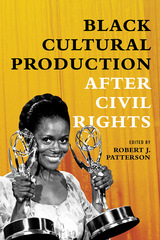 Black Cultural Production after Civil Rights
Edited by Robert J. Patterson
University of Illinois Press, 2019 The post-civil rights era of the 1970s offered African Americans an all-too-familiar paradox. Material and symbolic gains contended with setbacks fueled by resentment and reaction. African American artists responded with black approaches to expression that made history in their own time and continue to exercise an enormous influence on contemporary culture and politics. This collection's fascinating spectrum of topics begins with the literary and cinematic representations of slavery from the 1970s to the present. Other authors delve into visual culture from Blaxploitation to the art of Betye Saar to stage works like A Movie Star Has to Star in Black and White as well as groundbreaking literary works like Corregidora and Captain Blackman. A pair of concluding essays concentrate on institutional change by looking at the Seventies surge of black publishing and by analyzing Ntozake Shange's for colored girls. . . in the context of current controversies surrounding sexual violence. Throughout, the writers reveal how Seventies black cultural production anchors important contemporary debates in black feminism and other issues while spurring the black imagination to thrive amidst abject social and political conditions. Contributors: Courtney R. Baker, Soyica Diggs Colbert, Madhu Dubey, Nadine Knight, Monica White Ndounou, Kinohi Nishikawa, Samantha Pinto, Jermaine Singleton, Terrion L. Williamson, and Lisa Woolfork
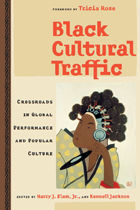 Black Cultural Traffic: Crossroads in Global Performance and Popular Culture
Edited by Harry J. Elam, Jr. and Kennell Jackson
University of Michigan Press, 2005
"A shrewdly designed, generously expansive, timely contribution to our understanding of how 'black' expression continues to define and defy the contours of global (post)modernity. The essays argue persuasively for a transnational ethos binding disparate African and diasporic enactments, and together provide a robust conversation about the nature, history, future, and even possibility of 'blackness' as a distinctive mode of cultural practice."
--Kimberly Benston, author of Performing Blackness
"Black Cultural Traffic is nothing less than our generation's manifesto on black performance and popular culture. With a distinguished roster of contributors and topics ranging across academic disciplines and the arts (including commentary on film, music, literature, theater, television, and visual cultures), this volume is not only required reading for scholars serious about the various dimensions of black performance, it is also a timely and necessary teaching tool. It captures the excitement and intellectual innovation of a field that has come of age. Kudos!"
--Dwight A. McBride, author of Why I Hate Abercrombie & Fitch
"The explosion of interest in black popular culture studies in the past fifteen years has left a significant need for a reader that reflects this new scholarly energy. Black Cultural Traffic answers that need."
--Mark Anthony Neal, author of Songs in the Key of Black Life
"A revolutionary anthology that will be widely read and taught. It crisscrosses continents and cultures and examines confluences and influences of black popular culture -- music, dance, theatre, television, fashion and film. It also adds a new dimension to current discussions of racial, ethnic, and national identity."
--Horace Porter, author of The Making of a Black Scholar
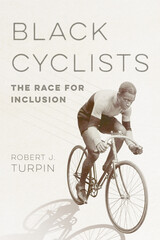 Black Cyclists: The Race for Inclusion
Robert J. Turpin
University of Illinois Press, 2024 Cycling emerged as a sport in the late 1870s, and from the beginning, Black Americans rode alongside and raced against white competitors. Robert J. Turpin sheds light on the contributions of Black cyclists from the sport’s early days through the cementing of Jim Crow laws during the Progressive Era. As Turpin shows, Black cyclists used the bicycle not only as a vehicle but as a means of social mobility--a mobility that attracted white ire. Prominent Black cyclists like Marshall “Major” Taylor and Kitty Knox fought for equality amidst racist and increasingly pervasive restrictions. But Turpin also tells the stories of lesser-known athletes like Melvin Dove, whose actions spoke volumes about his opposition to the color line, and Hardy Jackson, a skilled racer forced to turn to stunt riding in vaudeville after Taylor became the only non-white permitted to race professionally in the United States. Eye-opening and long overdue, Black Cyclists uses race, technology, and mobility to explore a forgotten chapter in cycling history.
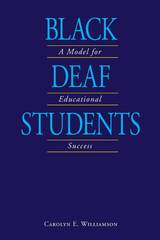 Black Deaf Students: A Model for Educational Success
Carolyn E. Williamson
Gallaudet University Press, 2007 Contemporary research has identified resilience — the ability to rebound and learn despite obstacles and adversities — as a key element to success in school. Black Deaf Students: A Model for Educational Success searches out ways to develop, reinforce, and alter the factors that encourage resilience in African American deaf and hard of hearing students. To find the individual characteristics and outside influences that foster educational achievement, author Carolyn E. Williamson conducted extensive interviews with nine African American deaf and hard of hearing adults who succeeded in high school and postsecondary programs.
Until now, the majority of studies of African American deaf and hard of hearing students concentrated upon their underachievement. The only success stories available involved high-achieving African American hearing students. To create an effective model in Black Deaf Students, Williamson focuses on the factors that contributed to her subjects’ successes in postsecondary programs, what they viewed as obstacles and how they overcame them, and their recommendations for facilitating graduation from postsecondary programs. Her work gives “voice” to a group rarely heard in research, which enables readers to view them as a heterogeneous rather than homogeneous group. Their stories provide vital information for parents, school personnel, community stakeholders, and those enrolled in education and mental health preparation programs. In addition, the insights about how these adults succeeded can be useful in facilitating positive outcomes for students who are going into two-year colleges, vocational training, and work settings.
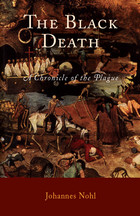 The Black Death: A Chronicle of the Plague
Johannes Nohl
Westholme Publishing, 2005 A History of the Most Catastrophic Plague Through Contemporary Accounts and How Humans Reacted
Hailed by the New York Times as "unusually interesting both as history and sociological study," The Black Death: A Chronicle of the Plague traces the ebb and flow of European pandemics over the course of centuries through translations of contemporary accounts. Originally published in 1926 and now in paperback for the first time, Nohl's volume is unique for its geographical and historical scope as well as its combination of detailed accounts and overarching contemporary views of the history of the plague in Europe, a disease that claimed nearly 40 million people during the fourteenth century alone. With current concerns about pandemics, The Black Death provides lessons on how humans reacted to and survived catastrophic loss of life to disease.
Contents
Preface
1. The Aspect of the Plague
2. The Precursors of the Plague
3. The Medical Profession and the Plague
4. Plague Remedies
5. Administrative Precautions
6. Attitude of the Church
7. The Diabolical Element of the Plague
8. Persecutions of the Jews
9. The Erotic Element of the Plague
10. The Flagellants
11. Choreomania and Children's Pilgrimages
12. Life Victorious
Bibliography
Geographical Index
Index of Persons
The Black Death and the Transformation of the West
David Herlihy
Harvard University Press, 1997 In this small book David Herlihy makes subtle and subversive inquiries that challenge historical thinking about the Black Death. Looking beyond the view of the plague as unmitigated catastrophe, Herlihy finds evidence for its role in the advent of new population controls, the establishment of universities, the spread of Christianity, the dissemination of vernacular cultures, and even the rise of nationalism. This book, which displays a distinguished scholar's masterly synthesis of diverse materials, reveals that the Black Death can be considered the cornerstone of the transformation of Europe.
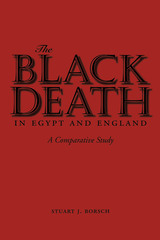 The Black Death in Egypt and England: A Comparative Study
By Stuart J. Borsch
University of Texas Press, 2005 Throughout the fourteenth century AD/eighth century H, waves of plague swept out of Central Asia and decimated populations from China to Iceland. So devastating was the Black Death across the Old World that some historians have compared its effects to those of a nuclear holocaust. As countries began to recover from the plague during the following century, sharp contrasts arose between the East, where societies slumped into long-term economic and social decline, and the West, where technological and social innovation set the stage for Europe's dominance into the twentieth century. Why were there such opposite outcomes from the same catastrophic event? In contrast to previous studies that have looked to differences between Islam and Christianity for the solution to the puzzle, this pioneering work proposes that a country's system of landholding primarily determined how successfully it recovered from the calamity of the Black Death. Stuart Borsch compares the specific cases of Egypt and England, countries whose economies were based in agriculture and whose pre-plague levels of total and agrarian gross domestic product were roughly equivalent. Undertaking a thorough analysis of medieval economic data, he cogently explains why Egypt's centralized and urban landholding system was unable to adapt to massive depopulation, while England's localized and rural landholding system had fully recovered by the year 1500.
 Black Designers in Chicago: Culture and Community in the Twentieth Century
Edited by Chris Dingwall, David Hartt, and Daniel Schulman
University of Chicago Press, 2026 A richly illustrated book focused on Black designers, how they shaped the history of modern design, and how their designs in turn influenced modern Black life.
In twentieth-century Chicago, generations of Black artisans, craftspeople, art educators, clothing makers, commercial illustrators, sign painters, furniture makers, beauticians, graphic designers, art directors, and screen printers made and remade the city into an energetic center for modern design. Ambitious, enterprising, and resolutely modern, these Black designers were workers and intellectuals, activists and entrepreneurs. They created works for commercial and everyday use and helped to build community institutions such as the South Side Community Art Center and businesses like the Johnson Publishing Company. Their works ranged from branding and housewares for major corporations to pamphlets and posters made in the name of civil rights and Black Power. Together, they made Black Chicago into a dynamic design scene, working against racism in their professions while embracing the possibilities of design as a medium of social change.
This book is the first to chronicle their collective history while also celebrating their influence on design as well as African American culture more broadly. Based on extensive archival research and building on a major 2018 exhibition, Black Designers in Chicago presents essays by experts in African American history and design. The book features illustrations of a stunning variety of works—from graphic design to screenprints to textiles and household wares—placing African Americans at the center of modern design history, while highlighting the role of design in the cultural history of Black Chicago.
 Black Detroit and the Rise of the UAW
August Meier and Elliott Rudwick
University of Michigan Press, 2007 For almost two decades, August Meier and Elliott Rudwick have roamed the frontier of Afro-American history, blazing trails that others have followed. This book forges a solid link between race and class conflict in the twentieth century.---Ira Berlin, The Nation"This fact-filled study is essential to students of the labor and civil rights movements."---David Kusnet, The New Republic"A fascinating slice of history illustrating important race and class issues that are still with us."---Library Journal"By ignoring the conventional lines between labor and black history, Meier and Rudwick have found an unexplored middle ground---the net of relations between the black community and white economic institutions---that shaped the working life of blacks in Detroit's auto plants. This is a major achievement."---David Brody, Professor Emeritus of History, University of California, Davis". . . an important work . . . one of the first to apply the nitty-gritty of social and institutional history to 20th century African American and labor history." ---Eric Arnesen, University of Illinois at ChicagoBlack Detroit and the Rise of the UAW is essential reading for historians of labor and race in America, as well those interested in Detroit's importance as a crucible for American urban history.
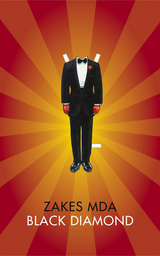 Black Diamond
Zakes Mda
Seagull Books, 2014 In this novel by celebrated South African writer Zakes Mda, Kristin Uys, a tough magistrate who lives alone with her cat in the Roodepoort district of Johannesburg, goes on a one-woman crusade to wipe out prostitution in her town. Her reasons are personal, and her zeal is fierce. Her main targets are the Visagie Brothers, Stevo and Shortie, who run a brothel, and although she fails to take down the entire establishment, she manages to nail Stevo for contempt of court, serving him a six-month sentence. From Diepkloof Prison, the outraged Stevo orchestrates his revenge against the magistrate, aided and abetted by the rather inept Shortie and his former nanny, Aunt Magda.
Kristin receives menacing phone calls and her home is invaded and vandalized—even her cat isn’t spared the threats—and the chief magistrate has no choice but to assign a bodyguard to protect her. To Kristin’s consternation, security guard Don Mateza moves into her home and trails her everywhere. This new arrangement doesn’t suit Don’s longtime girlfriend Tumi, a former model and successful businesswoman, who is intent on turning Don into a Black Diamond—a member of the wealthy new black South African middle class. And Don soon finds that his new assignment has unexpected complications that Tumi simply does not understand.
In Black Diamond, Mda tackles every conceivable South African stereotype, skillfully turning them upside down and exposing their ironies—often hilariously. This is a clever, quirky novel, in which Mda captures the essence of contemporary life in a fast-changing urban world.
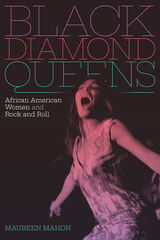 Black Diamond Queens: African American Women and Rock and Roll
Maureen Mahon
Duke University Press, 2020 African American women have played a pivotal part in rock and roll—from laying its foundations and singing chart-topping hits to influencing some of the genre's most iconic acts. Despite this, black women's importance to the music's history has been diminished by narratives of rock as a mostly white male enterprise. In Black Diamond Queens, Maureen Mahon draws on recordings, press coverage, archival materials, and interviews to document the history of African American women in rock and roll between the 1950s and the 1980s. Mahon details the musical contributions and cultural impact of Big Mama Thornton, LaVern Baker, Betty Davis, Tina Turner, Merry Clayton, Labelle, the Shirelles, and others, demonstrating how dominant views of gender, race, sexuality, and genre affected their careers. By uncovering this hidden history of black women in rock and roll, Mahon reveals a powerful sonic legacy that continues to reverberate into the twenty-first century.
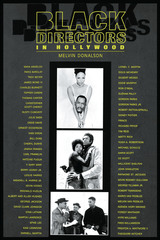 Black Directors in Hollywood
By Melvin Donalson
University of Texas Press, 2003 Hollywood film directors are some of the world's most powerful storytellers, shaping the fantasies and aspirations of people around the globe. Since the 1960s, African Americans have increasingly joined their ranks, bringing fresh insights to movie characterizations, plots, and themes and depicting areas of African American culture that were previously absent from mainstream films. Today, black directors are making films in all popular genres, while inventing new ones to speak directly from and to the black experience. This book offers a first comprehensive look at the work of black directors in Hollywood, from pioneers such as Gordon Parks, Melvin Van Peebles, and Ossie Davis to current talents including Spike Lee, John Singleton, Kasi Lemmons, and Carl Franklin. Discussing 67 individuals and over 135 films, Melvin Donalson thoroughly explores how black directors' storytelling skills and film techniques have widened both the thematic focus and visual style of American cinema. Assessing the meanings and messages in their films, he convincingly demonstrates that black directors are balancing Hollywood's demand for box office success with artistic achievement and responsibility to ethnic, cultural, and gender issues.
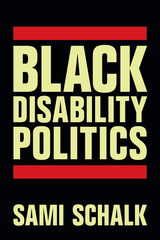 Black Disability Politics
Sami Schalk
Duke University Press, 2022 In Black Disability Politics Sami Schalk explores how issues of disability have been and continue to be central to Black activism from the 1970s to the present. Schalk shows how Black people have long engaged with disability as a political issue deeply tied to race and racism. She points out that this work has not been recognized as part of the legacy of disability justice and liberation because Black disability politics differ in language and approach from the mainstream white-dominant disability rights movement. Drawing on the archives of the Black Panther Party and the National Black Women’s Health Project alongside interviews with contemporary Black disabled cultural workers, Schalk identifies common qualities of Black disability politics, including the need to ground public health initiatives in the experience and expertise of marginalized disabled people so that they can work in antiracist, feminist, and anti-ableist ways. Prioritizing an understanding of disability within the context of white supremacy, Schalk demonstrates that the work of Black disability politics not only exists but is essential to the future of Black liberation movements.
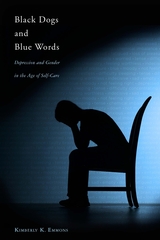 Black Dogs and Blue Words: Depression and Gender in the Age of Self-Care
Kimberly K. Emmons
Rutgers University Press, 2014 His "black dog"--that was how Winston Churchill referred to his own depression. Today, individuals with feelings of sadness and irritability are encouraged to "talk to your doctor." These have become buzz words in the aggressive promotion of wonder-drug cures since 1997, when the Food and Drug Administration changed its guidelines for the marketing of prescription pharmaceuticals.
Black Dogs and Blue Words analyzes the rhetoric surrounding depression. Kimberly K. Emmons maintains that the techniques and language of depression marketing strategies--vague words such as "worry," "irritability," and "loss of interest"--target women and young girls and encourage self-diagnosis and self-medication. Further, depression narratives and other texts encode a series of gendered messages about health and illness.
As depression and other forms of mental illness move from the medical-professional sphere into that of the consumer-public, the boundary at which distress becomes disease grows ever more encompassing, the need for remediation and treatment increasingly warranted. Black Dogs and Blue Words demonstrates the need for rhetorical reading strategies as one response to these expanding and gendered illness definitions.
Black Doves Speak: Herodotus and the Languages of Barbarians
Rosaria Munson
Harvard University Press, 2005 In Greek thought, barbaroi are utterers of unintelligible or inarticulate sounds. What importance does the text of Herodotus's Histories attribute to language as a criterion of ethnic identity? The answer to this question illuminates the empirical foundations of Herodotus's pluralistic worldview. The first translator of cultures also translates, describes, and evaluates foreign speech to a degree unparalleled by other Greek ancient authors. For Herodotus, language is an area of interesting but surprisingly unproblematic difference, which he offers to his audience as a model for coming to terms in a neutral way with other, more emotionally charged, cultural differences.
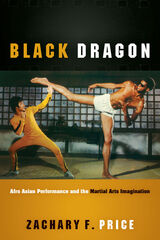 Black Dragon: Afro Asian Performance and the Martial Arts Imagination
Zachary F. Price
Ohio State University Press, 2022 In Black Dragon: Afro Asian Performance and the Martial Arts Imagination, Zachary F. Price illuminates martial arts as a site of knowledge exchange between Black, Asian, and Asian American people and cultures to offer new insights into the relationships among these historically marginalized groups. Drawing on case studies that include Kareem Abdul-Jabbar’s appearance in Bruce Lee’s film Game of Death, Ron van Clief and the Black Panther Party for Self-Defense, the Wu-Tang Clan, and Chinese American saxophonist Fred Ho, Price argues that the regular blending and borrowing between their distinct cultural heritages is healing rather than appropriative. His analyses of performance, power, and identity within this cultural fusion demonstrate how, historically, urban working-class Black men have developed community and practiced self-care through the contested adoption of Asian martial arts practice. By directing his analysis to this rich but heretofore understudied vein of American cultural exchange, Price not only broadens the scholarship around sites of empowerment via such exchanges but also offers a compelling example of nonessentialist emancipation for the twenty-first century.
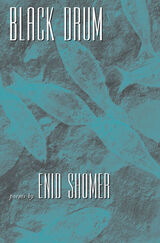 Black Drum
Enid Shomer
University of Arkansas Press, 1997 In Black Drum, Enid Shomer fuses mind with body, knowledge with physical being, and affirms the capacity of language to accomplish this fusion. With clearly fashioned images, her focus often narrows on close particulars or leaps to wide angles, as in these lines from the title poem in which the narrator is battling a fish: We had been struggling for ten
minutes—a lifetime—over whose world
would prevail: his, with its purled
edges and continuous center, or mine
with its yin and yang,
its surface incised into sky
and sea, the land like a scar
between. The characters in Shomer’s poems discover the ceaseless motion of living in the body and the inevitability of decay. In “Notes from the Sketch book of Gustav Klimt,” Shomer boldly says, “I have always balked / at the purely decorative, / but then I saw that the symbolic / could stir us by its absence.” Black Drum insists that life on earth speaks of transformation and transience; epiphany can happen any where, with “schemes illegal and grand” with slot machines, race horses, dead or estranged relatives, and lost love. Enid Shomer signals us to make the most of life, despite our limitations and in the face of bewildering catastrophe.
Black Eagle Child: The Facepaint Narratives
Ray A. Young Bear
University of Iowa Press, 1992 A candid, poetic account of childhood and young manhood through the eyes of a Native American, this vivid narrative is destined to become a central moral text for our time. Through the persona of Edgar Bearchild—a member of the Black Eagle Child Settlement—Ray A. Young Bear takes readers on an unforgettable “journey of words” as he documents grief and anguish countered by an abundance of humor, pride, and insight.
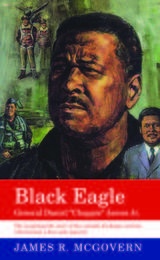 Black Eagle: General Daniel "Chappie" James Jr.
James R. Mcgovern
University of Alabama Press, 2002 The success story of a much-decorated fighter pilot who overcame poverty and racism to become America's first African-American four-star general. Born in Pensacola, Florida, the youngest of seventeen children in a relatively poor family, "Chappie" James (1920-1978) rose to attain the rank of four-star general-the highest rank of the peacetime American military. His parents had early on imbued him with personal and national pride and a singular drive that motivated him his whole life. At Tuskegee Institute, James enrolled in the Army Air Corps unit formed to train black pilots. After combat service in World War II, James became the leader of a fighter group in the Korean War, during which he developed innovative tactics for providing close air support for advancing ground forces. He served with distinction in Vietnam and then became a public affairs officer in the Department of Defense. Between 1970 and 1974, James served as the Pentagon's chief spokesman to youth and civic organizations. General James's importance transcends his unprecedented achievements as an African American in the military and his role as a spokesman for the patriotic community. He was an early and important proponent of black self-improvement through education, training, and the tireless pursuit of excellence. He became the very embodiment of the American dream.
First published in 1985 in hardcover, this reissue of Black Eagle in paperback makes the inspiring story of a notable Tuskegee airman available again.
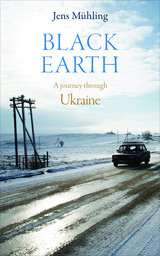 Black Earth: A Journey through Ukraine
Jens Mühling
Haus Publishing, 2018 An in-depth exploration of Ukraine through encounters with the many different people who live there.
“Will someone pay for the spilled blood? No. Nobody.” Mikhail Bulgakov composed this ominous and prophetic phrase in Kiev amid the turmoil of the Russian civil war. Since then, Ukrainian borders have shifted constantly, and its people have suffered numerous military foreign interventions. Ukraine has only existed as an independent state since 1991, and what exactly it was before then is controversial among its people as well as its European neighbors.
In Black Earth: A Journey through the Ukraine, journalist and celebrated travel writer Jens Mühling takes readers across the country amid the ousting of former president Viktor Yanukovych and the Russian annexation of Crimea. Mühling delves deep into daily life in Ukraine, narrating his encounters with Ukrainian nationalists and old communists, Crimean Tatars and Cossacks, smugglers, and soldiers. Black Earth connects all these stories to convey an unconventional and unfiltered view of Ukraine, a country at the crossroads of Europe and Asia and the center of countless conflicts.
In this paperback edition, a new preface is included that takes into account recent developments up to the 2022 war between Russia and Ukraine.
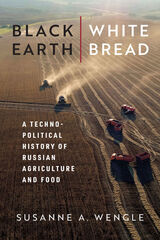 Black Earth, White Bread: A Technopolitical History of Russian Agriculture and Food
Susanne A. Wengle
University of Wisconsin Press, 2023 Like all facets of daily life, the food that Russian farms produced and citizens ate—or, in some years, didn’t eat—underwent radical shifts in the century between the Bolshevik Revolution and Vladimir Putin’s presidency. The modernization of agriculture during this time is usually understood in terms of advances in farming methods. Susanne A. Wengle’s important interdisciplinary history of Russia’s agriculture and food systems, however, documents a far more complex story of the interactions between political policies, daily cultural practices, and technological improvements.
Examining governance, production, consumption, nature, and the ensuing vulnerabilities of the agrifood system, Wengle reveals the intended and unintended consequences of Russian agricultural policies since 1917. Ultimately, Black Earth, White Bread calls attention to Russian technopolitics and how macro systems of government impact life on a daily, quotidian level.
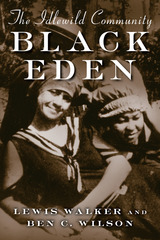 Black Eden: The Idlewild Community
Lewis Walker
Michigan State University Press, 2002 Black Eden chronicles the history of Idlewild, a Michigan black community founded during the aftermath of the Civil War. As one of the nation’s most popular black resorts, Idlewild functioned as a gathering place for African Americans, and more importantly as a touchstone of black identity and culture. Benjamin C. Wilson and Lewis Walker examine Idlewild’s significance within a historical context, as well as the town’s revitalization efforts and the need for comprehensive planning in future development. In a segregated America, Idlewild became a place where black audiences could see rising black entertainers. Profusely illustrated with photos from the authors’ personal collections, Black Eden provides a lengthy discussion about the crucial role that Idlewild played in the careers of artists such as Louis Armstrong, B. B. King, Sammy Davis Jr., Jackie Wilson, Aretha Franklin, and Della Reese. Fundamentally, the book explores issues involved in living in a segregated society, the consequences of the civil rights movement, the Civil Rights Act of 1964 and subsequent integration, and the consequences of integration vs. racial solidarity. The authors ask: Did integration kill Idlewild?, suggesting rather that other factors contributed to its decline.
Black Education in Alabama, 1865-1901
Robert G. Sherer
University of Alabama Press, 2005 Explains and describes the development of black private and public, elementary, secondary, normal, and collegiate education in Alabama from emancipation to 1901
The study of education in Alabama is especially important in understanding black education throughout the United States since the most famous black school, Booker T. Washington's Tuskegee Institute, is located in Alabama and began as a state teachers’ training school. A history of black education in Alabama provides a test case of the frequently assumed dominance of Booker T. Washington and his plan of "industrial'' or vocational training in black education.
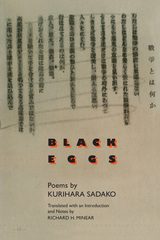 Black Eggs: Poems by Kurihara Sadako
Kurihara Sadako; Translated with an Introduction and Notes by Richard H. Minear
University of Michigan Press, 1994 Kurihara Sadako was born in Hiroshima in 1913, and she was there on August 6, 1945. Already a poet before she experienced the atomic bombing of Hiroshima, she used her poetic talents to describe the blast and its aftermath. In 1946, despite the censorship of the American Occupation, she published Kuroi tamago (Black Eggs), poems from before, during, and immediately after the war. This volume includes a translation of Kuroi tamago from the complete edition of 1983. But August 6, 1945, was not the end point of Kurihara’s journey. In the years after Kuroi tamago she has broadened her focus—to Japan as a victimizer rather than victim, to the threat of nuclear war, to antiwar movements around the world, and to inhumanity in its many guises. She treats events in Japan such as politics in Hiroshima, Tokyo’s long-term complicity in American policies, and the decision in 1992 to send Japanese troops on U.N. peacekeeping operations. But she also deals with the Vietnam War, Three Mile Island, Kwangju, Greenham Common, and Tiananmen Square. This volume includes a large selection of these later poems. Kurihara sets us all at ground zero, strips us down to our basic humanity, and shows us the world both as it is and as it could be. Her poems are by turns sorrowful and sarcastic, tender and tough. Several of them are famous in Japan today, but even there, few people appreciate the full force and range of her poetry. And few poets in any country—indeed, few artists of any kind—have displayed comparable dedication, consistency, and insight.
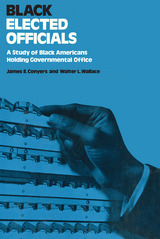 Black Elected Officials: Study of Black Americans Holding Government Office
James Conyers
Russell Sage Foundation, 1976 Presents the first nationwide profile of black Americans (over 3,500) who now hold elective governmental office. The book is based upon a questionnaire survey of black elected officials together with a comparison survey of white men and women elected to similar types of offices in the same geographical region. The inclusion of extensive quotations from interviews with thirty-four black elected officials adds realism, depth, and insight to the quantitative analysis. The authors interrelate fresh and meaningful information on the political ideologies and motivations of black officials, their perceived political impacts, and expectations for the future. Presents the first nationwide profile of black Americans (over 3,500) who now hold elective governmental office. The book is based upon a questionnaire survey of black elected officials together with a comparison survey of white men and women elected to similar types of offices in the same geographical region. The inclusion of extensive quotations from interviews with thirty-four black elected officials adds realism, depth, and insight to the quantitative analysis. The authors interrelate fresh and meaningful information on the political ideologies and motivations of black officials, their perceived political impacts, and expectations for the future.
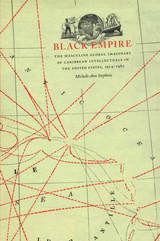 Black Empire: The Masculine Global Imaginary of Caribbean Intellectuals in the United States, 1914–1962
Michelle Ann Stephens
Duke University Press, 2005 In Black Empire, Michelle Ann Stephens examines the ideal of “transnational blackness” that emerged in the work of radical black intellectuals from the British West Indies in the early twentieth century. Focusing on the writings of Marcus Garvey, Claude McKay, and C. L. R. James, Stephens shows how these thinkers developed ideas of a worldwide racial movement and federated global black political community that transcended the boundaries of nation-states. Stephens highlights key geopolitical and historical events that gave rise to these writers’ intellectual investment in new modes of black political self-determination. She describes their engagement with the fate of African Americans within the burgeoning U.S. empire, their disillusionment with the potential of post–World War I international organizations such as the League of Nations to acknowledge, let alone improve, the material conditions of people of color around the world, and the inspiration they took from the Bolshevik Revolution, which offered models of revolution and community not based on nationality. Stephens argues that the global black political consciousness she identifies was constituted by both radical and reactionary impulses. On the one hand, Garvey, McKay, and James saw freedom of movement as the basis of black transnationalism. The Caribbean archipelago—a geographic space ideally suited to the free movement of black subjects across national boundaries—became the metaphoric heart of their vision. On the other hand, these three writers were deeply influenced by the ideas of militarism, empire, and male sovereignty that shaped global political discourse in the early twentieth century. As such, their vision of transnational blackness excluded women’s political subjectivities. Drawing together insights from American, African American, Caribbean, and gender studies, Black Empire is a major contribution to ongoing conversations about nation and diaspora.
Black Enlightenment
Surya Parekh
Duke University Press, 2023 In Black Enlightenment Surya Parekh reimagines the Enlightenment from the position of the Black subject. Parekh examines the works of such Black writers as the free Jamaican Francis Williams (1697–1762), Afro-British thinker Ignatius Sancho (1729?–1780), and Afro-American poet Phillis Wheatley (1753?–1784), placing them alongside those of their white European contemporaries David Hume (1711-1776) and Immanuel Kant (1724-1804). By rethinking the Enlightenment and its canons, Parekh complicates common understandings of the Enlightenment wherein Black subjects could exist only in negation to white subjects. Black Enlightenment points to the anxiety of race in Hume, Kant, and others while showing the importance of Black Enlightenment thought. Parekh prompts us to consider the timeliness of reading Black Enlightenment authors who become “free” in a society hostile to that freedom.
Black Entrepreneurs in America: Stories of Struggle and Success
Michael D Woodard
Rutgers University Press, 1996 Beginning with a summary of 200 years of entrepreneurship among African Americans, then moving to in-depth interviews with contemporary entrepreneurs, Michael Woodard provides a powerful record of entrepreneurial vitality in a market that is often hostile and exclusive. The book covers businesses nationwide, representing diverse industries. Woodard ends on a practical note with resources and advice for anyone contemplating an entrepreneurial future.
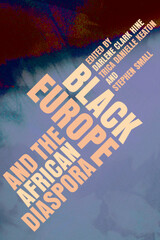 Black Europe and the African Diaspora
Edited by Darlene Clark Hine, Trica Danielle Keaton, and Stephen Small
University of Illinois Press, 2009 The presence of Blacks in a number of European societies has drawn increasing interest from scholars, policymakers, and the general public. This interdisciplinary and multi-disciplinary collection penetrates the multifaceted Black presence in Europe, and, in so doing, complicates the notions of race, belonging, desire, and identities assumed and presumed in revealing portraits of Black experiences in a European context. In focusing on contemporary intellectual currents and themes, the contributors theorize and re-imagine a range of historical and contemporary issues related to the broader questions of blackness, diaspora, hegemony, transnationalism, and "Black Europe" itself as lived and perceived realities. Contributors are Allison Blakely, Jacqueline Nassy Brown, Tina Campt, Fred Constant, Alessandra Di Maio, Philomena Essed, Terri Francis, Barnor Hesse, Darlene Clark Hine, Dienke Hondius, Eileen Julien, Trica Danielle Keaton, Kwame Nimako, Tiffany Ruby Patterson, T. Denean Sharpley-Whiting, Stephen Small, Tyler Stovall, Alexander G. Weheliye, Gloria Wekker, and Michelle M. Wright.
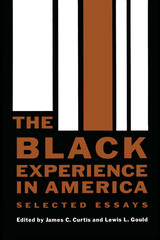 The Black Experience in America: Selected Essays
Edited by James C. Curtis and Lewis L. Gould
University of Texas Press, 1970 In the fall of 1968, the University of Texas at Austin sponsored a series of public lectures delivered by outstanding students of the black past in an effort to clarify the role of the African American in America’s history. This volume of essays by eight of the ten participants makes the lectures available to a broader public.
The essays demonstrate that the black experience in America has been integral throughout the nation’s history. Although each contributor deals with a different aspect of this experience, they all share a common commitment to sound historical scholarship. The essays also reflect the intensive research in the field of black history during a time of high racial tension.
Henry Allen Bullock, in an exploration of education in the slave experience, shows that, despite organized attempts to dehumanize the Negro, the black man’s position in the American social order was not static. By training and educating the Negro, the slaveowner was weakening the peculiar institution and preparing the slave for freedom. In the field of cultural anthropology, which had largely ignored blacks in the United States, William S. Willis, Jr., examines the interaction of whites, blacks, and Indians on the Southern colonial frontier. Arthur Zilversmit traces the development of abolitionist attitudes from patience to militance and points out that both those reformers who abandoned action and those who demanded radical violent change were forced into their positions by society’s failure to listen to the arguments of moderate reformers.
William S. McFeely takes a fresh look at the Reconstruction era, one of the only times in American history when white Americans have even come close to wanting for black Americans what black Americans wanted for themselves. In a discussion of protest against segregated streetcars in the South, August Meier and Elliott Rudwick show that the boycotts of the late 1950s had their counterparts in more than twenty-five Southern cities between 1900 and 1906. Thomas R. Cripps attacks the myth of the Southern box office and shows how Hollywood’s own timidity fostered racial stereotyping in American movies. Robert L. Zangrando outlines the role of the NAACP, founded in 1909, in the evolution of civil rights protests during the mid-twentieth century. He argues that the organization’s precarious position in American society prevented it from exercising strong leadership within the black community. Louis R. Harlan concludes the volume by assessing the past and looking toward the future of black history in America.
The Black Extended Family
Elmer P. Martin and Joanne Mitchell Martin
University of Chicago Press, 1980 Misunderstood and stereotyped, the black family in America has been viewed by some as pathologically weak while others have acclaimed its resilience and strength. Those who have drawn these conflicting conclusions have gnerally focused on the nuclear family—husband, wife, and dependent children. But as Elmer and Joanne Martin point out in this revealing book, a unit of this kind often is not the center of black family life. What appear to be fatherless, broken homes in our cities may really be vital parts of strong and flexible extended families based hundreds of miles away—usually in a rural area.
Through their eight-year study of some thirty extended families, the Martins find that economic pressures, including federal tax and welfare laws, have begun to make the extended family's flexibility into a liability that threatens its future.
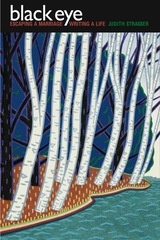 Black Eye: Escaping a Marriage, Writing a Life
Judith Strasser
University of Wisconsin Press, 2004 Seventeen years after she married, Judith Strasser escaped her emotionally and physically abusive husband and sought a better way to live. In the process, Strasser rediscovered what she had suppressed through that long span of time: exceptional strength and a passion for writing.
Black Eye includes excerpts from a journal Strasser kept from 1985 to1986, the year she made the decision to leave her marriage, and present-day commentary on the journal passages and her family history. Strasser works like a detective investigating her own life, drawing clarity and power from journal passages, dreams, and memories that originally emerged from confusion and despair. With language that is both insightful and poetic, she reveals the psychological and social circumstances that led a "strong" woman, an intelligent and politically active feminist, to become an emotionally dependent, abused wife.
Not coincidentally, the same year that Strasser finally found the courage to leave her husband, she also reclaimed her creative voice. Newly empowered and energized by this enormous life change, Strasser began writing again after twenty-five silent years dominated by her mother’s illness and death, her own cancer, and her painful, fearful marriage. Black Eye is one of the fruits of this creative reawakening. Strasser’s writing is refreshingly honest and instantly engrossing. Not shy of wretchedness or beauty, Strasser’s story is bitterly personal, ultimately triumphant, and inspiring to all who deal with the adversity that is part of human life.
Black Faces, Black Interests: The Representation of African Americans in Congress
Carol M. Swain
Harvard University Press, 1995 In this incisive book Carol Swain explores what strategies are most likely to lead to greater representation of black political interests. She studies the constituency relations and roll-call voting of black members of Congress from a variety of districts--historically black, newly black, heterogeneous, and primarily white--and of white members from districts with either a black majority or a significant black minority. She challenges the proposition that only African Americans can represent black interests effectively, and argues that blacks must form coalitions with white representatives to serve black needs. Swain has updated this edition with a new chapter entitled "Black Congressional Representation since 1992."
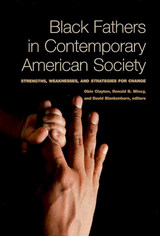 Black Fathers in Contemporary American Society: Strengths, Weaknesses, and Strategies for Change
Obie Clayton
Russell Sage Foundation, 2003 The majority of African American children live in homes without their fathers, but the proportion of African American children living in intact, two-parent families has risen significantly since 1995. Black Fathers in Contemporary American Society looks at father absence from two sides, offering an in-depth analysis of how the absence of African American fathers affects their children, their relationships, and society as a whole, while countering the notion that father absence and family fragmentation within the African American community is inevitable. Editors Obie Clayton, Ronald B. Mincy, and David Blankenhorn lead a diverse group of contributors encompassing a range of disciplines and ideological perspectives who all agree that father absence among black families is one of the most pressing social problems today. In part I, the contributors offer possible explanations for the decline in marriage among African American families. William Julius Wilson believes that many men who live in the inner city no longer consider marriage an option because their limited economic prospects do not enable them to provide for a family. Part II considers marriage from an economic perspective, emphasizing that it is in part a wealth-producing institution. Maggie Gallagher points out that married people earn, invest, and save more than single people, and that when marriage rates are low in a community, it is the children who suffer most. In part III, the contributors discuss policies to reduce absentee fatherhood. Wornie Reed demonstrates how public health interventions, such as personal development workshops and work-related skill-building services, can be used to address the causes of fatherlessness. Wade Horn illustrates the positive results achieved by fatherhood programs, especially when held early in a man's life. In the last chapter, Enola Aird notes that from 1995 to 2000, the proportion of African American children living in two-parent, married couple homes rose from 34.8 to 38.9 percent; a significant increase indicating the possible reversal of the long-term shift toward black family fragmentation. Black Fathers in Contemporary American Society provides an in-depth look at a problem affecting millions of children while offering proof that the trend of father absence is not irrevocable.
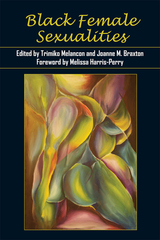 Black Female Sexualities
Melancon, Trimiko
Rutgers University Press, 2015 Western culture has long regarded black female sexuality with a strange mix of fascination and condemnation, associating it with everything from desirability, hypersexuality, and liberation to vulgarity, recklessness, and disease. Yet even as their bodies and sexualities have been the subject of countless public discourses, black women’s voices have been largely marginalized in these discussions. In this groundbreaking collection, feminist scholars from across the academy come together to correct this omission—illuminating black female sexual desires marked by agency and empowerment, as well as pleasure and pain, to reveal the ways black women regulate their sexual lives.
The twelve original essays in Black Female Sexualities reveal the diverse ways black women perceive, experience, and represent sexuality. The contributors highlight the range of tactics that black women use to express their sexual desires and identities. Yet they do not shy away from exploring the complex ways in which black women negotiate the more traumatic aspects of sexuality and grapple with the legacy of negative stereotypes.
Black Female Sexualities takes not only an interdisciplinary approach—drawing from critical race theory, sociology, and performance studies—but also an intergenerational one, in conversation with the foremothers of black feminist studies. In addition, it explores a diverse archive of representations, covering everything from blues to hip-hop, from Crash to Precious, from Sister Souljah to Edwidge Danticat. Revealing that black female sexuality is anything but a black-and-white issue, this collection demonstrates how to appreciate a whole spectrum of subjectivities, experiences, and desires.
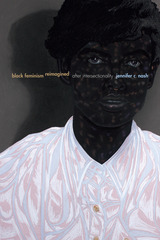 Black Feminism Reimagined: After Intersectionality
Jennifer C. Nash
Duke University Press, 2019 In Black Feminism Reimagined Jennifer C. Nash reframes black feminism's engagement with intersectionality, often celebrated as its primary intellectual and political contribution to feminist theory. Charting the institutional history and contemporary uses of intersectionality in the academy, Nash outlines how women's studies has both elevated intersectionality to the discipline's primary program-building initiative and cast intersectionality as a threat to feminism's coherence. As intersectionality has become a central feminist preoccupation, Nash argues that black feminism has been marked by a single affect—defensiveness—manifested by efforts to police intersectionality's usages and circulations. Nash contends that only by letting go of this deeply alluring protectionist stance, the desire to make property of knowledge, can black feminists reimagine intellectual production in ways that unleash black feminist theory's visionary world-making possibilities.
 Black Feminist Anthropology, 25th Anniversary Edition: Theory, Politics, Praxis, and Poetics
Irma McClaurin
Rutgers University Press, 2025 Black Feminist Anthropology: Theory, Politics, Praxis and Poetics is a groundbreaking collection that centers the imaginative intellectual perspectives, voices, and experiences of Black American feminist anthropologists. Twenty-five years ago, as the Foreword states, this book dared to put three words together in the title—Black. Feminist. Anthropology— “that have not always kept company with each other—and in the minds of many both in and outside of the academy, they should remain separate.” Standing the test of time, it is still a bold reimagining of anthropology, and all social sciences, as inclusive and decolonized, while establishing a new Black feminist anthropology canon that decades later is too often taken for granted as normative. Black Feminist Anthropology is filled with a message of theoretical possibilities that anyone who enters its pages will find “healing,” “life-saving,” and an affirmation that Black women anthropologists have contributed much to the theory, politics, praxis and poetics of anthropology, gender and women’s studies, masculinity studies, queer studies, the social sciences generally, and any other discipline that seeks transformation from the inside out. It is both an archive and a legacy for the next generation.
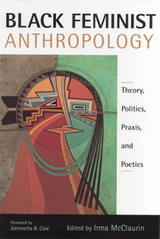 Black Feminist Anthropology: Theory, Politics, Praxis, and Poetics
McClaurin, Irma
Rutgers University Press, 2001 In the discipline's early days, anthropologists by definition were assumed to be white and male. Women and black scholars were relegated to the field's periphery. From this marginal place, white feminist anthropologists have successfully carved out an acknowledged intellectual space, identified as feminist anthropology. Unfortunately, the works of black and non-western feminist anthropologists are rarely cited, and they have yet to be respected as significant shapers of the direction and transformation of feminist anthropology.
In this volume, Irma McClaurin has collected-for the first time-essays that explore the role and contributions of black feminist anthropologists. She has asked her contributors to disclose how their experiences as black women have influenced their anthropological practice in Africa, the Caribbean, and the United States, and how anthropology has influenced their development as black feminists. Every chapter is a unique journey that enables the reader to see how scholars are made. The writers present material from their own fieldwork to demonstrate how these experiences were shaped by their identities. Finally, each essay suggests how the author's field experiences have influenced the theoretical and methodological choices she has made throughout her career.
Not since Diane Wolf's Feminist Dilemmas in the Field or Hortense Powdermaker's Stranger and Friend have we had such a breadth of women anthropologists discussing the critical (and personal) issues that emerge when doing ethnographic research.
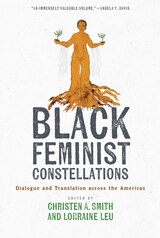 Black Feminist Constellations: Dialogue and Translation across the Americas
Edited by Christen A. Smith and Lorraine Leu
University of Texas Press, 2023 A collection of essays, interviews, and conversations by and between scholars, activists, and artists from Latin America and the Caribbean that paints a portrait of Black women's experiences across the region.
Black women in Latin America and the Caribbean suffer a triple erasure: as Black people, as women, and as non-English speakers in a global environment dominated by the Anglophone North. Black Feminist Constellations is a passionate and necessary corrective. Focused on and written by Black women of the southern Americas, the original works composing this volume make legible the epistemologies that sustain radical scholarship, art, and political organizing by Black women everywhere. In essays, poems, and dialogues, the writers in Black Feminist Constellations reimagine liberation from the perspectives of radical South American and Caribbean Black women thinkers. The volume’s methodologically innovative approach reflects how Black women come together to theorize the world and challenges the notion that the university is the only site where knowledge can emerge. A major work of intellectual history, Black Feminist Constellations amplifies rarely heard voices, centers the uncanonized, and celebrates the overlooked work of Black women.
 Black Fiction
Roger Rosenblatt
Harvard University Press, 1974 In this illuminating book Roger Rosenblatt offers both sensitive analyses of individual works and a provocative and compelling thesis. He argues that black fiction has a unity deriving not from any chronological sequence, or simply from its black authorship, but from a particular cyclical conception of history on which practically every significant black American novel and short story is based. Marked for oppression by an external physical characteristic, black characters struggle constantly against and within a hostile world.
Rosenblatt's analysis of the way black protagonists try to break historical patterns provides an integrated and sustained interpretation of motives and methods in black fiction. The black hero, after starting on a circular track, may try to change direction by means of his youth, love, education, or humor; or he may try to escape into his own elusive and vague history. But, as Rosenblatt demonstrates, these attempts all fail. And the black hero discovers in the failure of his attempts that the society which caused all this failure is not only unattainable but undesirable. Neither a sociological study nor a routine survey, this is distinctly a work of literary criticism which concentrates on black fiction as literature.
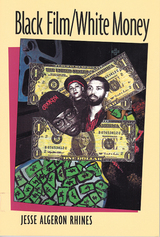 Black Film/White Money
Jesse Algeron Rhines
Rutgers University Press, 1996 Why are there so few Black filmmakers who control their own work? Why are there scarcely any Black women behind the camera? What happens to Black filmmakers when they move from independent production to the mainstream? What does it mean for whites to control Black images and their distribution globally? And, was it always so? Could it be different?
In this vivid portrait of their historic and present-day contributions, Jesse Rhines explores the roles African American men and women have played in the motion picture business from 1915 to the present. He illuminates his discussion by carefully linking the history of early Black filmmaking to the current success of African American filmmakers and examines how African Americans have been affected by changes that have taken place in the industry as a whole. He focuses on the crucial role of distribution companies, the difficulty of raising money for production, the compromises that directors and writers must make to get funding, and the effect of negative, sensationalistic images on the Black community. Many well-known directors, including Spike Lee, Reginald Hudlin, and Grace Blake are interviewed in the book, allowing Rhines to give readers an inside look at how deal making does--or does not--work.
Rhines surveys significant eras in film history and their impact on African Americans, from the silent era and the impact of The Birth of a Nation , through the emergence of the Black-owned Lincoln Motion Picture Company, and the later introduction of sound, to the postwar era, the antitrust suit against Paramount Pictures, the introduction of television, and Blaxploitation movies that won audiences back. He brings the story up to date with present-day blockbusters and the success of Spike Lee, who began as an independent and became a force in the industry, and others who hope to follow in Lee's footsteps. Rhines, who has worked behind the camera himself, reflects on independent filmmaking, the risks of both failure and success, and his hope for positive change in the African African community if more African American filmmakers can come to the forefront in the business.
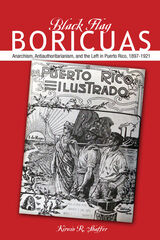 Black Flag Boricuas: Anarchism, Antiauthoritarianism, and th eLeft in Puerto Rico, 1897-1921
Kirwin R. Shaffer
University of Illinois Press, 2013 This pathbreaking study examines the radical Left in Puerto Rico from the final years of Spanish colonial rule into the 1920s. Positioning Puerto Rico within the context of a regional anarchist network that stretched from Puerto Rico and Cuba to Tampa, Florida, and New York City, Kirwin R. Shaffer illustrates how anarchists linked their struggle to the broader international anarchist struggles against religion, governments, and industrial capitalism. Their groups, speeches, and press accounts--as well as the newspapers that they published--were central in helping to develop an anarchist vision for Puerto Ricans at a time when the island was a political no-man's-land, neither an official U.S. colony or state nor an independent country. Exploring the rise of artisan and worker-based centers to develop class consciousness, Shaffer follows the island's anarchists as they cautiously joined the AFL-linked Federación Libre de Trabajadores, the largest labor organization in Puerto Rico. Critiquing the union from within, anarchists worked with reformers while continuing to pursue a more radical agenda achieved by direct action rather than parliamentary politics. Shaffer also traces anarchists' alliances with freethinkers seeking to reform education, progressive factions engaged in attacking the Church and organized religion, and the emerging Socialist movement on the island in the 1910s. The most successful anarchist organization to emerge in Puerto Rico, the Bayamón bloc founded El Comunista, the longest-running, most financially successful anarchist newspaper in the island's history. Stridently attacking U.S. militarism and interventionism in the Caribbean Basin, the newspaper found growing distribution throughout and financial backing from Spanish-speaking anarchist groups in the United States. Shaffer demonstrates how the U.S. government targeted the Bayamón anarchists during the Red Scare and forced the closure of their newspaper in 1921, effectively unraveling the anarchist movement on the island.
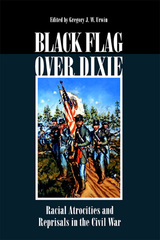 Black Flag Over Dixie: Racial Atrocities and Reprisals in the Civil War
Edited by Gregory J. W. Urwin
Southern Illinois University Press, 2004 Black Flag over Dixie: Racial Atrocities and Reprisals in the Civil War highlights the central role that race played in the Civil War by examining some of the ugliest incidents that played out on its battlefields. Challenging the American public’s perception of the Civil War as a chivalrous family quarrel, twelve rising and prominent historians show the conflict to be a wrenching social revolution whose bloody excesses were exacerbated by racial hatred. Edited by Gregory J. W. Urwin, this compelling volume focuses on the tendency of Confederate troops to murder black Union soldiers and runaway slaves and divulges the details of black retaliation and the resulting cycle of fear and violence that poisoned race relations during Reconstruction. In a powerful introduction to the collection, Urwin reminds readers that the Civil War was both a social and a racial revolution. As the heirs and defenders of a slave society’s ideology, Confederates considered African Americans to be savages who were incapable of waging war in a civilized fashion. Ironically, this conviction caused white Southerners to behave savagely themselves. Under the threat of Union retaliation, the Confederate government backed away from failing to treat the white officers and black enlisted men of the United States Colored Troops as legitimate combatants. Nevertheless, many rebel commands adopted a no-prisoners policy in the field. When the Union’s black defenders responded in kind, the Civil War descended to a level of inhumanity that most Americans prefer to forget. In addition to covering the war’s most notorious massacres at Olustee, Fort Pillow, Poison Spring, and the Crater, Black Flag over Dixie examines the responses of Union soldiers and politicians to these disturbing and unpleasant events, as well as the military, legal, and moral considerations that sometimes deterred Confederates from killing all black Federals who fell into their hands. Twenty photographs and a map of massacre and reprisal sites accompany the volume. The contributors are Gregory J. W. Urwin, Anne J. Bailey, Howard C. Westwood, James G. Hollandsworth Jr., David J. Coles, Albert Castel, Derek W. Frisby, Weymouth T. Jordan Jr., Gerald W. Thomas, Bryce A. Suderow, Chad L. Williams, and Mark Grimsley.
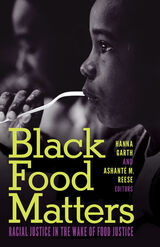 Black Food Matters: Racial Justice in the Wake of Food Justice
Hanna Garth
University of Minnesota Press, 2020 An in-depth look at Black food and the challenges it faces today
For Black Americans, the food system is broken. When it comes to nutrition, Black consumers experience an unjust and inequitable distribution of resources. Black Food Matters examines these issues through in-depth essays that analyze how Blackness is contested through food, differing ideas of what makes our sustenance “healthy,” and Black individuals’ own beliefs about what their cuisine should be.
Primarily written by nonwhite scholars, and framed through a focus on Black agency instead of deprivation, the essays here showcase Black communities fighting for the survival of their food culture. The book takes readers into the real world of Black sustenance, examining animal husbandry practices in South Carolina, the work done by the Black Panthers to ensure food equality, and Black women who are pioneering urban agriculture. These essays also explore individual and community values, the influence of history, and the ongoing struggle to meet needs and affirm Black life.
A comprehensive look at Black food culture and the various forms of violence that threaten the future of this cuisine, Black Food Matters centers Blackness in a field that has too often framed Black issues through a white-centric lens, offering new ways to think about access, privilege, equity, and justice.
Contributors: Adam Bledsoe, U of Minnesota; Billy Hall; Analena Hope Hassberg, California State Polytechnic U, Pomona; Yuson Jung, Wayne State U; Kimberly Kasper, Rhodes College; Tyler McCreary, Florida State U; Andrew Newman, Wayne State U; Gillian Richards-Greaves, Coastal Carolina U; Monica M. White, U of Wisconsin–Madison; Brian Williams, Mississippi State U; Judith Williams, Florida International U; Psyche Williams-Forson, U of Maryland, College Park; Willie J. Wright, Rutgers U.
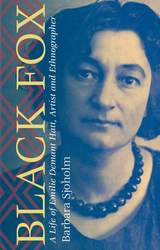 Black Fox: A Life of Emilie Demant Hatt, Artist and Ethnographer
Barbara Sjoholm
University of Wisconsin Press, 2017 In 1904 a young Danish woman met a Sami wolf hunter on a train in Sweden. This chance encounter transformed the lives of artist Emilie Demant and the hunter, Johan Turi. In 1907–8 Demant went to live with Sami families in their tents and on migrations, later writing a lively account of her experiences. She collaborated with Turi on his book about his people. On her own and later with her husband Gudmund Hatt, she roamed on foot through Sami regions as an ethnographer and folklorist. As an artist, she created many striking paintings with Sami motifs. Her exceptional life and relationships come alive in this first English-language biography.
In recounting Demant Hatt's fascinating life, Barbara Sjoholm investigates the boundaries and influences between ethnographers and sources, the nature of authorship and visual representation, and the state of anthropology, racial biology, and politics in Scandinavia during the first half of the twentieth century.
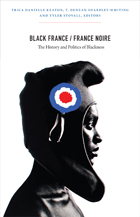 Black France / France Noire: The History and Politics of Blackness
Trica Danielle Keaton, T. Denean Sharpley-Whiting and Tyler Stovall, eds.
Duke University Press, 2012 In Black France / France Noire, scholars, activists, and novelists from France and the United States address the untenable paradox at the heart of French society. France's constitutional and legal discourses do not recognize race as a meaningful category. Yet the lived realities of race and racism are ever-present in the nation's supposedly race-blind society. The vaunted universalist principles of the French Republic are far from realized. Any claim of color-blindness is belied by experiences of anti-black racism, which render blackness a real and consequential historical, social, and political formation. Contributors to this collection of essays demonstrate that blackness in France is less an identity than a response to and rejection of anti-black racism. Black France / France Noire is a distinctive and important contribution to the increasingly public debates on diversity, race, racialization, and multicultural intolerance in French society and beyond.
Contributors. Rémy Bazenguissa-Ganga, Allison Blakely, Jennifer Anne Boittin, Marcus Bruce, Fred Constant, Mamadou Diouf, Arlette Frund, Michel Giraud, Bennetta Jules-Rosette, Trica Danielle Keaton, Jake Lamar, Patrick Lozès, Alain Mabanckou, Elisabeth Mudimbe-Boyi, T. Denean Sharpley-Whiting, Tyler Stovall, Christiane Taubira, Dominic Thomas, Gary Wilder
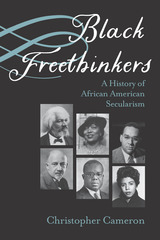 Black Freethinkers: A History of African American Secularism
Christopher Cameron
Northwestern University Press, 2019 Black Freethinkers argues that, contrary to historical and popular depictions of African Americans as naturally religious, freethought has been central to black political and intellectual life from the nineteenth century to the present. Freethought encompasses many different schools of thought, including atheism, agnosticism, and nontraditional orientations such as deism and paganism.
Christopher Cameron suggests an alternative origin of nonbelief and religious skepticism in America, namely the brutality of the institution of slavery. He also traces the growth of atheism and agnosticism among African Americans in two major political and intellectual movements of the 1920s: the New Negro Renaissance and the growth of black socialism and communism. In a final chapter, he explores the critical importance of freethought among participants in the civil rights and Black Power movements of the 1960s and 1970s.
Examining a wealth of sources, including slave narratives, travel accounts, novels, poetry, memoirs, newspapers, and archival sources such as church records, sermons, and letters, the study follows the lives and contributions of well-known figures, including Frederick Douglass, Zora Neale Hurston, James Baldwin, and Alice Walker, as well as lesser-known thinkers such as Louise Thompson Patterson, Sarah Webster Fabio, and David Cincore.
 Black, French, and African: A Life of Léopold Sédar Senghor
Janet G. Vaillant
Harvard University Press, 1990 Black, French, and African is the first biography in English of the extraordinary poet, politician and intellectual Léopold Sédar Senghor. As a prizewinning poet in French, Senghor was the first African to be elected to the Académie Française for his contribution to French culture; as a statesman, he was the first president of independent Senegal from 1961 to 1980, a nation still among the most democratic in Africa; as an intellectual, he was an originator of the theory of Négritude—a term that to him meant “the manner of self-expression of the black character, the black world, black civilization”—and a leader of West African independence.
Through her sleuthing, interviewing, and ferreting out details over a period of years, Janet Vaillant has drawn a captivating multi-dimensional portrait of this unusual man. She introduces us to Senghor the child, through descriptions of his family, the traditional culture of the Serer people of Senegal, and the system of French colonialism that gave him his contradictory sense of “place”; then to Senghor the young man, as he pursued his academic and literary education in Paris of the late 1920s. Finally, she moves on to his involvement in this special fraternity of “men of color” that crystallized in Paris in the mid 1930s and that fostered the theory of Negritude for which Senghor became such an articulate spokesman.
Senghor’s biography contributes to an understanding of postindependence African leadership as well as French and African-American intellectual history and literature. Vaillant examines links between his personal experience, his political work, and his poetry, and the effects of his political ideology on state-building. She also provides us with larger context in which Senghor worked—his debts and contributions to the writing and thinking of blacks in America and France, and his importance as a leader of a colonized people dealing with the industrialized West.
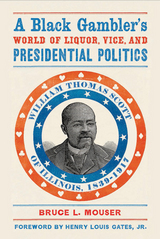 A Black Gambler’s World of Liquor, Vice, and Presidential Politics: William Thomas Scott of Illinois, 1839–1917
Bruce L. Mouser
University of Wisconsin Press, 2014 William Thomas Scott (1839–1917) was an entrepreneur and political activist from East Saint Louis and Cairo, Illinois, who in 1904 briefly became the first African American nominated by a national party for president of the United States before his scandalous past forced him to step aside. A free man before the Civil War, Scott was a charismatic hustler who built his fortune through both vice trades and legal businesses including hotels, saloons, and real estate. Publisher and editor of the Cairo Gazette and an outspoken advocate for equal rights, he believed in political patronage and frequently rebelled against political bosses who failed to deliver, whether they were white, black, Republican, or Democrat.
Scott helped build the National Negro Liberty Party to forward economic, political, and legal rights for his race. But the hustling that had brought him business success proved his undoing as a national political figure. He was the NNLP's initial presidential nominee, only to be replaced by a better-educated and more socially acceptable candidate, George Edwin Taylor.
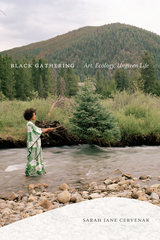 Black Gathering: Art, Ecology, Ungiven Life
Sarah Jane Cervenak
Duke University Press, 2021 In Black Gathering Sarah Jane Cervenak engages with Black artists and writers who create alternative spaces for Black people to gather free from interruption or regulation. Drawing together Black feminist theory, critical theories of ecology and ecoaesthetics, and Black aesthetics, Cervenak shows how novelists, poets, and visual artists such as Gayl Jones, Toni Morrison, Clementine Hunter, Samiya Bashir, and Leonardo Drew advance an ecological imagination that unsettles Western philosophical ideas of the earth as given to humans. In their aestheticization and conceptualization of gathering, these artists investigate the relationships among art, the environment, home, and forms of Black togetherness. Cervenak argues that by offering a formal and conceptual praxis of gathering, Black artists imagine liberation and alternative ways of being in the world that exist beyond those Enlightenment philosophies that presume Black people and earth as given to enclosure and ownership.
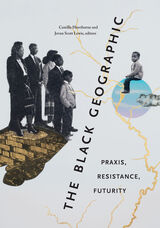 The Black Geographic: Praxis, Resistance, Futurity
Camilla Hawthorne and Jovan Scott Lewis, editors
Duke University Press, 2023 The contributors to The Black Geographic explore the theoretical innovations of Black Geographies scholarship and how it approaches Blackness as historically and spatially situated. In studies that span from Oakland to the Alabama Black Belt to Senegal to Brazil, the contributors draw on ethnography, archival records, digital humanities, literary criticism, and art to show how understanding the spatial dimensions of Black life contributes to a broader understanding of race and space. They examine key sites of inquiry: Black spatial imaginaries, resistance to racial violence, the geographies of racial capitalism, and struggles over urban space. Throughout, the contributors demonstrate that Blackness is itself a situating and place-making force, even as it is shaped by spatial processes and diasporic routes. Whether discussing eighteenth- and nineteenth-century abolitionist print records or migration and surveillance in Niger, this volume demonstrates that Black Geographies is a mode of analyzing Blackness that fundamentally challenges the very foundations of the field of geography and its historical entwinement with colonialism, enslavement, and imperialism. In short, it marks a new step in the evolution of the field.
Contributors. Anna Livia Brand, C.N.E. Corbin, Lindsey Dillon, Chiyuma Elliott, Ampson Hagan, Camilla Hawthorne, Matthew Jordan-Miller Kenyatta, Jovan Scott Lewis, Judith Madera, Jordanna Matlon, Solange Muñoz, Diana Negrín, Danielle Purifoy, Sharita Towne
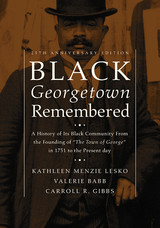 Black Georgetown Remembered: A History of Its Black Community from the Founding of “The Town of George” in 1751 to the Present Day, 25th Anniversary Edition
Kathleen Menzie Lesko
Georgetown University Press, 2016 Georgetown's little-known black heritage shaped a Washington, DC, community long associated with white power and privilege. Black Georgetown Remembered reveals a rich but little-known history of the Georgetown black community from the colonial period to the present. Drawing on primary sources, including oral interviews with past and current residents and extensive research in church and historical society archives, the authors record the hopes, dreams, disappointments, and successes of a vibrant neighborhood as it persevered through slavery and segregation, war and peace, prosperity and depression. This beautifully redesigned 25th anniversary edition of Black Georgetown Remembered, first published in 1991, includes a foreword by Maurice Jackson and more than two hundred illustrations, including portraits of prominent community leaders, sketches, maps, and nineteenth-century and contemporary photographs. Kathleen Menzie Lesko's new introduction describes the impact the book and its companion documentary video have had since publication and updates readers on recent changes in this Washington, DC, neighborhood. Black Georgetown Remembered is a compelling and inspiring journey through more than two hundred years of history. A one-of-a-kind book, it invites readers to share in the lives, dreams, aspirations, struggles, and triumphs of real people, to join them in their churches, at home, and on the street, and to consider how the unique heritage of this neighborhood intersects and contributes to broader themes in African American and Washington, DC, history and urban studies.
 Black Georgetown Remembered: A History of Its Black Community from the Founding of “The Town of George” in 1751 to the Present Day, 30th Anniversary Edition
Kathleen Menzie Lesko, Valerie M. Babb, and Carroll R. Gibbs
Georgetown University Press, 2023 Georgetown's little-known Black heritage shaped a Washington, DC, community long associated with white power and privilege. Black Georgetown Remembered reveals a rich but little-known history of the Georgetown Black community from the colonial period to the present. Drawing on primary sources, including oral interviews with past and current residents and extensive research in church and historical society archives, the authors record the hopes, dreams, disappointments, and successes of a vibrant neighborhood as it persevered through slavery and segregation, war and peace, prosperity and depression. This thirtieth anniversary edition of Black Georgetown Remembered, first published in 1991, features more than two hundred illustrations, including portraits of prominent community leaders, sketches, maps, and nineteenth-century and contemporary photographs. A new chapter includes a conversation with former and current Georgetown residents reflecting on the community, past and present. Black Georgetown Remembered is a compelling and inspiring journey through more than two hundred years of history. A one-of-a-kind book, it invites readers to share in the lives, dreams, aspirations, struggles, and triumphs of real people, to join them in their churches, at home, and on the street, and to consider how the unique heritage of this neighborhood intersects and contributes to broader themes in African American and Washington, DC, history and urban studies.
Black Georgia in the Progressive Era, 1900-1920
John Dittmer
University of Illinois Press, 1977 "This is the best treatment scholars
have of black life in a southern state at the beginning of the twentieth century."
-- Howard N. Rabinowitz,
Journal of American History
"The author shows clearly and forcefully
the ways in which this [white] system abused and controlled the black lower
caste in Georgia." -- Lester C. Lamon, American Historical Review.
"Dittmer has a faculty for lucid exposition of complicated subjects. This is
especially true of the sections on segregation, racial politics, disfranchisement,
woman's suffrage and prohitibion, the neo-slavery in agriculture, and the racial
violence whose threat and reality hung like a pall over all of Georgia throughout
the period." -- Donald L. Grant, Georgia Historical Quarterly.
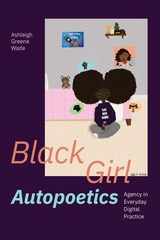 Black Girl Autopoetics: Agency in Everyday Digital Practice
Ashleigh Greene Wade
Duke University Press, 2024 In Black Girl Autopoetics Ashleigh Greene Wade explores how Black girls create representations of themselves in digital culture with the speed and flexibility enabled by smartphones. She analyzes the double bind Black girls face when creating content online: on one hand, their online activity makes them hypervisible, putting them at risk for cyberbullying, harassment, and other forms of violence; on the other hand, Black girls are rarely given credit for their digital inventiveness, rendering them invisible. Wade maps Black girls’ everyday digital practices, showing what their digital content reveals about their everyday experiences and how their digital production contributes to a broader archive of Black life. She coins the term Black girl autopoetics to describe how Black girls’ self-making creatively reinvents cultural products, spaces, and discourse in digital space. Using ethnographic research into the digital cultural production of adolescent Black girls throughout the United States, Wade draws a complex picture of how Black girls navigate contemporary reality, urging us to listen to Black girls’ experience and learn from their techniques of survival.
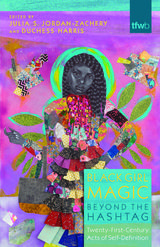 Black Girl Magic Beyond the Hashtag: Twenty-First-Century Acts of Self-Definition
Edited by Julia S. Jordan-Zachery and Duchess Harris; Foreword by Janell Hobson; Afterword by Tammy Owens
University of Arizona Press, 2019 Hashtag or trademark, personal or collective expression, #BlackGirlMagic is an articulation of the resolve of Black women and girls to triumph in the face of structural oppressions. The online life of #BlackGirlMagic insists on the visibility of Black women and girls as aspirational figures. But while the notion of Black girl magic spreads in cyberspace, the question remains: how is Black girl magic experienced offline?
The essays in this volume move us beyond social media. They offer critical analyses and representations of the multiplicities of Black femmes’, girls’, and women’s lived experiences. Together the chapters demonstrate how Black girl magic is embodied by four elements enacted both on- and offline: building community, challenging dehumanizing representations, increasing visibility, and offering restorative justice for violence.
Black Girl Magic Beyond the Hashtag shows how Black girls and women foster community, counter invisibility, engage in restorative acts, and create spaces for freedom. Intersectional and interdisciplinary, the contributions in this volume bridge generations and collectively push the boundaries of Black feminist thought.
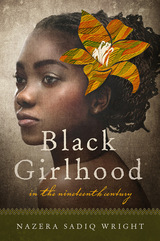 Black Girlhood in the Nineteenth Century
Nazera Sadiq Wright
University of Illinois Press, 2016 Long portrayed as a masculine endeavor, the African American struggle for progress often found expression through an unlikely literary figure: the black girl. Nazera Sadiq Wright uses heavy archival research on a wide range of texts about African American girls to explore this understudied phenomenon.
As Wright shows, the figure of the black girl in African American literature provided a powerful avenue for exploring issues like domesticity, femininity, and proper conduct. The characters' actions, however fictional, became a rubric for African American citizenship and racial progress. At the same time, their seeming dependence and insignificance allegorized the unjust treatment of African Americans. Wright reveals fascinating girls who, possessed of a premature knowing and wisdom beyond their years, projected a courage and resiliency that made them exemplary representations of the project of racial advance and citizenship.
 Black Gurl Reliable: Pedagogies of Vulnerability and Transgression
Dominique C. Hill
Vanderbilt University Press, 2025 Black Gurl Reliable does the original work of curating Black girls’ and women’s experiences and experiential knowledge, indexing sociocultural tactics (schooling) that foreclose Black girl aliveness, while advancing embodiment as a key ingredient of Black mattering. Elevating Black Girlhood Studies as an ethos, narratives presented offer redress to inequities and hauntings of race-gender structures of dominance and position Black girls and girlhood as more than lamentation and what happens to the body. Hill solicits the strength and utility of arts-based methods in capturing identity, performance, and experimental design for ephemerality and improvisation. Hill makes clear Black feminism’s insistence that knowledge and possibility are produced through the body.
As a means of mitigating the deleterious effects of schooling on Black girls’ and women’s bodies and making legible the insights and knowledge produced from schooling experiences, Hill introduces the concept of Transgressngroove. This living feminist practice explores the relationships between Black girlhood, education, and the body, as researched for over a decade through workshops, consulting, classrooms, personal development, and other teaching/learning spaces.
Black Hawk: An Autobiography
Black Hawk
University of Illinois Press, 1955 A classic of Native American literature and US history, the autobiography of the Sauk warrior Black Hawk (Ma-Ka-Tai-Me-She-Kia-Kiak in the Sauk language) offers an eyewitness account of the conflict between Indigenous peoples and white colonists on the Illinois frontier. But it also provides one of the most vivid Native descriptions of Indigenous life and beliefs before and during colonization of the Mississippi Valley. The University of Illinois Press edition is the definitive 1833 text edited by Donald Jackson. A foundational document, Black Hawk: An Autobiography is both an unsparing record of America's genocide against Native American peoples and the moving self-portrait of an extraordinary man.
 The Black Hearts of Men: Radical Abolitionists and the Transformation of Race
John Stauffer
Harvard University Press, 2004 At a time when slavery was spreading and the country was steeped in racism, two white men and two black men overcame social barriers and mistrust to form a unique alliance that sought nothing less than the end of all evil. Drawing on the largest extant bi-racial correspondence in the Civil War era, John Stauffer braids together these men's struggles to reconcile ideals of justice with the reality of slavery and oppression. Who could imagine that Gerrit Smith, one of the richest men in the country, would give away his wealth to the poor and ally himself with Frederick Douglass, an ex-slave? And why would James McCune Smith, the most educated black man in the country, link arms with John Brown, a bankrupt entrepreneur, along with the others? Distinguished by their interracial bonds, they shared a millennialist vision of a new world where everyone was free and equal.
As the nation headed toward armed conflict, these men waged their own war by establishing model interracial communities, forming a new political party, and embracing violence. Their revolutionary ethos bridged the divide between the sacred and the profane, black and white, masculine and feminine, and civilization and savagery that had long girded western culture. In so doing, it embraced a malleable and "black-hearted" self that was capable of violent revolt against a slaveholding nation, in order to usher in a kingdom of God on earth. In tracing the rise and fall of their prophetic vision and alliance, Stauffer reveals how radical reform helped propel the nation toward war even as it strove to vanquish slavery and preserve the peace.
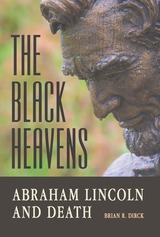 The Black Heavens: Abraham Lincoln and Death
Brian R. Dirck
Southern Illinois University Press, 2019 Winner, Lincoln Group of New York Award of Achievement 2019
From multiple personal tragedies to the terrible carnage of the Civil War, death might be alongside emancipation of the slaves and restoration of the Union as one of the great central truths of Abraham Lincoln’s life. Yet what little has been written specifically about Lincoln and death is insufficient, sentimentalized, or devoid of the rich historical literature about death and mourning during the nineteenth century. The Black Heavens: Abraham Lincoln and Death is the first in-depth account of how the sixteenth president responded to the riddles of mortality, undertook personal mourning, and coped with the extraordinary burden of sending hundreds of thousands of soldiers to be killed on battlefields.
Going beyond the characterization of Lincoln as a melancholy, tragic figure, Brian R. Dirck investigates Lincoln’s frequent encounters with bereavement and sets his response to death and mourning within the social, cultural, and political context of his times. At a young age Lincoln saw the grim reality of lives cut short when he lost his mother and sister. Later, he was deeply affected by the deaths of two of his sons, three-year-old Eddy in 1850 and eleven-year-old Willie in 1862, as well as the combat deaths of close friends early in the war. Despite his own losses, Lincoln learned how to approach death in an emotionally detached manner, a survival skill he needed to cope with the reality of his presidency.
Dirck shows how Lincoln gradually turned to his particular understanding of God’s will in his attempts to articulate the meaning of the atrocities of war to the American public, as showcased in his allusions to religious ideas in the Gettysburg Address and the Second Inaugural. Lincoln formed a unique approach to death: both intellectual and emotional, typical and yet atypical of his times. In showing how Lincoln understood and responded to death, both privately and publicly, Dirck paints a compelling portrait of a commander in chief who buried two sons and gave the orders that sent an unprecedented number of Americans to their deaths.
 Black Hills Forestry: A History
John F. Freeman
University Press of Colorado, 2023 The first study focused on the history of the Black Hills National Forest, its centrality to life in the region, and its preeminence within the National Forest System, Black Hills Forestry is a cultural history of the most commercialized national forest in the nation. One of the first forests actively managed by the federal government and the site of the first sale of federally owned timber to a private party, the Black Hills National Forest has served as a management model for all national forests. Its many uses, activities, and issues—recreation, timber, mining, grazing, tourism, First American cultural usage, and the intermingling of public and private lands—expose the ongoing tensions between private landowners and public land managers. Freeman shows how forest management in the Black Hills encapsulates the Forest Service's failures to keep up with changes in the public's view of forest values until compelled to do so by federal legislation and the courts. In addition, he explores how more recent events in the region like catastrophic wildfires and mountain pine beetle epidemics have provided forest managers with the chance to realign their efforts to create and maintain a biologically diverse forest that can better resist natural and human disturbances. This study of the Black Hills offers an excellent prism through which to view the history of the US Forest Service's land management policies. Foresters, land managers, and regional historians will find Black Hills Forestry a valuable resource.
 Black Hills Ghost Towns
Watson Parker
Ohio University Press, 1974 The Black Hills have been famous ever since the gold rush days of the 1870s when General George A. Custer’s expedition in the summer of 1874 found and advertised placer gold in the Black Hills valleys and a rush to the Hills began. Indian claimants to the area were placated, defeated or ignored and by 1875 a gold rush that continues to the present was under way.The Homestake Mining Company in the Black Hills is today one of the largest operating gold mines in the world. Thousands of unknown miners, merchants, gamblers and soiled doves have come and gone during the century past. And hundreds of towns have boomed and busted, most of them before the beginning of the twentieth century.This book takes a look at the remains of those ghosts: the camps, the stage stops, the communities, the people who made the Black Hills famous. In extensive gazetteer fashion, the authors detail 600 towns and enrich the text with a lavish layout of historical and contemporary photos. Also included are maps and tips on how to locate the ruins of those ghost towns.
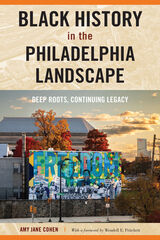 Black History in the Philadelphia Landscape: Deep Roots, Continuing Legacy
Amy Jane Cohen
Temple University Press, 2024 Black Philadelphians have shaped Philadelphia history since colonial times. In Black History in the Philadelphia Landscape, Amy Cohen recounts notable aspects of the Black experience in Philadelphia from the late 1600s to the 1960s and how this history is marked in the contemporary city. She charts Charles Blockson’s efforts to commemorate the Pennsylvania slave trade with a historical marker and highlights Richard Allen, who founded Mother Bethel A.M.E. Church.
Cohen also describes the path to erecting a statue of civil rights activist Octavius Catto at Philadelphia’s City Hall and profiles international celebrities Marian Anderson and Paul Robeson who are honored in the city. At the end of each chapter, she includes suggestions to continue readers’ exploration of this important cultural heritage.
Showing how increased attention to the role of African Americans in local and national history has resulted in numerous, sometimes controversial, alterations to the landscape, Cohen guides readers to Black history’s significance and its connections with today’s spotlight on racial justice.
Black Holes and Relativistic Stars
Edited by Robert M. Wald
University of Chicago Press, 1998 A comprehensive summary of progress made during the past decade on the theory of black holes and relativistic stars, this collection includes discussion of structure and oscillations of relativistic stars, the use of gravitational radiation detectors, observational evidence for black holes, cosmic censorship, numerical work related to black hole collisions, the internal structure of black holes, black hole thermodynamics, information loss and other issues related to the quantum properties of black holes, and recent developments in the theory of black holes in the context of string theory.
Volume contributors: Valeria Ferrari, John L. Friedman, James B. Hartle, Stephen W. Hawking, Gary T. Horowitz, Werner Israel, Roger Penrose, Martin J. Rees, Rafael D. Sorkin, Saul A. Teukolsky, Kip S. Thorne, and Robert M. Wald.
 Black Hunger: Soul Food And America
Doris Witt
University of Minnesota Press, 2004 Explores the complex relationship between food and African American history
In 1889, the owners of a pancake mix witnessed the vaudeville performance of a white man in blackface and drag playing a character called Aunt Jemima. This character went on to become one of the most pervasive stereotypes of black women in the United States, embodying not only the pancakes she was appropriated to market but also post–Civil War race and gender hierarchies—including the subordination of African American women as servants and white fantasies of the nurturing mammy. Using the history of Aunt Jemima as a springboard for exploring the relationship between food and African Americans, Black Hunger focuses on debates over soul food since the 1960s to illuminate a complex web of political, economic, religious, sexual, and racial tensions between whites and blacks and within the black community itself. Celebrated by many African Americans as a sacramental emblem of slavery and protest, soul food was simultaneously rejected by others as a manifestation of middle-class black “slumming.” Highlighting the importance of food for men as well as women, Doris Witt traces the promotion of soul food by New York Times food writer Craig Claiborne and its prohibition by Nation of Islam leader Elijah Muhammad and comedian-turned-diet guru Dick Gregory. A discussion of cookbook author Vertamae Grosvenor, who distanced herself from the myth of plantation mammy by reimagining soul food as "vibration cooking," sets the stage for Witt's concluding argument that the bodies and appetites of African American women should be viewed as central to contemporary conversations about eating disorders and reproductive rights. Witt draws on vaudeville, literature, film, visual art, and cookbooks to explore how food has been used both to perpetuate and to challenge racial stereotypes. Raising her fist in a Black Power salute, wielding her spatula like a sword, Aunt Jemima steps off the pancake box in a righteous fury.
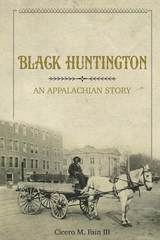 Black Huntington: An Appalachian Story
Cicero M. Fain III
University of Illinois Press, 2019 How African Americans thrived in a West Virginia city By 1930, Huntington had become West Virginia's largest city. Its booming economy and relatively tolerant racial climate attracted African Americans from across Appalachia and the South. Prosperity gave these migrants political clout and spurred the formation of communities that defined black Huntington--factors that empowered blacks to confront institutionalized and industrial racism on the one hand and the white embrace of Jim Crow on the other. Cicero M. Fain III illuminates the unique cultural identity and dynamic sense of accomplishment and purpose that transformed African American life in Huntington. Using interviews and untapped archival materials, Fain details the rise and consolidation of the black working class as it pursued, then fulfilled, its aspirations. He also reveals how African Americans developed a host of strategies--strong kin and social networks, institutional development, property ownership, and legal challenges--to defend their gains in the face of the white status quo. Eye-opening and eloquent, Black Huntington makes visible another facet of the African American experience in Appalachia.
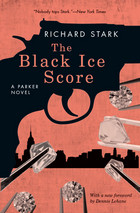 The Black Ice Score: A Parker Novel
Richard Stark
University of Chicago Press, 2010 An action-packed crime novel starring Parker, the heister starring in the forthcoming Shane Black film Play Dirty!
Richard Stark's Parker novels are the hardest of hard-boiled, classic crime novels where the heists are huge, the body counts are high, and the bad guys usually win.
The Parker novels have been a huge influence on countless writers and filmmakers, including Quentin Tarantino, Stephen King, George Pelecanos, Colson Whitehead, Lucy Sante, John Banville, and many more. Their stripped-down language and hard-as-nails amorality create an unforgettable world where the next score could be the big one, but your next mistake could also be your last. There's nothing else like them.
In The Black Ice Score, a corrupt African colonel has converted half his country’s wealth into diamonds and smuggled them to a Manhattan safe house. Four upstanding citizens plan to rescue their new nation by stealing the diamonds back—with the help of a “specialist”: Parker. Will Parker break his rule against working with amateurs and help them because his woman would be disappointed if he doesn’t? Or because three hired morons have threatened to kill him and his woman if he does? They thought they were buying an advantage, but what they get is a predated death certificate.
 Black Identities: West Indian Immigrant Dreams and American Realities
Mary C. Waters
Harvard University Press, 1999 The story of West Indian immigrants to the United States is considered a great success. Many of these adoptive citizens have prospered, including General Colin Powell. But Mary Waters tells a very different story about immigrants from the West Indies, especially their children.
She finds that when the immigrants first arrive, their knowledge of English, their skills and contacts, their self-respect, and their optimistic assessment of American race relations facilitate their integration into the American economic structure. Over time, however, the realities of American race relations begin to swamp their positive cultural values. Persistent, blatant racial discrimination soon undermines the openness to whites the immigrants have when they first arrive. Discrimination in housing channels them into neighborhoods with inadequate city services and high crime rates. Inferior public schools undermine their hopes for their children's future. Low wages and poor working conditions are no longer attractive for their children, who use American and not Caribbean standards to measure success.
Ultimately, the values that gained these first-generation immigrants initial success--a willingness to work hard, a lack of attention to racism, a desire for education, an incentive to save--are undermined by the realities of life in the United States. In many families, the hard-won relative success of the parents is followed by the downward slide of their children. Contrary to long-held beliefs, Waters finds, those who resist Americanization are most likely to succeed economically, especially in the second generation.
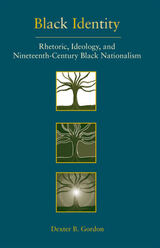 Black Identity: Rhetoric, Ideology, and Nineteenth-Century Black Nationalism
Dexter B. Gordon
Southern Illinois University Press, 2006 Exploring the role of rhetoric in African American identity and political discourse Dexter B. Gordon’s Black Identity: Rhetoric, Ideology, and Nineteenth-Century Black Nationalism explores the problem of racial alienation and the importance of rhetoric in the formation of black identity in the United States. Faced with alienation and disenfranchisement as a part of their daily experience, African Americans developed collective practices of empowerment that cohere as a constitutive rhetoric of black ideology. Exploring the origins of that rhetoric, Gordon reveals how the ideology of black nationalism functions in contemporary African American political discourse. Rooting his study in the words and works of nineteenth-century black abolitionists such as Maria Stewart, David Walker, and Henry Garnet, Gordon explores the rapprochement between rhetorical theory, race, alienation, and the role of public memory in identity formation. He argues that abolitionists used language in their speeches, pamphlets, letters, petitions, and broadsides that established black identity in ways that would foster liberation and empowerment. The arguments presented here constitute the only sustained treatment of nineteenth-century black activists from a rhetorical perspective. Gordon demonstrates the pivotal role of rhetoric in African American efforts to create a viable public voice. Understanding nineteenth-century black alienation—and its intersection with twentieth-century racism—is crucial to understanding the continued sense of alienation that African Americans express about their American experience. Gordon explains how the ideology of black nationalism disciplines and describes African American life for its own ends, exposing a central piece of the ideological struggle for the soul of America. The book is both a platform for further discussion and an invitation for more voices to join the discourse as we search for ways to comprehend the sense of alienation experienced and expressed by African Americans in contemporary society.
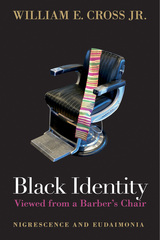 Black Identity Viewed from a Barber's Chair: Nigrescence and Eudaimonia
William E. Cross, Jr.
Temple University Press, 2021 Throughout his esteemed career, William Cross has tried to reconcile how Black men he met in the barber shop “seemed so normal,” but the portrayal in college textbooks of Black people in general—and the Black working class in particular—is self-hating and pathological. In Black Identity Viewed from a Barber’s Chair, Cross revisits his ground-breaking model on Black identity awakening known as Nigrescence, connects W. E. B. DuBois’s concept of double consciousness to an analysis of how Black identity is performed in everyday life, and traces the origins of the deficit perspective on Black culture to scholarship dating back to the 1930s. He follows with a critique showing such deficit and Black self-hatred tropes were always based on extremely weak evidence. Black Identity Viewed from a Barber’s Chair ends with a new understanding of the psychology of slavery that helps explain why and how, during the first twelve years of emancipation, countless former slaves exhibited amazing psychological, political, and cultural independence. Once free, their previously hidden psychology became public. His booksets out to disrupt and agitate as Cross attempts to more accurately capture the humanity of Black people that has been overlooked in previous research.
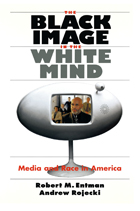 The Black Image in the White Mind: Media and Race in America
Robert M. Entman and Andrew Rojecki
University of Chicago Press, 2001 Living in a segregated society, white Americans learn about African Americans not through personal relationships but through the images the media show them. The Black Image in the White Mind offers the most comprehensive look at the intricate racial patterns in the mass media and how they shape the ambivalent attitudes of Whites toward Blacks.
Using the media, and especially television, as barometers of race relations, Robert Entman and Andrew Rojecki explore but then go beyond the treatment of African Americans on network and local news to incisively uncover the messages sent about race by the entertainment industry-from prime-time dramas and sitcoms to commercials and Hollywood movies. While the authors find very little in the media that intentionally promotes racism, they find even less that advances racial harmony. They reveal instead a subtle pattern of images that, while making room for Blacks, implies a racial hierarchy with Whites on top and promotes a sense of difference and conflict. Commercials, for example, feature plenty of Black characters. But unlike Whites, they rarely speak to or touch one another. In prime time, the few Blacks who escape sitcom buffoonery rarely enjoy informal, friendly contact with White colleagues—perhaps reinforcing social distance in real life.
Entman and Rojecki interweave such astute observations with candid interviews of White Americans that make clear how these images of racial difference insinuate themselves into Whites' thinking.
Despite its disturbing readings of television and film, the book's cogent analyses and proposed policy guidelines offer hope that America's powerful mediated racial separation can be successfully bridged.
"Entman and Rojecki look at how television news focuses on black poverty and crime out of proportion to the material reality of black lives, how black 'experts' are only interviewed for 'black-themed' issues and how 'black politics' are distorted in the news, and conclude that, while there are more images of African-Americans on television now than there were years ago, these images often don't reflect a commitment to 'racial comity' or community-building between the races. Thoroughly researched and convincingly argued."—Publishers Weekly
"Drawing on their own research and that of a wide array of other scholars, Entman and Rojecki present a great deal of provocative data showing a general tendency to devalue blacks or force them into stock categories."—Ben Yagoda, New Leader
Winner of the Frank Luther Mott Award for best book in Mass Communication and the Robert E. Lane Award for best book in political psychology.
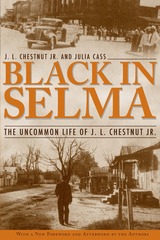 Black in Selma: The Uncommon Life of J. L. Chestnut Jr.
J. L. Chestnut
University of Alabama Press, 2007 One man’s fight for justice. One town’s reckoning with history. Born in Selma in 1930, J. L. Chestnut left home to study law at Howard University in Washington, DC. Returning to Selma, Chestnut was the town’s first and only African American attorney in the late 1950s. As the turbulent struggle for civil rights spread across the South, Chestnut became an active and ardent promoter of social and legal equality in his hometown. A key player on the local and state fronts, Chestnut accrued deep insights into the racial tensions in his community and deftly opened paths toward a more equitable future. Though intimately involved in many events that took place in Selma, Chestnut was nevertheless often identified in history books simply as “a local attorney.” Black in Selma reveals his powerful yet little-known story. In the 2014 film Selma, director Ava DuVernay takes audiences to the climactic confrontation between civil rights advocates and the state’s security forces of March 1965. Readers looking for a deeper understanding of the events that preceded that epic moment, as well as how racial integration unfolded in Selma in the decades that followed, will find Chestnut’s story and memories both a vital primary source and an inspiration.
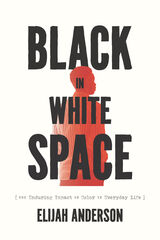 Black in White Space: The Enduring Impact of Color in Everyday Life
Elijah Anderson
University of Chicago Press, 2021 From the vital voice of Elijah Anderson, Black in White Space sheds fresh light on the dire persistence of racial discrimination in our country.
A birder strolling in Central Park. A college student lounging on a university quad. Two men sitting in a coffee shop. Perfectly ordinary actions in ordinary settings—and yet, they sparked jarring and inflammatory responses that involved the police and attracted national media coverage. Why? In essence, Elijah Anderson would argue, because these were Black people existing in white spaces.
In Black in White Space, Anderson brings his immense knowledge and ethnography to bear in this timely study of the racial barriers that are still firmly entrenched in our society at every class level. He focuses in on symbolic racism, a new form of racism in America caused by the stubbornly powerful stereotype of the ghetto embedded in the white imagination, which subconsciously connects all Black people with crime and poverty regardless of their social or economic position. White people typically avoid Black space, but Black people are required to navigate the “white space” as a condition of their existence. From Philadelphia street-corner conversations to Anderson’s own morning jogs through a Cape Cod vacation town, he probes a wealth of experiences to shed new light on how symbolic racism makes all Black people uniquely vulnerable to implicit bias in police stops and racial discrimination in our country.
An unwavering truthteller in our national conversation on race, Anderson has shared intimate and sharp insights into Black life for decades. Vital and eye-opening, Black in White Space will be a must-read for anyone hoping to understand the lived realities of Black people and the structural underpinnings of racism in America.
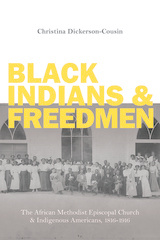 Black Indians and Freedmen: The African Methodist Episcopal Church and Indigenous Americans, 1816-1916
Christina Dickerson-Cousin
University of Illinois Press, 2021 Often seen as ethnically monolithic, the African Methodist Episcopal (AME) Church in fact successfully pursued evangelism among diverse communities of indigenous peoples and Black Indians. Christina Dickerson-Cousin tells the little-known story of the AME Church’s work in Indian Territory, where African Methodists engaged with people from the Five Civilized Tribes (Cherokees, Creeks, Choctaws, Chickasaws, and Seminoles) and Black Indians from various ethnic backgrounds. These converts proved receptive to the historically Black church due to its traditions of self-government and resistance to white hegemony, and its strong support of their interests. The ministers, guided by the vision of a racially and ethnically inclusive Methodist institution, believed their denomination the best option for the marginalized people. Dickerson-Cousin also argues that the religious opportunities opened up by the AME Church throughout the West provided another impetus for Black migration. Insightful and richly detailed, Black Indians and Freedmen illuminates how faith and empathy encouraged the unique interactions between two peoples.
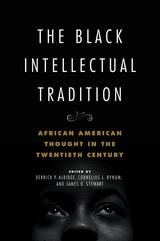 The Black Intellectual Tradition: African American Thought in the Twentieth Century
Edited by Derrick P. Alridge, Cornelius L. Bynum, and James B. Stewart
University of Illinois Press, 2021 Considering the development and ongoing influence of Black thought From 1900 to the present, people of African descent living in the United States have drawn on homegrown and diasporic minds to create a Black intellectual tradition engaged with ideas on race, racial oppression, and the world. This volume presents essays on the diverse thought behind the fight for racial justice as developed by African American artists and intellectuals; performers and protest activists; institutions and organizations; and educators and religious leaders. By including both women’s and men’s perspectives from the U.S. and the Diaspora, the essays explore the full landscape of the Black intellectual tradition. Throughout, contributors engage with important ideas ranging from the consideration of gender within the tradition, to intellectual products generated outside the intelligentsia, to the ongoing relationship between thought and concrete effort in the quest for liberation. Expansive in scope and interdisciplinary in practice, The Black Intellectual Tradition delves into the ideas that animated a people’s striving for full participation in American life. Contributors: Derrick P. Alridge, Keisha N. Blain, Cornelius L. Bynum, Jeffrey Lamar Coleman, Pero Gaglo Dagbovie, Stephanie Y. Evans, Aaron David Gresson III, Claudrena N. Harold, Leonard Harris, Maurice J. Hobson, La TaSha B. Levy, Layli Maparyan, Zebulon V. Miletsky, R. Baxter Miller, Edward Onaci, Venetria K. Patton, James B. Stewart, and Nikki M. Taylor
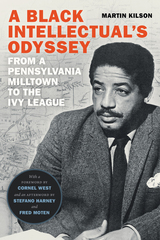 A Black Intellectual's Odyssey: From a Pennsylvania Milltown to the Ivy League
Martin Kilson
Duke University Press, 2021 In 1969, Martin Kilson became the first tenured African American professor at Harvard University, where he taught African and African American politics for over thirty years. In A Black Intellectual's Odyssey, Kilson takes readers on a fascinating journey from his upbringing in the small Pennsylvania milltown of Ambler to his experiences attending Lincoln University—the country's oldest HBCU—to pursuing graduate study at Harvard before spending his entire career there as a faculty member. This is as much a story of his travels from the racist margins of twentieth-century America to one of the nation's most prestigious institutions as it is a portrait of the places that shaped him.
He gives a sweeping sociological tour of Ambler as a multiethnic, working-class company town while sketching the social, economic, and racial elements that marked everyday life. From narrating the area's history of persistent racism and the racial politics in the integrated schools to describing the Black church's role in buttressing the town's small Black community, Kilson vividly renders his experience of northern small-town life during the 1930s and 1940s.
At Lincoln University, Kilson's liberal political views coalesced as he became active in the local NAACP chapter. While at Lincoln and during his graduate work at Harvard, Kilson observed how class, political, and racial dynamics influenced his peers' political engagement, diverse career paths, and relationships with white people. As a young professor, Kilson made a point of assisting Harvard's African American students in adapting to life at a white institution.
Throughout his career, Kilson engaged in pioneering scholarship while mentoring countless students. A Black Intellectual's Odyssey features contributions from three of his students: a foreword by Cornel West and an afterword by Stefano Harney and Fred Moten.
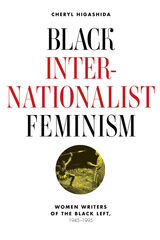 Black Internationalist Feminism: Women Writers of the Black Left, 1945-1995
Cheryl Higashida
University of Illinois Press, 2013 Black Internationalist Feminism examines how African American women writers affiliated themselves with the post-World War II Black Communist Left and developed a distinct strand of feminism. This vital yet largely overlooked feminist tradition built upon and critically retheorized the postwar Left's "nationalist internationalism," which connected the liberation of Blacks in the United States to the liberation of Third World nations and the worldwide proletariat. Black internationalist feminism critiques racist, heteronormative, and masculinist articulations of nationalism while maintaining the importance of national liberation movements for achieving Black women's social, political, and economic rights. Cheryl Higashida shows how Claudia Jones, Lorraine Hansberry, Alice Childress, Rosa Guy, Audre Lorde, and Maya Angelou worked within and against established literary forms to demonstrate that nationalist internationalism was linked to struggles against heterosexism and patriarchy. Exploring a diverse range of plays, novels, essays, poetry, and reportage, Higashida illustrates how literature is a crucial lens for studying Black internationalist feminism because these authors were at the forefront of bringing the perspectives and problems of black women to light against their marginalization and silencing. In examining writing by Black Left women from 1945–1995, Black Internationalist Feminism contributes to recent efforts to rehistoricize the Old Left, Civil Rights, Black Power, and second-wave Black women's movements.
Black into White: Race and Nationality in Brazilian Thought
Thomas E. Skidmore
Duke University Press, 1993 Published to wide acclaim in 1974, Thomas E. Skidmore's intellectual history of Brazilian racial ideology has become a classic in the field. Available for the first time in paperback, this edition has been updated to include a new preface and bibliography that surveys recent scholarship in the field. Black into White is a broad-ranging study of what the leading Brazilian intellectuals thought and propounded about race relations between 1870 and 1930. In an effort to reconcile social realities with the doctrines of scientific racism, the Brazilian ideal of "whitening"—the theory that the Brazilian population was becoming whiter as race mixing continued—was used to justify the recruiting of European immigrants and to falsely claim that Brazil had harmoniously combined a multiracial society of Europeans, Africans, and indigenous peoples.
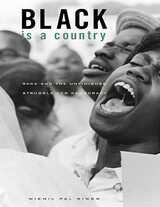 Black Is a Country: Race and the Unfinished Struggle for Democracy
Nikhil Pal Singh
Harvard University Press, 2004 Despite black gains in modern America, the end of racism is not yet in sight. Nikhil Pal Singh asks what happened to the worldly and radical visions of equality that animated black intellectual activists from W. E. B. Du Bois in the 1930s to Martin Luther King, Jr. in the 1960s. In so doing, he constructs an alternative history of civil rights in the twentieth century, a long civil rights era, in which radical hopes and global dreams are recognized as central to the history of black struggle.
It is through the words and thought of key black intellectuals, like Du Bois, Ralph Bunche, C. L. R. James, Richard Wright, Ralph Ellison, Langston Hughes, and others, as well as movement activists like Malcolm X and Black Panthers, that vital new ideas emerged and circulated. Their most important achievement was to create and sustain a vibrant, black public sphere broadly critical of U.S. social, political, and civic inequality.
Finding racism hidden within the universalizing tones of reform-minded liberalism at home and global democratic imperatives abroad, race radicals alienated many who saw them as dangerous and separatist. Few wanted to hear their message then, or even now, and yet, as Singh argues, their passionate skepticism about the limits of U.S. democracy remains as indispensable to a meaningful reconstruction of racial equality and universal political ideals today as it ever was.
Black Jack: John A. Logan and Southern Illinois in the Civil War Era
James Pickett Jones. Foreword by John Y. Simon
Southern Illinois University Press, 1995 John A. Logan, called "Black Jack" by the men he led in Civil War battles from the Henry-Donelson campaign to Vicksburg, Chattanooga, and on to Atlanta, was one of the Union Army’s most colorful generals. James Pickett Jones places Logan in his southern Illinois surroundings as he examines the role of the political soldier in the Civil War. When Logan altered his stance on national issues, so did the southern part of the state. Although secession, civil strife, Copperheadism, and the new attitudes created by the war contributed to this change of position in southern Illinois, Logan’s role as political and military leader was important in the region’s swing to strong support of the war against the Confederacy, to the policies of Lincoln, and eventually, to the Republican party.
 Black Jacks: African American Seamen in the Age of Sail
W. Jeffrey Bolster
Harvard University Press, 1997 Few Americans, black or white, recognize the degree to which early African American history is a maritime history. W. Jeffrey Bolster shatters the myth that black seafaring in the age of sail was limited to the Middle Passage. Seafaring was one of the most significant occupations among both enslaved and free black men between 1740 and 1865. Tens of thousands of black seamen sailed on lofty clippers and modest coasters. They sailed in whalers, warships, and privateers. Some were slaves, forced to work at sea, but by 1800 most were free men, seeking liberty and economic opportunity aboard ship.Bolster brings an intimate understanding of the sea to this extraordinary chapter in the formation of black America. Because of their unusual mobility, sailors were the eyes and ears to worlds beyond the limited horizon of black communities ashore. Sometimes helping to smuggle slaves to freedom, they were more often a unique conduit for news and information of concern to blacks.But for all its opportunities, life at sea was difficult. Blacks actively contributed to the Atlantic maritime culture shared by all seamen, but were often outsiders within it. Capturing that tension, Black Jacks examines not only how common experiences drew black and white sailors together—even as deeply internalized prejudices drove them apart—but also how the meaning of race aboard ship changed with time. Bolster traces the story to the end of the Civil War, when emancipated blacks began to be systematically excluded from maritime work. Rescuing African American seamen from obscurity, this stirring account reveals the critical role sailors played in helping forge new identities for black people in America.An epic tale of the rise and fall of black seafaring, Black Jacks is African Americans’ freedom story presented from a fresh perspective.
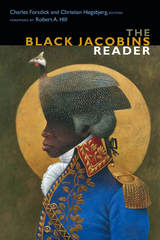 The Black Jacobins Reader
Charles Forsdick and Christian Høgsbjerg, editors
Duke University Press, 2017 Containing a wealth of new scholarship and rare primary documents, The Black Jacobins Reader provides a comprehensive analysis of C. L. R. James's classic history of the Haitian Revolution. In addition to considering the book's literary qualities and its role in James's emergence as a writer and thinker, the contributors discuss its production, context, and enduring importance in relation to debates about decolonization, globalization, postcolonialism, and the emergence of neocolonial modernity. The Reader also includes the reflections of activists and novelists on the book's influence and a transcript of James's 1970 interview with Studs Terkel. Contributors. Mumia Abu-Jamal, David Austin, Madison Smartt Bell, Anthony Bogues, John H. Bracey Jr., Rachel Douglas, Laurent Dubois, Claudius K. Fergus, Carolyn E. Fick, Charles Forsdick, Dan Georgakas, Robert A. Hill, Christian Høgsbjerg, Selma James, Pierre Naville, Nick Nesbitt, Aldon Lynn Nielsen, Matthew Quest, David M. Rudder, Bill Schwarz, David Scott, Russell Maroon Shoatz, Matthew J. Smith, Studs Terkel
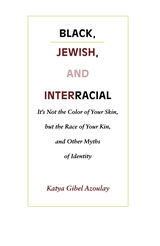 Black, Jewish, and Interracial: It’s Not the Color of Your Skin, but the Race of Your Kin, and Other Myths of Identity
Katya Gibel Azoulay
Duke University Press, 1997 How do adult children of interracial parents—where one parent is Jewish and one is Black—think about personal identity? This question is at the heart of Katya Gibel Azoulay’s Black, Jewish, and Interracial. Motivated by her own experience as the child of a Jewish mother and Jamaican father, Gibel Azoulay blends historical, theoretical, and personal perspectives to explore the possibilities and meanings that arise when Black and Jewish identities merge. As she asks what it means to be Black, Jewish, and interracial, Gibel Azoulay challenges deeply ingrained assumptions about identity and moves toward a consideration of complementary racial identities.
Beginning with an examination of the concept of identity as it figures in philosophical and political thought, Gibel Azoulay moves on to consider and compare the politics and traditions of the Black and Jewish experience in America. Her inquiry draws together such diverse subjects as Plessy v. Ferguson, the Leo Frank case, "passing," intermarriage, civil rights, and anti-Semitism. The paradoxical presence of being both Black and Jewish, she argues, leads questions of identity, identity politics, and diversity in a new direction as it challenges distinct notions of whiteness and blackness. Rising above familiar notions of identity crisis and cultural confrontation, she offers new insights into the discourse of race and multiculturalism as she suggests that identity can be a more encompassing concept than is usually thought. Gibel Azoulay adds her own personal history and interviews with eight other Black and Jewish individuals to reveal various ways in which interracial identities are being lived, experienced, and understood in contemporary America.
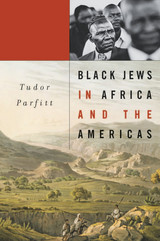 Black Jews in Africa and the Americas
Tudor Parfitt
Harvard University Press, 2012 Black Jews in Africa and the Americas tells the fascinating story of how the Ashanti, Tutsi, Igbo, Zulu, Beta Israel, Maasai, and many other African peoples came to think of themselves as descendants of the ancient tribes of Israel. Pursuing medieval and modern European race narratives over a millennium in which not only were Jews cast as black but black Africans were cast as Jews, Tudor Parfitt reveals a complex history of the interaction between religious and racial labels and their political uses.
For centuries, colonialists, travelers, and missionaries, in an attempt to explain and understand the strange people they encountered on the colonial frontier, labeled an astonishing array of African tribes, languages, and cultures as Hebrew, Jewish, or Israelite. Africans themselves came to adopt these identities as their own, invoking their shared histories of oppression, imagined blood-lines, and common traditional practices as proof of a racial relationship to Jews.
Beginning in the post-slavery era, contacts between black Jews in America and their counterparts in Africa created powerful and ever-growing networks of black Jews who struggled against racism and colonialism. A community whose claims are denied by many, black Jews have developed a strong sense of who they are as a unique people. In Parfitt’s telling, forces of prejudice and the desire for new racial, redemptive identities converge, illuminating Jewish and black history alike in novel and unexplored ways.
 The Black Kingdom of the Nile
Charles Bonnet
Harvard University Press, 2019 Landmark archaeological excavations that radically revise the early history of Africa.
For the past fifty years, Charles Bonnet has been excavating sites in present-day Sudan and Egypt that point to the existence of a sophisticated ancient black African civilization thriving alongside the Egyptians. In The Black Kingdom of the Nile, he gathers the results of these excavations to reveal the distinctively indigenous culture of the black Nubian city of Kerma, the capital of the Kingdom of Kush. This powerful and complex political state organized trade to the Mediterranean basin and built up a military strong enough to resist Egyptian forces.
Further explorations at Dukki Gel, north of Kerma, reveal a major Nubian fortified city of the mid-second millennium BCE featuring complex round and oval structures. Bonnet also found evidence of the revival of another powerful black Nubian society, seven centuries after Egypt conquered Kush around 1500 BCE, when he unearthed seven life-size granite statues of Black Pharaohs (ca. 744–656 BCE). Bonnet’s discoveries have shaken our understanding of the origins and sophistication of early civilization in the heart of black Africa.
Until Bonnet began his work, no one knew the extent and power of the Nubian state or the existence of the Black Pharaohs who presided successfully over their lands. The political, military, and commercial achievements revealed in these Nubian sites challenge our long-held belief that the Egyptians were far more advanced than their southern neighbors and that black kingdoms were effectively vassal states. Charles Bonnet’s discovery of this lost black kingdom forces us to rewrite the early history of the African continent.
 Black Knights: Arabic Epic and the Making of Medieval Race
Rachel Schine
University of Chicago Press, 2024 A new account of racial logics in premodern Islamic literature.
In Black Knights, Rachel Schine reveals how the Arabic-speaking world developed a different form of racial knowledge than their European neighbors during the Middle Ages. Unlike in European vernaculars, Arabic-language ideas about ethnic difference emerged from conversations extending beyond the Mediterranean, from the Sahara to the Indian Ocean. In these discourses, Schine argues, racialized blackness became central to ideas about a global, ethnically inclusive Muslim world.
Schine traces the emergence of these new racial logics through popular Islamic epics, drawing on legal, medical, and religious literatures from the period to excavate a diverse and ever-changing conception of blackness and race. The result is a theoretically nuanced case for the existence and malleability of racial logics in premodern Islamic contexts across a variety of social and literary formations.
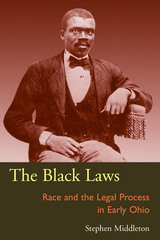 The Black Laws: Race and the Legal Process in Early Ohio
Stephen Middleton
Ohio University Press, 2005 Beginning in 1803, the Ohio legislature enacted what came to be known as the Black Laws. These laws instituted barriers against blacks entering the state and placed limits on black testimony against whites. Basing his narrative on massive primary research, often utilizing previously unexplored sources, Stephen Middleton tells the story of racial oppression in Ohio and recounts chilling episodes of how blacks asserted their freedom by challenging the restrictions in the racial codes until the state legislature repealed some pernicious features in 1849 and finally abolished them in 1886. The fastest-growing state in antebellum America and the destination of whites from the North and the South, Ohio also became the destination for thousands of southern blacks, both free and runaway. Thus, nineteenth-century Ohio became a legal battleground for two powerful and far-reaching impulses in the history of race and law in America. One was the use of state power to further racial discrimination, and the other was the thirst of African Americans and their white allies for equality under the law for all Americans. Written in a clear and compelling style, this pathbreaking study will be required reading for historians, legal scholars, students, and those interested in the struggle for civil rights in America.
 Black Lawyers, White Courts: The Soul of South African Law
Kenneth S. Broun
Ohio University Press, 2000 In the struggle against apartheid, one often overlooked group of crusaders was the coterie of black lawyers who overcame the Byzantine system that the government established oftentimes explicitly to block the paths of its black citizens from achieving justice. Now, in their own voices, we have the narratives of many of those lawyers as recounted in a series of oral interviews. Black Lawyers, White Courts is their story and the anti-apartheid story that has before now gone untold. Professor Kenneth Broun conducted interviews with twenty-seven black South African lawyers. They were asked to tell about their lives, including their family backgrounds, education, careers, and their visions for the future. In many instances they also discussed their years in prison or exile, or under house arrest. Most told of both education and careers interrupted because of the ongoing struggle. The story of the professional achievements of black lawyers in South Africa—indeed their very survival—provides an example of the triumph of individuals and, ultimately, of the law. Black Lawyers, White Courts is about South Africa, and about black professionals in that country, but the lessons its protagonists teach extend far beyond circumstances, geography, or race.
Black Legislators in Louisiana during Reconstruction
Charles Vincent
Southern Illinois University Press, 2011 When originally published, Charles Vincent's scholarship shed new light on the achievements of black legislators in the state legislatures in post-Civil War Louisiana-a state where black people were a majority in the state population but a minority in the legislature. Now updated with a new preface, this volume endures as an important work that illustrates the strength of minorities in state government during Reconstruction. It focuses on the achievements of the black representatives and senators in the Louisiana legislature who, through tireless fighting, were able to push forward many progressive reforms, such as universal public education, and social programs for the less fortunate.
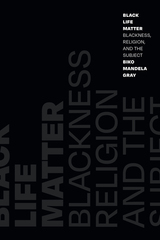 Black Life Matter: Blackness, Religion, and the Subject
Biko Mandela Gray
Duke University Press, 2022 In Black Life Matter, Biko Mandela Gray offers a philosophical eulogy for Aiyana Stanley-Jones, Tamir Rice, Alton Sterling, and Sandra Bland that attests to their irreducible significance in the face of unremitting police brutality. Gray employs a theoretical method he calls “sitting-with”—a philosophical practice of care that seeks to defend the dead and the living. He shows that the police who killed Stanley-Jones and Rice reduced them to their bodies in ways that turn black lives into tools that the state uses to justify its violence and existence. He outlines how Bland’s arrest and death reveal the affective resonances of blackness, and he contends that Sterling’s physical movement and speech before he was killed point to black flesh as unruly living matter that exceeds the constraints of the black body. These four black lives, Gray demonstrates, were more than the brutal violence enacted against them; they speak to a mode of life that cannot be fully captured by the brutal logics of antiblackness.
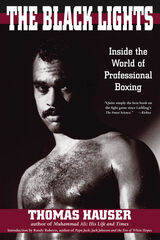 The Black Lights: Inside the World of Professional Boxing
Thomas Hauser
University of Arkansas Press Originally published in 1986 (McGraw-Hill), The Black Lights was the first book that fully explored the sport and business of professional boxing. Upon joining the training camp of superlightweight Billy Costello, Thomas Hauser was given unprecedented access to the fighter, his manager, and trainer as well as to the real heavyweights of the boxing world, promoter Don King, and World Boxing Council president Jose Sulaiman. The result, according to Playboy in their review of the original, is a book that "explains why fighters fight, what they go through to win, and how they feel when they lose. It is a great book." In this gracefully written, fast-paced narrative, the author slips quietly into the background and gives us a firsthand look at a business that is often cruel and exploitative and a sport that is at once violent and beautiful. As the San Francisco Chronicle points out, The Black Lights provides ammunition for both sides in the debate over boxing: "Hauser has written what is clearly the most complete and fairminded work on the subject to date." In an age when the controversy surrounding the evils and merits of boxing still rages, this classic account is more timely than ever.
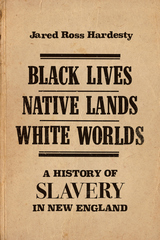 Black Lives, Native Lands, White Worlds: A History of Slavery in New England
Jared Ross Hardesty
University of Massachusetts Press, 2019 Shortly after the first Europeans arrived in seventeenth-century New England, they began to import Africans and capture the area's indigenous peoples as slaves. By the eve of the American Revolution, enslaved people comprised only about 4 percent of the population, but slavery had become instrumental to the region's economy and had shaped its cultural traditions. This story of slavery in New England has been little told.
In this concise yet comprehensive history, Jared Ross Hardesty focuses on the individual stories of enslaved people, bringing their experiences to life. He also explores larger issues such as the importance of slavery to the colonization of the region and to agriculture and industry, New England's deep connections to Caribbean plantation societies, and the significance of emancipation movements in the era of the American Revolution. Thoroughly researched and engagingly written, Black Lives, Native Lands, White Worlds is a must-read for anyone interested in the history of New England.
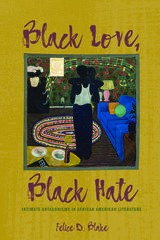 Black Love, Black Hate: Intimate Antagonisms in African American Literature
Felice D. Blake
Ohio State University Press, 2018 Felice D. Blake’s Black Love, Black Hate: Intimate Antagonisms in African American Literature highlights the pervasive representations of intraracial deceptions, cruelties, and contempt in Black literature. Literary criticism has tended to focus on Black solidarity and the ways that a racially linked fate has compelled Black people to counter notions of Black inferiority with unified notions of community driven by political commitments to creative rehumanization and collective affirmation. Blake shows how fictional depictions of intraracial conflict perform necessary work within the Black community, raising questions about why racial unity is so often established from the top down and how loyalty to Blackness can be manipulated to reinforce deleterious forms of subordination to oppressive gender, sexual, and class norms.
Most importantly, the book shows how literature constitutes an alternative public sphere for Black people. In a society largely controlled by white supremacist actors and institutions, Black authors have conjured fiction into a space where hard questions can be asked and answered and where the work of combatting collective, racist suppression can occur without replicating oppressive hierarchies. Intimate Antagonisms uncovers a key theme in Black fiction and argues that literature itself is a vital institutional site within Black life. Through the examination of intimate conflicts in a wide array of twentieth- and twenty-first-century novels, Blake demonstrates the centrality of intraracial relations to the complexity and vision of Black social movements and liberation struggles and the power and promise of Black narrative in reshaping struggle.
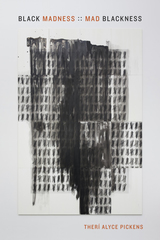 Black Madness :: Mad Blackness
Therí Alyce Pickens
Duke University Press, 2019 In Black Madness :: Mad Blackness Therí Alyce Pickens rethinks the relationship between Blackness and disability, unsettling the common theorization that they are mutually constitutive. Pickens shows how Black speculative and science fiction authors such as Octavia Butler, Nalo Hopkinson, and Tananarive Due craft new worlds that reimagine the intersection of Blackness and madness. These creative writer-theorists formulate new parameters for thinking through Blackness and madness. Pickens considers Butler's Fledgling as an archive of Black madness that demonstrates how race and ability shape subjectivity while constructing the building blocks for antiracist and anti-ableist futures. She examines how Hopkinson's Midnight Robber theorizes mad Blackness and how Due's African Immortals series contests dominant definitions of the human. The theorizations of race and disability that emerge from these works, Pickens demonstrates, challenge the paradigms of subjectivity that white supremacy and ableism enforce, thereby pointing to the potential for new forms of radical politics.
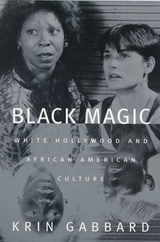 Black Magic: White Hollywood and African American Culture
Krin Gabbard
Rutgers University Press, 2004 Why do so many African American film characters seem to have magical powers? And why do they use them only to help white people? When the actors are white, why is the sound track so commonly performed by African Americans? And why do so many white actors imitate black people when they wish to express strong emotion? As Krin Gabbard brilliantly reveals in Black Magic, we duly recognize the cultural heritage of African Americans in literature, music, and art, but there is a disturbing pattern in the roles that blacks are asked to play-particularly in the movies. Many recent films, including The Matrix, Fargo, The Green Mile, Ghost, The Talented Mr. Ripley, Pleasantville, The Bridges of Madison County, and Crumb, reveal a fascination with black music and sexuality even as they preserve the old racial hierarchies. Quite often the dependence on African American culture remains hidden-although it is almost perversely pervasive. In the final chapters of Black Magic, Gabbard looks at films by Robert Altman and Spike Lee that attempt to reverse many of these widespread trends.
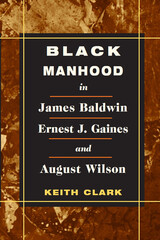 Black Manhood in James Baldwin, Ernest J. Gaines, and August Wilson
Keith Clark
University of Illinois Press, 2002 Challenging the standard portrayals of Black men in African American literature From Frederick Douglass to the present, the preoccupation of black writers with manhood and masculinity is a constant. Black Manhood in James Baldwin, Ernest J. Gaines, and August Wilson explores how in their own work three major African American writers contest classic portrayals of black men in earlier literature, from slave narratives through the great novels of Richard Wright and Ralph Ellison. Keith Clark examines short stories, novels, and plays by Baldwin, Gaines, and Wilson, arguing that since the 1950s the three have interrupted and radically dismantled the constricting literary depictions of black men who equate selfhood with victimization, isolation, and patriarchy. Instead, they have reimagined black men whose identity is grounded in community, camaraderie, and intimacy. Delivering original and startling insights, this book will appeal to scholars and students of African American literature, gender studies, and narratology.
 Black Marriage
Ann duCille, special issue editor
Duke University Press, 2018 Marriage has been a contested term in African American studies. Contributors to this special issue address the subject of “black marriage,” broadly conceived and imaginatively considered from different vantage points. Historically, some scholars have maintained that the systematic enslavement of Africans completely undermined and effectively destroyed the institutions of heteropatriarchal marriage and family, while others have insisted that slaves found creative ways to be together, love each other, and build enduring conjugal relationships and family networks in spite of forced separations, legal prohibitions against marriage, and other hardships of the plantation system. Still others have pointed out that not all African Americans were slaves and that free black men and women formed stable marriages, fashioned strong nuclear and extended families, and established thriving black communities in antebellum cities in both the North and the South.
Against the backdrop of such scholarship, contributors look back to scholarly, legal, and literary treatments of the marriage question and address current concerns, from Beyoncé’s music and marriage to the issues of interracial coupling, marriage equality, and the much-discussed decline in African American marriage rates.
Contributors: Ann duCille, Oneka LaBennett, Mignon Moore, Kevin Quashie, Renee Romano, Hortense Spillers, Kendall Thomas, Rebecca Wanzo, Patricia Williams
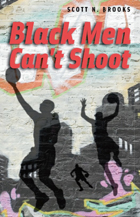 Black Men Can't Shoot
Scott N. Brooks
University of Chicago Press, 2009 The myth of the natural black athlete is widespread, though it’s usually talked about only when a sports commentator or celebrity embarrasses himself by bringing it up in public. Those gaffes are swiftly decried as racist, but apart from their link to the long history of ugly racial stereotypes about black people—especially men—they are also harmful because they obscure very real, hard-fought accomplishments. As Black Men Can’t Shoot demonstrates, such successes on the basketball court don’t happen just because of natural gifts—instead, they grow out of the long, tough, and unpredictable process of becoming a known player.
Scott Norman Brooks spent four years coaching summer league basketball in Philadelphia. And what he saw, heard, and felt working with the young black men on his team tells us much about how some kids are able to make the extraordinary journey from the ghetto to the NCAA. He tells the story of two young men, Jermaine and Ray, following them through their high school years and chronicling their breakthroughs and frustrations on the court as well as their troubles at home. Black Men Can’t Shoot is a moving coming-of-age story that counters the belief that basketball only exploits kids and lures them into following empty dreams—and shows us that by playing ball, some of these young black men have already begun their education even before they get to college.
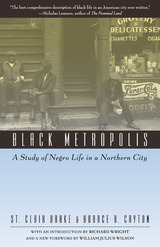 Black Metropolis: A Study of Negro Life in a Northern City
St. Clair Drake and Horace R. Cayton
University of Chicago Press, 1993 Ground-breaking when first published in 1945, Black Metropolis remains a landmark study of race and urban life. Based on a mass of research conducted by Works Progress Administration field workers in the late 1930s, it is a historical and sociological account of the people of Chicago's South Side, the classic urban ghetto. Drake and Cayton's findings not only offer a generalized analysis of black migration, settlement, community structure, and black-white race relations in the early part of the twentieth century, but also tell us what has changed in the last hundred years and what has not. This edition includes the original Introduction by Richard Wright and a new Foreword by William Julius Wilson.
"Black Metropolis is a rare combination of research and synthesis, a book to be deeply pondered. . . . No one who reads it intelligently can ever believe again that our racial dilemma can be solved by pushing buttons, or by gradual processes which may reach four or five hundred years into the future."—Bucklin Moon, The Nation
"This volume makes a great contribution to the building of the future American and the free world."—Louis Wirth, New York Times
"By virtue of its range, its labor and its insight, the book seems certain to become a landmark not only in race studies but in the broader field of social anthropology."—Thomas Sancton, New Republic
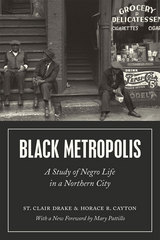 Black Metropolis: A Study of Negro Life in a Northern City
St. Clair Drake and Horace R. Cayton
University of Chicago Press, 2015 A landmark examination of race and urban life that tells the story of Chicago's Black community in its first century
Black Metropolis has been a foundational work for the study of race and urban life since its publication in 1945, and it remains indispensable today. Few studies since have been able to match its scope and magnitude, offering one of the most comprehensive looks at black life in America. Based on research conducted by Works Progress Administration field workers, it is a sweeping historical and sociological account of the people of Chicago's South Side from the 1840s through the 1930s. Its findings offer a comprehensive analysis of black migration, settlement, community structure, and black-white race relations in the first half of the twentieth century. It offers a dizzying and dynamic world filled with captivating people and startling revelations.
A new foreword from sociologist Mary Pattillo places the study in modern context, updating the story with the current state of black communities in Chicago and the larger United States and exploring what this means for the future. As the country continues to struggle with race and our treatment of black lives, Black Metropolis continues to be a powerful contribution to the conversation.
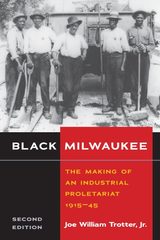 Black Milwaukee: The Making of an Industrial Proletariat, 1915-45
Joe William Trotter, Jr.
University of Illinois Press, 2006 Other historians have tended to treat black urban life mainly in relation to the ghetto experience, but in Black Milwaukee, Joe William Trotter Jr. offers a new perspective that complements yet also goes well beyond that approach. The blacks in Black Milwaukee were not only ghetto dwellers; they were also industrial workers. The process by which they achieved this status is the subject of Trotter’s ground-breaking study. This second edition features a new preface and acknowledgments, an essay on African American urban history since 1985, a prologue on the antebellum and Civil War roots of Milwaukee’s black community, and an epilogue on the post-World War II years and the impact of deindustrialization, all by the author. Brief essays by four of Trotter’s colleagues--William P. Jones, Earl Lewis, Alison Isenberg, and Kimberly L. Phillips--assess the impact of the original Black Milwaukee on the study of African American urban history over the past twenty years.
 The Black Mind: A History of African Literature
O.R. Dathorne
University of Minnesota Press, 1974 The Black Mind was first published in 1974. Minnesota Archive Editions uses digital technology to make long-unavailable books once again accessible, and are published unaltered from the original University of Minnesota Press editions. The comprehensive account of the development of African literature from its beginnings in oral tradition to its contemporary expression in the writings of Africans in various African and European languages provides insight, both broad and deep, into the Black intellect. Professor Dathorne examines the literature of Africans as spoken or written in their local languages and in Latin, French, Portuguese, and English. This extensive survey and interpretation gives the reader a remarkable pathway to an understanding of the Black imagination and its relevance to thought and creativity throughout the world. The author himself lived in Africa for ten years, and his view in not that of an outsider, since it is as a Black man that he speaks about Black people. Throughout the book, a major theme is the demonstration that, despite slavery and colonialism, Africans remained very close to their own cultures. Professor Dathorne shows that African writers may be, like some Afro-American writers, "marginal men," but that they are Black men and it is as Black men that they feel the nostalgia of their past and the corrosive influences of their present. The chapters are divided into sections: Tradition; Heritage; The Presence of Europe; and Crosscurrents. In the final chapters the author extends the thread of continuity to the New World—Africa as present in the work of Black writers in the United States and in the Caribbean.
Black Minded: The Political Philosophy of Malcolm X
Michael E. Sawyer
Pluto Press, 2020 Known as 'the angriest black man in America', Malcolm X was one of the most famous activists to ever live. Going beyond biography, Black Minded examines Malcolm X's philosophical system, restoring his thinking to the pantheon of Black Radical Thought.
Michael Sawyer argues that the foundational concepts of Malcolm X's political philosophy - economic and social justice, strident opposition to white supremacy and Black internationalism - are often obscured by an emphasis on biography. The text demonstrates the way in which Malcolm X's philosophy lies at the intersection of the thought of W.E.B. Du Bois and Frantz Fanon and is an integral part of the revolutionary politics formed to alleviate the plight of people of African descent globally.
Exploring themes of ontology, the body, geographic space and revolution, Black Minded provides a much-needed appraisal of Malcolm X's political philosophy.
 Black Mirror: The Cultural Contradictions of American Racism
Eric Lott
Harvard University Press, 2017 Blackness, as the entertainment and sports industries well know, is a prized commodity in American pop culture. Marketed to white consumers, black culture invites whites to view themselves in a mirror of racial difference, while at the same time offering the illusory reassurance that they remain “wholly” white. Charting a rich landscape that includes classic American literature, Hollywood films, pop music, and investigative journalism, Eric Lott reveals the hidden dynamics of this self-and-other mirroring of racial symbolic capital.
Black Mirror is a timely reflection on the ways provocative representations of racial difference serve to sustain white cultural dominance. As Lott demonstrates, the fraught symbolism of racial difference props up white hegemony, but it also tantalizingly threatens to expose the contradictions and hypocrisies upon which the edifice of white power has been built. Mark Twain’s still-controversial depiction of black characters and dialect, John Howard Griffin’s experimental cross-racial reporting, Joni Mitchell’s perverse penchant for cross-dressing as a black pimp, Bob Dylan’s knowing thefts of black folk music: these instances and more show how racial fantasy, structured through the mirroring of identification and appropriation so visible in blackface performance, still thrives in American culture, despite intervening decades of civil rights activism, multiculturalism, and the alleged post-racialism of the twenty-first century. In Black Mirror, white and black Americans view themselves through a glass darkly, but also face to face.
Black Moods: Collected Poems
Frank Marshall Davis
University of Illinois Press, 2001 Black Moods collects for the first time all of Frank Marshall Davis’s extant published poems as well as his previously unpublished work. From sharp-edged sketches of Southside Chicago’s urban landscape to the prismatic world that lay beneath Hawaii’s placid surface, Davis’s muscular poems blend social, cultural, and political concerns--always shaped by his promise to “try to be as direct as good blues.” John Edgar Tidwell’s introduction examines both Davis’s poetry and his politics, presenting a subtle portrait of a complex writer devoted to exposing discriminatory practices and reaffirming the humanity of the common people.
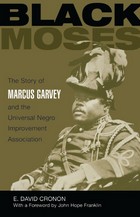 Black Moses: The Story of Marcus Garvey and the Universal Negro Improvement Association
E. David Cronon; Foreward by John Hope Franklin
University of Wisconsin Press, 1960 In the early twentieth century, Marcus Garvey sowed the seeds of a new black pride and determination. Attacked by the black intelligentsia and ridiculed by the white press, this Jamaican immigrant astonished all with his black nationalist rhetoric. In just four years, he built the Universal Negro Improvement Association (UNIA), the largest and most powerful all-black organization the nation had ever seen. With hundreds of branches, throughout the United States, the UNIA represented Garvey’s greatest accomplishment and, ironically, the source of his public disgrace. Black Moses brings this controversial figure to life and recovers the significance of his life and work.
“Those who are interested in the revolutionary aspects of the twentieth century in America should not miss Cronon’s book. It makes exciting reading.”—The Nation
“A very readable, factual, and well-documented biography of Marcus Garvey.”—The Crisis, NAACP
“In a short, swiftly moving, penetrating biography, Mr. Cronon has made the first real attempt to narrate the Garvey story. From the Jamaican's traumatic race experiences on the West Indian island to dizzy success and inglorious failure on the mainland, the major outlines are here etched with sympathy, understanding, and insight.”—Mississippi Valley Historical Review (Now the Journal of American History).
“Good reading for all serious history students.”—Jet
“A vivid, detailed, and sound portrait of a man and his dreams.”—Political Science Quarterly
Black Mountain: An Exploration in Community
Martin Duberman
Northwestern University Press, 2009 With faculty and alumni that included John Cage, Robert Creeley, Merce Cunningham, Buckminster Fuller, Charles Olson, Josef and Anni Albers, Paul Goodman, and Robert Rauschenberg, Black Mountain College ranked among the most important artistic and intellectual communities of the twentieth century. In his groundbreaking history, Martin Duberman uses interviews, anecdotes, and research to depict the relationships that made Black Mountain College what it was. Black Mountain documents the college’s twenty-three-year tenure, from its most brilliant moments of self-reinvention to its lowest moments of petty infighting. It records the financial difficulties that beleaguered the community throughout its existence and the determination it took to keep the college in operation. Duberman creates a nuanced portrait of this community so essential to the development of American arts and counterculture.
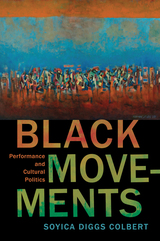 Black Movements: Performance and Cultural Politics
Colbert, Soyica Diggs
Rutgers University Press, 2017 Received the 2018 Honorable Mention for the Joe A. Callaway Prize for the Best Book on Drama or Theatre
Black Movements analyzes how artists and activists of recent decades reference earlier freedom movements in order to imagine and produce a more expansive and inclusive democracy. The post–Jim Crow, post–apartheid, postcolonial era has ushered in a purportedly color blind society and along with it an assault on race-based forms of knowledge production and coalition formation. Soyica Diggs Colbert argues that in the late twentieth century race went “underground,” and by the twenty-first century race no longer functioned as an explicit marker of second-class citizenship.
The subterranean nature of race manifests itself in discussions of the Trayvon Martin shooting that focus on his hoodie, an object of clothing that anyone can choose to wear, rather than focusing on structural racism; in discussions of the epidemic proportions of incarcerated black and brown people that highlight the individual’s poor decision making rather than the criminalization of blackness; in evaluations of black independence struggles in the Caribbean and Africa that allege these movements have accomplished little more than creating a black ruling class that mirrors the politics of its former white counterpart. Black Movements intervenes in these discussions by highlighting the ways in which artists draw from the past to create coherence about blackness in present and future worlds.
Through an exploration of the way that black movements create circuits connecting people across space and time, Black Movements offers important interventions into performance, literary, diaspora, and African American studies.
Black Music in the Harlem Renaissance: A Collection of Essays
Samuel A., Jr. Floyd
University of Tennessee Press, 1993 This work provides an in-depth look at the role of black music within the Harlem Renaissance movement, suggesting its primacy to Renaissance philosophy and practice. Floyd holds that the music of this period was also the source of certain ambivalent attitudes on the part of the black leadership. The book features essays on various subjects including musical theatre, Duke Ellington, black music and musicians in England, concert singers and the interrelationships between black painters and music. It also includes a music bibliography of works composed during the period.
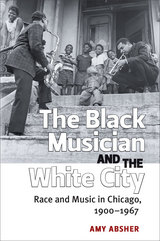 The Black Musician and the White City: Race and Music in Chicago, 1900-1967
Amy Absher
University of Michigan Press, 2014 Amy Absher’s The Black Musician and the White City tells the story of African American musicians in Chicago during the mid-twentieth century. While depicting the segregated city before World War II, Absher traces the migration of black musicians, both men and women and both classical and vernacular performers, from the American South to Chicago during the 1930s to 1950s. Absher’s work diverges from existing studies in three ways: First, she takes the history beyond the study of jazz and blues by examining the significant role that classically trained black musicians played in building the Chicago South Side community. By acknowledging the presence and importance of classical musicians, Absher argues that black migrants in Chicago had diverse education and economic backgrounds but found common cause in the city’s music community. Second, Absher brings numerous maps to the history, illustrating the relationship between Chicago’s physical lines of segregation and the geography of black music in the city over the years. Third, Absher’s use of archival sources is both extensive and original, drawing on manuscript and oral history collections at the Center for Black Music Research in Chicago, Columbia University, Rutgers’s Institute of Jazz Studies, and Tulane’s Hogan Jazz Archive. By approaching the Chicago black musical community from these previously untapped angles, Absher offers a history that goes beyond the retelling of the achievements of the famous musicians by discussing musicians as a group. In The Black Musician and the White City, black musicians are the leading actors, thinkers, organizers, and critics of their own story.
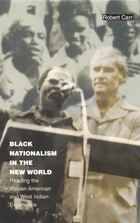 Black Nationalism in the New World: Reading the African-American and West Indian Experience
Robert Carr
Duke University Press, 2002 From nineteenth-century black nationalist writer Martin Delany through the rise of Jim Crow, the 1937 riots in Trinidad, and the achievement of Independence in the West Indies, up to the present era of globalization, Black Nationalism in the New World explores the paths taken by black nationalism in the United States and the Caribbean. Bringing to bear a comparative, diasporic perspective, Robert Carr examines the complex roles race, gender, sexuality, and history have played in the formation of black national identities in the U. S. and Caribbean—particularly in Jamaica, Trinidad, and Guyana—over the past two centuries. He shows how nationalism begins as an impulse emanating "upwards" from the bottom of the social and economic spectrum and discusses the implications of this phenomenon for understanding democracy and nationalism. Black Nationalism in the New World combines geography, political economy, and subaltern studies in readings of noncanonical literary works, which in turn illuminate debates over African-American and West Indian culture, identity, and politics. In addition to Martin Delany’s Blake, or the Huts of America, Carr focuses on Pauline Hopkins’s Contending Forces; Crown Jewel, R. A. C. de Boissière’s novel of the Trinidadian revolt against British rule; Wilson Harris’s Guyana Quartet; the writings of the Oakland Black Panthers—particularly Huey Newton, Bobby Seale, and Eldridge Cleaver; the gay novella Just Being Guys Together; and Lionheart Gal, a collection of patois testimonials assembled by Sistren, a radical Jamaican women’s theater group active in the ‘80s. With its comparative approach, broad historical sweep, and use of texts not well known in the United States, Black Nationalism in the New World extends the work of such theorists as Homi Bhabha, Paul Gilroy, and Nell Irwin Painter. It will be necessary reading for those interested in African American studies, Caribbean studies, cultural studies, women’s studies, and American studies.
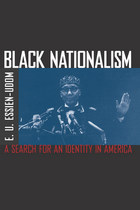 Black Nationalism: The Search for an Identity
E. U. Essien-Udom
University of Chicago Press, 1995 One of the first studies of the organization, life and meaning of the Nation of Islam and, by extension, all Black Nationalist movements, this classic work dispels the still common conception that the movement functioned primarily for political purposes. By observing the daily life of its members, Essien-Udom demonstrates that the Nation of Islam served primarily as a means for poor urban blacks to attain a national identity, a sense of ethnic consciousness, and empowerment in a society that denied them these privileges. Black Nationalism continues to hold profound implications for our understanding of the appeal of Black Nationalism as an ideology and a political force.
"An excellent standard treatment of black nationalist belief and practice in the 50's."—Michael Eric Dyson, New York Times Book Review
"This is an absorbing exercise in first class reporting. . . . In the light of his scrupulous fairness, the book is another illustration of how the press prejudges a story. And most provocatively, Essien-Udom has emphasized that even after the current campaigns for wide-scale integration are won, there will be an even wider chasm between the 'liberated' Negro middle class and the rootless Negro poor."—Nat Hentoff,Commonweal
Black New Jersey: 1664 to the Present Day
Graham Russell Gao Hodges
Rutgers University Press, 2019 Winner of the 2019 Richard P. McCormick Prize from the New Jersey Historical Commission
Black New Jersey tells the rich and complex story of the African American community’s remarkable accomplishments and the colossal obstacles they faced along the way. Drawing from rare archives, historian Graham Russell Gao Hodges brings to life the courageous black men and women who fought for their freedom and eventually built a sturdy and substantial middle class. He explores how the state’s unique mix of religious, artistic, and cultural traditions have helped to produce such world-renowned figures as Paul Robeson, Cory Booker, and Queen Latifah, as well as a host of lesser-known but equally influential New Jersey natives.
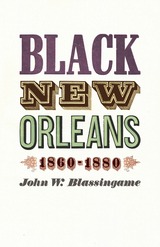 Black New Orleans, 1860-1880
John W. Blassingame
University of Chicago Press, 1976 Reissued for the first time in over thirty years, Black New Orleans explores the twenty-year period in which the city’s black population more than doubled. Meticulously researched and replete with archival illustrations from newspapers and rare periodicals, John W. Blassingame’s groundbreaking history offers a unique look at the economic and social life of black people in New Orleans during Reconstruction. Not a conventional political treatment, Blassingame’s history instead emphasizes the educational, religious, cultural, and economic activities of African Americans during the late nineteenth century.
“Blending historical and sociological perspectives, and drawing with skill and imagination upon a variety of sources, [Blassingame] offers fresh insights into an oft-studied period of Southern history. . . . In both time and place the author has chosen an extraordinarily revealing vantage point from which to view his subject. ”—Neil R. McMillen, American Historical Review
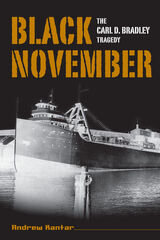 Black November: The Carl D. Bradley Tragedy
Andrew Kantar
Michigan State University Press, 2006 Michigan’s "storms of November" are famous in song, lore, and legend and have taken a tragic toll, breaking the hulls of many ships and sending them to cold, dark, and silent graves on the bottoms of the Great Lakes. On November 18, 1958, when the limestone carrier Carl D. Bradley broke up during a raging storm on Lake Michigan, it became the largest ship in Great Lakes' history to vanish beneath storm-tossed waves. Along with the Bradley, thirty-three crew members perished. Most of the casualties hailed from the little harbor town of Rogers City, Michigan, a community that was stung with grief when, in an instant, twenty-three women became widows and fifty- three children were left fatherless. Nevertheless, this is also a story of survival, as it recounts the tale of two of the ship’s crew, whose fifteen-hour ordeal on a life raft, in gale-force winds and 25 foot waves, is a remarkable story of endurance and tenacity.
Written in a style that is equally appealing to young adults and adult readers, Black November is a tale of adventure, courage, heroism, and tragedy. Kantar, the author of 29 Missing, a book about the loss of the great lakes freighter the Edmund Fitzgerald, has once again crafted a dramatic narrative that is both informative and compelling. Although the Carl D. Bradley has been called "the ship that time forgot," Black November recalls that tragic day nearly fifty years ago and is a moving tribute to the ship and its crew.
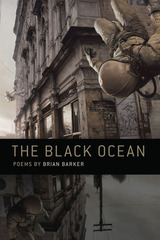 The Black Ocean
Brian Barker
Southern Illinois University Press, 2011 In The Black Ocean, poet Brian Barker attempts to make sense of some of the darkest chapters in history while peering forward to what lies ahead as the world totters in the wake of human complacence. Unveiled here are ruminations on human torture, the Chernobyl disaster, the aftermath of Hurricane Katrina, and genocide against Native Americans. The ghosts of Lincoln, Poe, and Billie Holiday manifest from pages laden with grim prophecies and catastrophes both real and imagined. These hauntingly intense documentary poems reflect on the past in an attempt to approach it with more clarity and understanding, while offering blistering insight into the state of the world today. Barker touches upon the power of manipulation and class oppression; the depths of fear and the struggle for social justice; and reveals how failure to act—on the parts of both politicians and everyday citizens—can have the most devastating effects of all. Throughout the volume looms the specter of the black ocean itself, a powerful metaphor for all our collective longings and despair, as we turn to face a menacing and uncertain future. Lullaby for the Last Night on Earth When at last we whisper, so long, so lonesome, and watch our house on the horizon go down like a gasping zeppelin of bricks, we’ll turn, holding hands, and walk the train tracks to the sea . . . So sing me that song where a mountain falls in love with an octopus, and one thousand fireflies ricochet around their heads, and I’ll dream we’re dancing in the kitchen one last time, swaying, the window a waystation of flaming leaves, the dogs shimmying about our legs, dragging their golden capes of rain . . . O my critter, my thistle, gal-o-my-dreams, lift your voice like an oar into the darkness, for all the sad birds are falling down— Nothing in this night is ours.
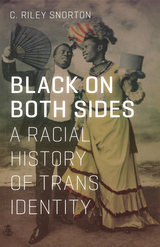 Black on Both Sides: A Racial History of Trans Identity
C. Riley Snorton
University of Minnesota Press, 2017 Winner of the John Boswell Prize from the American Historical Association 2018
Winner of the William Sanders Scarborough Prize from the Modern Language Association 2018
Winner of an American Library Association Stonewall Honor 2018
Winner of Lambda Literary Award for Transgender Nonfiction 2018
Winner of the Sylvia Rivera Award in Transgender Studies from the Center for Lesbian and Gay Studies
The story of Christine Jorgensen, America’s first prominent transsexual, famously narrated trans embodiment in the postwar era. Her celebrity, however, has obscured other mid-century trans narratives—ones lived by African Americans such as Lucy Hicks Anderson and James McHarris. Their erasure from trans history masks the profound ways race has figured prominently in the construction and representation of transgender subjects. In Black on Both Sides, C. Riley Snorton identifies multiple intersections between blackness and transness from the mid-nineteenth century to present-day anti-black and anti-trans legislation and violence. Drawing on a deep and varied archive of materials—early sexological texts, fugitive slave narratives, Afro-modernist literature, sensationalist journalism, Hollywood films—Snorton attends to how slavery and the production of racialized gender provided the foundations for an understanding of gender as mutable. In tracing the twinned genealogies of blackness and transness, Snorton follows multiple trajectories, from the medical experiments conducted on enslaved black women by J. Marion Sims, the “father of American gynecology,” to the negation of blackness that makes transnormativity possible. Revealing instances of personal sovereignty among blacks living in the antebellum North that were mapped in terms of “cross dressing” and canonical black literary works that express black men’s access to the “female within,” Black on Both Sides concludes with a reading of the fate of Phillip DeVine, who was murdered alongside Brandon Teena in 1993, a fact omitted from the film Boys Don’t Cry out of narrative convenience. Reconstructing these theoretical and historical trajectories furthers our imaginative capacities to conceive more livable black and trans worlds.
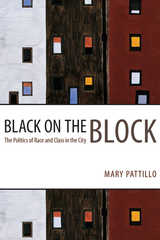 Black on the Block: The Politics of Race and Class in the City
Mary Pattillo
University of Chicago Press, 2007 In Black on the Block, Mary Pattillo—a Newsweek Woman of the 21st Century—uses the historic rise, alarming fall, and equally dramatic renewal of Chicago’s North Kenwood–Oakland neighborhood to explore the politics of race and class in contemporary urban America.
There was a time when North Kenwood–Oakland was plagued by gangs, drugs, violence, and the font of poverty from which they sprang. But in the late 1980s, activists rose up to tackle the social problems that had plagued the area for decades. Black on the Block tells the remarkable story of how these residents laid the groundwork for a revitalized and self-consciously black neighborhood that continues to flourish today. But theirs is not a tale of easy consensus and political unity, and here Pattillo teases out the divergent class interests that have come to define black communities like North Kenwood–Oakland. She explores the often heated battles between haves and have-nots, home owners and apartment dwellers, and newcomers and old-timers as they clash over the social implications of gentrification. Along the way, Pattillo highlights the conflicted but crucial role that middle-class blacks play in transforming such districts as they negotiate between established centers of white economic and political power and the needs of their less fortunate black neighbors. “A century from now, when today's sociologists and journalists are dust and their books are too, those who want to understand what the hell happened to Chicago will be finding the answer in this one.”—Chicago Reader
“To see how diversity creates strange and sometimes awkward bedfellows . . . turn to Mary Pattillo's Black on the Block.”—Boston Globe
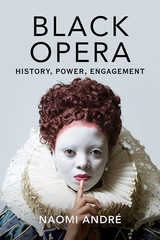 Black Opera: History, Power, Engagement
Naomi Andre
University of Illinois Press, 2018 From classic films like Carmen Jones to contemporary works like The Diary of Sally Hemings and U-Carmen eKhayelitsa, American and South African artists and composers have used opera to reclaim black people's place in history. Naomi André draws on the experiences of performers and audiences to explore this music's resonance with today's listeners. Interacting with creators and performers, as well as with the works themselves, André reveals how black opera unearths suppressed truths. These truths provoke complex, if uncomfortable, reconsideration of racial, gender, sexual, and other oppressive ideologies. Opera, in turn, operates as a cultural and political force that employs an immense, transformative power to represent or even liberate. Viewing opera as a fertile site for critical inquiry, political activism, and social change, Black Opera lays the foundation for innovative new approaches to applied scholarship.
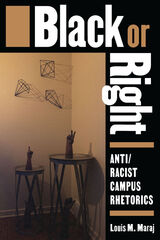 Black or Right: Anti/Racist Campus Rhetorics
Louis M. Maraj
Utah State University Press, 2020 Black or Right: Anti/Racist Campus Rhetorics explores notions of Blackness in white institutional—particularly educational—spaces. In it, Louis M. Maraj theorizes how Black identity operates with/against ideas of difference in the age of #BlackLivesMatter. Centering Blackness in frameworks for antiracist agency through interdisciplinary Black feminist lenses, Black or Right asks how those racially signifying “diversity” in US higher education (and beyond) make meaning in the everyday.
Offering four Black rhetorics as antiracist means for rhetorical reclamation—autoethnography, hashtagging, inter(con)textual reading, and reconceptualized disruption—the book uses Black feminist relationality via an African indigenous approach. Maraj examines fluid, quotidian ways Black folk engage anti/racism at historically white institutions in the United States in response to violent campus spaces, educational structures, protest movements, and policy practice. Black or Right’s experimental, creative style strives to undiscipline knowledge from academic confinement. Exercising different vantage points in each chapter—autoethnographer, digital media scholar/pedagogue, cultural rhetorician, and critical discourse analyst—Maraj challenges readers to ecologically understand shifting, multiple meanings of Blackness in knowledge-making. Black or Right’s expressive form, organization, narratives, and poetics intimately interweave with its argument that Black folk must continuously invent “otherwise” in reiterative escape from oppressive white spaces.
In centering Black experiences, Black theory, and diasporic Blackness, Black or Right mobilizes generative approaches to destabilizing institutional whiteness, as opposed to reparative attempts to “fix racism,” which often paradoxically center whiteness. It will be of interest to both academic and general readers and significant for specialists in cultural rhetorics, Black studies, and critical theory.
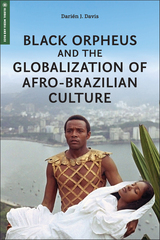 Black Orpheus and the Globalization of Afro-Brazilian Culture
Darién J. Davis
Rutgers University Press, 2026 “Black Orpheus” and the Globalization of Afro-Brazilian Culture is the first historical study in English to examine the development, production, and reception of the 1958 film Black Orpheus and its legacy in the 1960s and 1970s. It focuses on the making of the film and the trajectories of the major actors and musicians who helped construct an image of Black Brazil and provides an analysis of the globalization of Afro-Brazilian images and music in France and the United States in the wake of the movie’s success. Using archival sources, interviews, and the secondary literature from France, Brazil, and the United States, this book reveals information about the cultural histories of all three countries and gives readers new insight into the trajectories of diverse actors such as Breno Mello, Marpessa Dawn, and Léa Garcia and performers such as Agostinho dos Santos, Baden Powell, and Maria D’Apparecida.
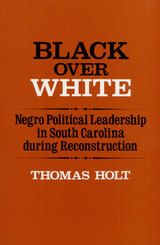 Black Over White: Negro Political Leadership in South Carolina during Reconstruction
Thomas Holt
University of Illinois Press, 1979 In this prize-winning book Thomas Holt is concerned not only with the identities of the black politicians who gained power in South Carolina during Reconstruction, but also with the question of how they functioned within the political system. Thus, as one reviewer has commented, "he penetrates the superficial preoccupations over whether black politicians were venal or gullible to see whether they wielded power and influence and, if they did, how and to what ends and against what obstacles."
"Well crafted and well written, it not only broadens our knowledge of the period, but also deepens it, something that recent books on Reconstruction have too often failed to do." -- Michael Perman, American Historical Review.
" . . . a valuable study of post-Civil War black leaders in a state where Negro control came closest to realization during Reconstruction. . . . Effectively merging the techniques of quantitative analysis with those of narrative history, Holt shatters a number of myths and misconceptions. . . . It should be on the reading list of all students of Reconstruction and nineteenth-century black history." -- William C. Harris, Journal of Southern History
"Holt presents his work modestly as a state study of reconstruction politics. But this should not obscure a significant intellectual achievement and a contribution of fundamental importance, demonstrating the value of social-class analysis in understanding the politics of the black community." -- Jonathan M. Wiener, Journal of American History.
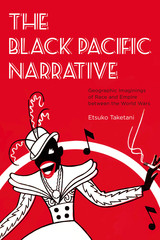 The Black Pacific Narrative: Geographic Imaginings of Race and Empire between the World Wars
Etsuko Taketani
Dartmouth College Press, 2014 The Black Pacific Narrative: Geographic Imaginings of Race and Empire between the World Wars chronicles the profound shift in geographic imaginings that occurred in African American culture as the United States evolved into a bioceanic global power. The author examines the narrative of the “black Pacific”?the literary and cultural production of African American narratives in the face of America’s efforts to internationalize the Pacific and to institute a “Pacific Community,” reflecting a vision of a hemispheric regional order initiated and led by the United States. The black Pacific was imagined in counterpoint to this regional order in the making, which would ultimately be challenged by the Pacific War. The principal subjects of study include such literary and cultural figures as James Weldon Johnson, George S. Schuyler, artists of the black Federal Theatre Project, Langston Hughes, W. E. B. Du Bois, and Walter White, all of whom afford significant points of entry to a critical understanding of the stakes of the black Pacific narrative. Adopting an approach that mixes the archival and the interpretive, the author seeks to recover the black Pacific produced by African American narratives, narratives that were significant enough in their time to warrant surveillance and suspicion, and hence are significant enough in our time to warrant scholarly attention and reappraisal. A compelling study that will appeal to a broad, international audience of students and scholars of American studies, African American studies, American literature, and imperialism and colonialism.
 The Black Pack: Comedy, Race, and Resistance
Artel Great
Rutgers University Press, 2025 The Black Pack: Comedy, Race & Resistance is the first book to chronicle the untold history behind the iconic collaborations between a legendary group of comedians—Eddie Murphy, Paul Mooney, Keenen Ivory Wayans, Robert Townsend, and Arsenio Hall—who joined forces as the “Black Pack” in the late 1980s to create a series of socially-charged comedies that revolutionized popular culture and transformed American comedy.
Working together as writers, directors, producers, actors, and consultants, the Black Pack created some of the most provocative and enduring Black films and television shows of the twentieth century, including classic productions like In Living Color, Coming to America, Hollywood Shuffle, and The Arsenio Hall Show. The Black Pack collective was armed with a signature comedic style which combined politically-Black satire with edgy social humor that entertained millions, shattered box-office records, and slyly critiqued America’s racial condition. Amid escalating social tensions in the 1980s, the Black Pack’s comedic output transformed anger into art, wielding the cloak of humor as a rebellious tool to confront unjust business practices in Hollywood and challenge racial narratives embedded in American culture. Their work empowered unapologetically Black voices and expanded creative possibilities for Black artists in the entertainment industry.
In The Black Pack, Artel Great delivers the most comprehensive analysis of this groundbreaking comedy collective, uncovering how the group’s socially and politically-charged humor defied systemic barriers to achieve unprecedented commercial success and establish a cultural legacy that continues to inspire media creators today and across new generations.
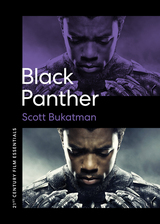 Black Panther
Scott Bukatman
University of Texas Press, 2022 Black Panther was the first Black superhero in mainstream American comics. Black Panther was a cultural phenomenon that broke box office records. Yet it wasn’t just a movie led by and starring Black artists. It grappled with ideas and conflicts central to Black life in America and helped redress the racial dynamics of the Hollywood blockbuster. Scott Bukatman, one of the foremost scholars of superheroes and cinematic spectacle, brings his impeccable pedigree to this lively and accessible study, finding in the utopianism of Black Panther a way of re-envisioning what a superhero movie can and should be while centering the Black creators, performers, and issues behind it. He considers the superheroic Black body; the Pan-African fantasy, feminism, and Afrofuturism of Wakanda; the African American relationship to Africa; the political influence of director Ryan Coogler’s earlier movies; and the entwined performances of Chadwick Boseman’s T’Challa and Michael B. Jordan’s Killmonger. Bukatman argues that Black Panther is escapism of the best kind, offering a fantasy of liberation and social justice while demonstrating the power of popular culture to articulate ideals and raise vital questions.
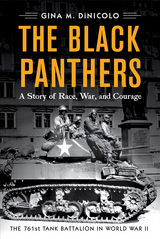 The Black Panthers: A Story of Race, War, and Courage—the 761st Tank Battalion in World War II
Gina M. DiNicolo
Westholme Publishing, 2014 In a Segregated Military, the African American Armored Unit That Helped Patton Check the German Advance, Close the Rhine Ring, and Spearhead a New Postwar Army
Known primarily for being the first African American armored unit to see combat in World War II and as future baseball star Jackie Robinson’s onetime outfit, the 761st Tank Battalion was forged in a devil’s cauldron of heat and prejudice at Camp Claiborne, Louisiana. Here, most viewed the tankers as tokens in a racial experiment, rather than as fellow American soldiers who would actually be deployed to fight a common enemy. Led by a small cadre of white and black officers, the 761st trained to the pinnacle of its craft. The Black Panthers, as they soon were called, proved their battle prowess against other units bound for combat on the parched Texas training fields. For this, they earned a coveted assignment to fight under General George S. Patton and go head-to-head with the best of Hitler’s arsenal. Moving to the front in November 1944, trial by fire soon shook the unit to its core. Ambushed by a veteran German force, the 761st suffered heavy casualties in the confusion as they cut their way out of the trap. But the men rallied to overcome self-doubt and vindicate their losses. Quickly battle hardened, the tankers saw intense combat through November and when Germany launched its last-ditch offensive through the Ardennes in December, the 761st fought side-by-side with Patton’s Third Army. Moving swiftly, the unit helped check the German advance, cut resupply routes to the forces surrounding beleaguered Bastogne, and drove the enemy back, recapturing towns crucial to the final defeat of Germany.
In The Black Panthers: A Story of Race, War, and Courage—the 761st Tank Battalion in World War II, historian Gina M. DiNicolo tells the full and unvarnished history of this important American fighting force. Relying on extensive archival research, including documents that had not been consulted in previous accounts, and interviews with surviving soldiers and family members, the author describes the unit’s training, deployment, combat, and individuals, such as Sgt. Ruben Rivers, one of only seven African American men awarded the Medal of Honor for World War II heroism. The professionalism, dedication, and courage of the 761st and other non-white units made clear that the strength of the American army in the future lay with integration—one of the enduring accomplishments of these servicemen.
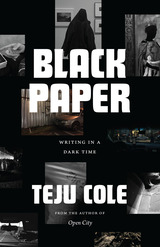 Black Paper: Writing in a Dark Time
Teju Cole
University of Chicago Press, 2021 A profound book of essays from a celebrated master of the form.
“Darkness is not empty,” writes Teju Cole in Black Paper, a book that meditates on what it means to sustain our humanity—and witness the humanity of others—in a time of darkness. One of the most celebrated essayists of his generation, Cole here plays variations on the essay form, modeling ways to attend to experience—not just to take in but to think critically about what we sense and what we don’t.
Wide-ranging but thematically unified, the essays address ethical questions about what it means to be human and what it means to bear witness, recognizing how our individual present is informed by a collective past. Cole’s writings in Black Paper approach the fractured moment of our history through a constellation of interrelated concerns: confrontation with unsettling art, elegies both public and private, the defense of writing in a time of political upheaval, the role of the color black in the visual arts, the use of shadow in photography, and the links between literature and activism. Throughout, Cole gives us intriguing new ways of thinking about blackness and its numerous connotations. As he describes the carbon-copy process in his epilogue: “Writing on the top white sheet would transfer the carbon from the black paper onto the bottom white sheet. Black transported the meaning.”
Black Paris: THE AFRICAN WRITERS' LANDSCAPE
Bennetta Jules-Rosette
University of Illinois Press, 1998 Black Paris documents the struggles and successes of three generations of African writers as they strive to establish their artistic, literary, and cultural identities in France. Based on long-term ethnographic, archival, and historical research, the work is enriched by interviews with many writers of the new generation.
Bennetta Jules-Rosette explores African writing and identity in France from the early négritude movement and the founding of the Présence Africaine publishing house in 1947 to the mid-1990s. Examining the relationship between African writing and French anthropology as well as the emergence of new styles and discourses, Jules-Rosette covers French Pan-Africanism and the revolutionary writing of the 1960s and 1970s. She also discusses the new generation of African writers who appeared in Paris during the 1980s and 1990s.
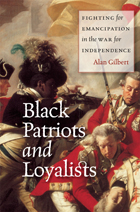 Black Patriots and Loyalists: Fighting for Emancipation in the War for Independence
Alan Gilbert
University of Chicago Press, 2012 We commonly think of the American Revolution as simply the war for independence from British colonial rule. But, of course, that independence actually applied to only a portion of the American population—African Americans would still be bound in slavery for nearly another century. Alan Gilbert asks us to rethink what we know about the Revolutionary War, to realize that while white Americans were fighting for their freedom, many black Americans were joining the British imperial forces to gain theirs. Further, a movement led by sailors—both black and white—pushed strongly for emancipation on the American side. There were actually two wars being waged at once: a political revolution for independence from Britain and a social revolution for emancipation and equality.
Gilbert presents persuasive evidence that slavery could have been abolished during the Revolution itself if either side had fully pursued the military advantage of freeing slaves and pressing them into combat, and his extensive research also reveals that free blacks on both sides played a crucial and underappreciated role in the actual fighting. Black Patriots and Loyalists contends that the struggle for emancipation was not only basic to the Revolution itself, but was a rousing force that would inspire freedom movements like the abolition societies of the North and the black loyalist pilgrimages for freedom in Nova Scotia and Sierra Leone.
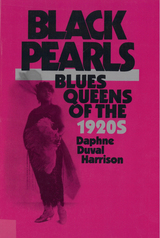 Black Pearls: Blues Queens of the 1920s
Daphne Duval Harrison
Rutgers University Press, 1990 Throughout the 1920s, in tents, theaters, dance halls and cabarets, and on "race" records, black American women captivated large audiences with their singing of the blues. University of Maryland professor Harrison examines the subjects and texts of their songs, the toll these performers paid for their right to be heard, and what they did to transform a folk tradition into a popular art. She describes the singing and lifestyles of Sippie Wallace, Victoria Spivey, Edith Wilson and Alberta Hunter to illustrate how they introduced a new model of the black woman: assertive and sexy, gutsy yet tender, bereft but not downtrodden, exploited but not resentful, independent yet vulnerable. The author shows that their choice of performing style, inflection, emphasis and improvisation provided a perspective and expressiveness that profoundly affected later American popular music. -- Publishers Weekly
Blues music spawned legendary performers whose influence has been felt in many musical forms here and around the world. Until now the important role of the great women blues singers has largely gone unexplored. This book tells of the cultural and social impact of the blues during the 1920s when the genre was dominated by women, both on stage and on record. Harrison (Afro-American Studies Department, University of Maryland) writes with authority, focusing particularly on Sippie Wallace, Edith Wilson, Victoria Spivey, and Alberta Hunter as she analyzes the music and the collective black experience out of which it grew. A significant book, particularly for collections of music history, black studies, and women's studies. -- Library Journal
 The Black Penguin
Andrew Evans
University of Wisconsin Press, 2018 A devout young boy in rural Ohio, Andrew Evans had his life mapped for him: baptism, mission, Brigham Young University, temple marriage, and children of his own. But as an awkward gay kid, bullied and bored, he escaped into the glossy pages of National Geographic and the wide promise of the world atlas. The Black Penguin is Evans's memoir, travel tale, and love story of his eventual journey to the farthest reaches of the map, a wild yet touching adventure across some of the most astonishing landscapes on Earth.
Ejected from church and shunned by his family as a young man, Evans embarks on an ambitious overland journey halfway across the world. Riding public transportation, he crosses swamps, deserts, mountains, and jungles, slowly approaching his lifelong dream and ultimate goal: Antarctica. With each new mile comes laughter, pain, unexpected friendship, true weirdness, unsettling realities, and some hair-raising moments that eventually lead to a singular discovery on a remote beach at the bottom of the world.
Evans's 12,000-mile voyage becomes a soulful quest to balance faith, family, and self, reminding us that, in the end, our lives are defined by the roads we take, the places we touch, and those we hold nearest.
Black People in the British Empire
Peter Fryer
Pluto Press, 2021 'Fantastic … the most important book on Black British history’ - Akala
Black People in the British Empire is a challenge to the official version of British history. It tells the story of Britain's exploitation and oppression of its subject peoples in its colonies, and in particular the people of Africa, Asia and Australasia
Peter Fryer reveals how the ideology of racism was used as justification for acquiring and expanding the Empire; how the British Industrial Revolution developed out of profits from the slave trade; and how the colonies were deliberately de-industrialised to create a market for British manufacturers.
In describing the frequency and the scale of revolts by subject peoples against slavery and foreign domination - and the brutality used in crushing them - Peter Fryer exposes the true history of colonialism, and restores to Black people their central role in Britain's past.
Black People in the British Empire
Peter Fryer
Pluto Press, 2021 'Fantastic … the most important book on Black British history’ - Akala Black People in the British Empire is a challenge to the official version of British history. It tells the story of Britain's exploitation and oppression of its subject peoples in its colonies, and in particular the people of Africa, Asia and Australasia Peter Fryer reveals how the ideology of racism was used as justification for acquiring and expanding the Empire; how the British Industrial Revolution developed out of profits from the slave trade; and how the colonies were deliberately de-industrialised to create a market for British manufacturers. In describing the frequency and the scale of revolts by subject peoples against slavery and foreign domination - and the brutality used in crushing them - Peter Fryer exposes the true history of colonialism, and restores to Black people their central role in Britain's past.
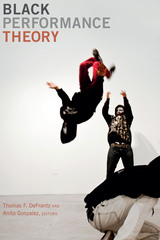 Black Performance Theory
Thomas F. DeFrantz and Anita Gonzalez, eds.
Duke University Press, 2014 Black performance theory is a rich interdisciplinary area of study and critical method. This collection of new essays by some of its pioneering thinkers—many of whom are performers—demonstrates the breadth, depth, innovation, and critical value of black performance theory. Considering how blackness is imagined in and through performance, the contributors address topics including flight as a persistent theme in African American aesthetics, the circulation of minstrel tropes in Liverpool and in Afro-Mexican settlements in Oaxaca, and the reach of hip-hop politics as people around the world embrace the music and dance. They examine the work of contemporary choreographers Ronald K. Brown and Reggie Wilson, the ways that African American playwrights translated the theatricality of lynching to the stage, the ecstatic music of Little Richard, and Michael Jackson's performance in the documentary This Is It. The collection includes several essays that exemplify the performative capacity of writing, as well as discussion of a project that re-creates seminal hip-hop album covers through tableaux vivants. Whether deliberating on the tragic mulatta, the trickster figure Anansi, or the sonic futurism of Nina Simone and Adrienne Kennedy, the essays in this collection signal the vast untapped critical and creative resources of black performance theory.
Contributors. Melissa Blanco Borelli, Daphne A. Brooks, Soyica Diggs Colbert, Thomas F. DeFrantz, Nadine George-Graves, Anita Gonzalez, Rickerby Hinds, Jason King, D. Soyini Madison, Koritha Mitchell, Tavia Nyong'o, Carl Paris, Anna B. Scott, Wendy S. Walters, Hershini Bhana Young
Black Physicians in the Jim Crow South
Thomas J. Ward
University of Arkansas Press, 2016 Drawing on a variety of sources from oral histories to the records of professional organizations, Thomas J. Ward, Jr. examines the development of the African American medical profession in the South. Illuminating the contradictions of race and class, this research provides valuable new insight into class divisions within African American communities in the era of segregation.
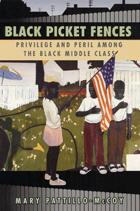 Black Picket Fences: Privilege and Peril among the Black Middle Class
Mary Pattillo-McCoy
University of Chicago Press, 1999 Black Picket Fences is a stark, moving, and candid look at a section of America that is too often ignored by both scholars and the media: the black middle class. The result of living for three years in "Groveland," a black middle-class neighborhood on Chicago's South Side, sociologist Mary Pattillo-McCoy has written a book that explores both the advantages and the boundaries that exist for members of the black middle class. Despite arguments that race no longer matters, Pattillo-McCoy shows a different reality, one where black and white middle classes remain separate and unequal.
"An insightful look at the socio-economic experiences of the black middle class. . . . Through the prism of a South Side Chicago neighborhood, the author shows the distinctly different reality middle-class blacks face as opposed to middle-class whites." —Ebony
"A detailed and well-written account of one neighborhood's struggle to remain a haven of stability and prosperity in the midst of the cyclone that is the American economy." —Emerge
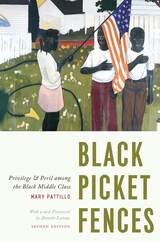 Black Picket Fences, Second Edition: Privilege and Peril among the Black Middle Class
Mary Pattillo
University of Chicago Press, 2013 First published in 1999, Mary Pattillo’s Black Picket Fences explores an American demographic group too often ignored by both scholars and the media: the black middle class. Nearly fifteen years later, this book remains a groundbreaking study of a group still underrepresented in the academic and public spheres. The result of living for three years in “Groveland,” a black middle-class neighborhood on Chicago’s South Side, Black Picket Fences explored both the advantages the black middle class has and the boundaries they still face. Despite arguments that race no longer matters, Pattillo showed a different reality, one where black and white middle classes remain separate and unequal.
Stark, moving, and still timely, the book is updated for this edition with a new epilogue by the author that details how the neighborhood and its residents fared in the recession of 2008, as well as new interviews with many of the same neighborhood residents featured in the original. Also included is a new foreword by acclaimed University of Pennsylvania sociologist Annette Lareau.
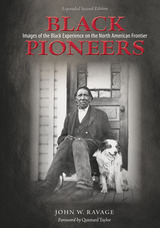 Black Pioneers: Images of the Black Experience on the North American Frontier
John Ravage
University of Utah Press, 1997 It is difficult to piece together existing records that describe the migrations of African Americans in the nineteenth-century American West. Efforts to assemble collections of oral histories, images, diaries, and other written documents on the black experience in the Western United States and Canada have proven surprisingly fruitful, however, and the rewarding culmination of such research flourished in the archival images found in this second edition of John Ravage’s Black Pioneers.
Using public and private collections in every western state and in Canada, Ravage has gathered more than three hundred photographs, line drawings, lithographs, stereoviews, and other images. This new edition also adds sections on black entertainers and ranchers, a chapter on the dating of historic photographs and their genealogical significance, as well as an expanded bibliography. All aid understanding of the black frontier experience.
Ravage goes beyond the stereotypical photography of the era, which often reflected white fears and prejudices, to present the works of frontier photographers. Galveston’s Lucius Harper, Denver’s John Green, and the Northwest’s nomadic James Presley Ball all bring life to their subjects and meaning to their presence in the American West. Black Pioneers is a vibrant visual document of the profound influence blacks had on communal and frontier history.
Black Poachers, White Hunters: A Social History of Hunting in Colonial Kenya
Edward I. Steinhart
Ohio University Press, 2006 For centuries, Kenya’s game-laden plains and forests were the rewarding hunting grounds of her native African population. Black Poachers, White Hunters traces the history of hunting there in the colonial era, describing the British attempt to impose the practices and values of nineteenth-century European aristocratic hunts. This both created and enforced an image of African inferiority and subordination. Ultimately conservationists came to claim sovereignty over African wildlife, completing the transformation of indigenous hunters into criminal poachers and seeking to eliminate them altogether from the “sportsman’s paradise” of Kenya.ABOUT THE AUTHOR---Edward I. Steinhart is an associate professor of history at Texas Tech University, Lubbock.
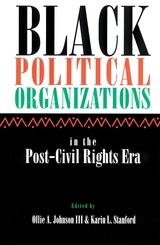 Black Political Organizations in the Post-Civil Rights Era
Edited by Ollie A. Johnson III, Karin L. Stanford
Rutgers University Press, 2002 We know a great deal about civil rights organizations during the 1960s, but relatively little about black political organizations since that decade. Questions of focus, accountability, structure, and relevance have surrounded these groups since the modern Civil Rights Movement ended in 1968. Political scientists Ollie A. Johnson III and Karin L. Stanford have assembled a group of scholars who examine the leadership, membership, structure, goals, ideology, activities, accountability, and impact of contemporary black political organizations and their leaders. Questions considered are: How have these organizations adapted to the changing sociopolitical and economic environment? What ideological shifts, if any, have occurred within each one? What issues are considered important to black political groups and what strategies are used to implement their agendas? The contributors also investigate how these organizations have adapted to changes within the black community and American society as a whole.
Organizations covered include well-known ones such as the NAACP, Rainbow/PUSH Coalition, the Southern Christian Leadership Conference, the Urban League, and the Congress of Racial Equality, as well as organizations such as the National Association of Colored Women’s Clubs. Religious groups, including black churches and the Nation of Islam, are also considered.
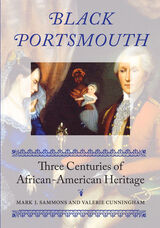 Black Portsmouth: Three Centuries of African-American Heritage
Mark J. Sammons
University of New Hampshire Press, 2004 Few people think of a rich Black heritage when they think of New England. In the pioneering book Black Portsmouth, Mark J. Sammons and Valerie Cunningham celebrate it, guiding the reader through more than three centuries of New England and Portsmouth social, political, economic, and cultural history as well as scores of personal and site-specific stories. Here, we meet such Africans as the likely negro boys and girls from Gambia, who debarked at Portsmouth from a slave ship in 1758, and Prince Whipple, who fought in the American Revolution. We learn about their descendants, including the performer Richard Potter and John Tate of the People's Baptist Church, who overcame the tragedies and challenges of their ancestors' enslavement and subsequent marginalization to build communities and families, found institutions, and contribute to their city, region, state, and nation in many capacities. Individual entries speak to broader issues—the anti-slavery movement, American religion, and foodways, for example. We also learn about the extant historical sites important to Black Portsmouth—including the surprise revelation of an African burial ground in October 2003—as well as the extraordinary efforts being made to preserve remnants of the city's early Black heritage.
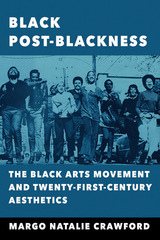 Black Post-Blackness: The Black Arts Movement and Twenty-First-Century Aesthetics
Margo Natalie Crawford
University of Illinois Press, 2017 A 2008 cover of The New Yorker featured a much-discussed Black Power parody of Michelle and Barack Obama. The image put a spotlight on how easy it is to flatten the Black Power movement as we imagine new types of blackness. Margo Natalie Crawford argues that we have misread the Black Arts Movement's call for blackness. We have failed to see the movement's anticipation of the "new black" and "post-black." Black Post-Blackness compares the black avant-garde of the 1960s and 1970s Black Arts Movement with the most innovative spins of twenty-first century black aesthetics. Crawford zooms in on the 1970s second wave of the Black Arts Movement and shows the connections between this final wave of the Black Arts movement and the early years of twenty-first century black aesthetics. She uncovers the circle of black post-blackness that pivots on the power of anticipation, abstraction, mixed media, the global South, satire, public interiority, and the fantastic.
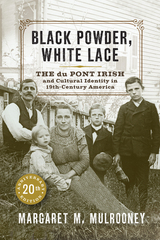 Black Powder, White Lace: The du Pont Irish and Cultural Identity in Nineteenth-Century America
Margaret M. Mulrooney
University of Delaware Press, 2023 Twenty years ago, Margaret Mulrooney's history of the community of Irish immigrant workers at the du Pont powder yards, Black Powder, White Lace, was published to wide acclaim. Now, as much of the materials Mulrooney used in her research are now electronically available to the public, and as debates about immigration continue to rage, a new edition of the book is being published to remind readers of the rich materials available on the du Pont workers, and of Mulrooney's powerful conclusions about immigrant communities in America. Explosives work was dangerous, but the du Ponts provided a host of benefits to their workers. As a result, the Irish remained loyal to their employers, convinced by their everyday experiences that their interests and the du Ponts' were one and the same. Employing a wide array of sources, Mulrooney turns away from the worksite and toward the domestic sphere, revealing that powder mill families asserted their distinctive ethno-religious heritage at the same time as they embraced what U.S. capitalism had to offer.
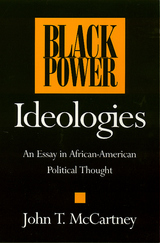 Black Power Ideologies: An Essay in African American Political Thought
John T. McCartney
Temple University Press, 1993 In a systematic survey of the manifestations and meaning of Black Power in America, John McCartney analyzes the ideology of the Black Power Movement in the 1960s and places it in the context of both African-American and Western political thought. He demonstrates, though an exploration of historic antecedents, how the Black Power versus black mainstream competition of the sixties was not unique in American history. Tracing the evolution of black social and political movements from the 18th century to the present, the author focuses on the ideas and actions of the leaders of each major approach. Starting with the colonization efforts of the Pan-Negro Nationalist movement in the 18th century, McCartney contrasts the work of Bishop Turner with the opposing integrationist views of Frederick Douglass and his followers. McCartney examines the politics of accommodation espoused by Booker T. Washington; W.E.B. Du Bois's opposition to this apolitical stance; the formation of the NAACP, the Urban League, and other integrationist organizations; and Marcus Garvey's reawakening of the separatist ideal in the early 20th century. Focusing on the intense legal activity of the NAACP from the 1930s to the 1960s, McCartney gives extensive treatment to the moral and political leadership of Martin Luther King, Jr., and his challenge from the Black Power Movement in 1966.
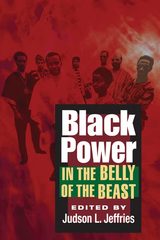 Black Power in the Belly of the Beast
Edited by Judson L. Jeffries
University of Illinois Press, 2006 Despite the growing scholarly interest in the Civil Rights movement, to date there has been no comprehensive examination of the Black Power movement. Black Power in the Belly of the Beast fills this gap by providing the first in-depth look at the Black Power movement from the 1963 founding of the Revolutionary Action Movement (RAM) to the Black Power Movement's demise in the mid 1970s. The volume’s twelve contributors include well-known scholars such as James A. Geschwender and Douglas Glasgow as well as prominent community activists Akbar Muhammad Ahmad, Floyd W. Hayes III, and Komozi Woodard. Each of their chapters explores a single Black Power organization including Us, the Black Panther Party, and the Deacons for Defense and Justice. Important but lesser-known Black Power organizations such as the Republic of New Afrika and Sons of Watts are paid equal attention, as contributors address issues including self-defense, Black identity, and the politics of class and gender. Throughout, authors emphasize the primary role that Black institutions and charismatic leaders played in the rise, development, and eventual decline of the overall movement.
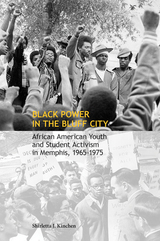 Black Power in the Bluff City: African American Youth and Student Activism in Memphis, 1965–1975
Shirletta Kinchen
University of Tennessee Press, 2016 During the civil rights era, Memphis gained a reputation for having one of the South’s strongest NAACP branches. But that organization, led by the city’s black elite, was hardly the only driving force in the local struggle against racial injustice. In the late sixties, Black Power proponents advocating economic, political, and cultural self-determination effectively mobilized Memphis’s African American youth, using an array of moderate and radical approaches to protest and change conditions on their campuses and in the community.
While Black Power activism on the coasts and in the Midwest has attracted considerable scholarly attention, much less has been written about the movement’s impact outside these hotbeds. In Black Power in the Bluff City, Shirletta J. Kinchen helps redress that imbalance by examining how young Memphis activists, like Coby Smith and Charles Cabbage, dissatisfied by the pace of progress in a city emerging from the Jim Crow era, embraced Black Power ideology to confront such challenges as gross disparities in housing, education, and employment as well as police brutality and harassment. Two closely related Black Power organizations, the Black Organizing Project and the Invaders, became central to the local black youth movement in the late 1960s. Kinchen traces these groups’ participation in the 1968 sanitation workers’ strike—including the controversy over whether their activities precipitated events that culminated in Martin Luther King’s assassination—and their subsequent involvement in War on Poverty programs. The book also shows how Black Power ideology drove activism at the historically black LeMoyne-Owen College, scene of a 1968 administration-building takeover, and at the predominately white Memphis State University, where African American students transformed the campus by creating parallel institutions that helped strengthen black student camaraderie and consciousness in the face of marginalization.
Drawing on interviews with activists, FBI files, newspaper accounts from the period, and many other sources, the author persuasively shows not only how an emerging generation helped define the black freedom struggle in Memphis but also how they applied the tenets of Black Power to shape the broader community.
Shirletta J. Kinchen is an assistant professor in the Pan-African Studies Department at the University of Louisville.
Black Power, Jewish Politics: Reinventing the Alliance in the 1960s
Marc Dollinger
Brandeis University Press, 2018 Marc Dollinger charts the transformation of American Jewish political culture from the Cold War liberal consensus of the early postwar years to the rise and influence of Black Power–inspired ethnic nationalism. He shows how, in a period best known for the rise of black antisemitism and the breakdown of the black-Jewish alliance, black nationalists enabled Jewish activists to devise a new Judeo-centered political agenda—including the emancipation of Soviet Jews, the rise of Jewish day schools, the revitalization of worship services with gender-inclusive liturgy, and the birth of a new form of American Zionism. Undermining widely held beliefs about the black-Jewish alliance, Dollinger describes a new political consensus, based on identity politics, that drew blacks and Jews together and altered the course of American liberalism.
Black Power on Campus: The University of Illinois, 1965-75
Joy Ann Williamson
University of Illinois Press, 2003 Joy Ann Williamson charts the evolution of black consciousness on predominately white American campuses during the critical period between the mid-1960s and mid-1970s, with the Black student movement at the University of Illinois at Urbana-Champaign serving as an illuminating microcosm of similar movements across the country. Drawing on student publications of the late 1960s and early 1970s, as well as interviews with student activists, former administrators, and faculty, Williamson discusses the emergence of Black Power ideology, what constituted "blackness," and notions of self-advancement versus racial solidarity. Promoting an understanding of the role of black youth in protest movements, Black Power on Campus is an important contribution to the literature on African American liberation movements and the reform of American higher education.
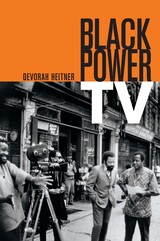 Black Power TV
Devorah Heitner
Duke University Press, 2013 In Black Power TV, Devorah Heitner chronicles the emergence of Black public affairs television starting in 1968. She examines two local shows, New York's Inside Bedford-Stuyvesant and Boston's Say Brother, and the national programs Soul! and Black Journal. These shows offered viewers radical and innovative programming: the introspections of a Black police officer in Harlem, African American high school students discussing visionary alternatives to the curriculum, and Miriam Makeba comparing race relations in the United States to apartheid in South Africa. While Inside Bedford-Stuyvesant and Say Brother originated from a desire to contain Black discontent during a period of urban uprisings and racial conflict, these shows were re-envisioned by their African American producers as venues for expressing Black critiques of mainstream discourse, disseminating Black culture, and modeling Black empowerment. At the national level, Soul! and Black Journal allowed for the imagining of a Black nation and a distinctly African American consciousness, and they played an influential role in the rise of the Black Arts Movement. Black Power TV reveals how regulatory, activist, and textual histories are interconnected and how Black public affairs television redefined African American representations in ways that continue to reverberate today.
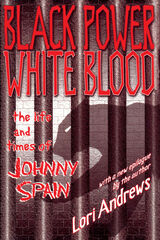 Black Power White Blood
Lori Andrews
Temple University Press, 1999 Originally published in hardcover to much acclaim, this vividly written biographical drama will now be available in a paperback edition and includes a new epilogue by the author. Conceived within a clandestine relationship between a black man and a married white woman, Johnny Spain was born (as Larry Michael Armstrong) in Mississippi during the mid-1950s. Spain's life story speaks to the destructive power of racial bias. Even if his mother's husband were willing to accept the boy -- which he was not -- a mixed-race child inevitably would come to harm in that place and time.
At six years old, already the target of name-calling children and threatening adults, he could not attend school with his older brother. Only decades later would he be told why the Armstrongs sent him to live with a black family in Los Angeles. As Johnny came of age, he thought of himself as having been rejected by his white family as well as by his black peers. His erratic, destructive behavior put him on a collision course with the penal system; he was only seventeen when convicted of murder and sent to Soledad.
Drawn into the black power movement and the Black Panther Party by fellow inmate, the charismatic George Jackson, Spain became a dynamic force for uniting prisoners once divided by racial hatred. He committed himself to the cause of prisoners' rights, impressing inmates, prison officials, and politicians with his intelligence and passion. Nevertheless, among the San Quentin Six, only he was convicted of conspiracy after Jackson's failed escape attempt.
Lori Andrews, a professor of law, vividly portrays the dehumanizing conditions in the prisons, the pervasive abuses in the criminal justice system, and the case for overturning Spain's conspiracy conviction. Spain's personal transformation is the heart of the book, but Andrews frames it within an indictment of intolerance and injustice that gives this individual's story broad significance.
The Black Presence in the Era of the American Revolution
Sidney Kaplan
University of Massachusetts Press, 1989 This carefully researched history details the military, political, economic, and cultural experience of black people during the era of the American Revolution. Beginning with Crispus Attucks, the first man killed in the Revolutionary action, the authors recount a series of fascinating personal histories. The text is highlighted by excerpts form letters, journals, newspaper articles, and other documents, as well as by poems, broadsides, and passages from magazines of the day.
The book is a revised and expanded edition of the authors' classic catalog that accompanied a pioneering exhibition mounted in 1973 by the National Portrait Gallery.
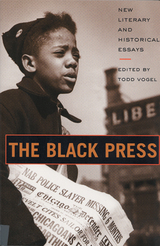 The Black Press: New Literary and Historical Essays
Edited by Todd Vogel
Rutgers University Press, 2001 In a segregated society in which black scholars, writers, and artists could find few ways to reach an audience, journalism was a means of dispersing information to communities throughout the United States. The black press has offered incisive critiques of such issues as racism, identify, class, and economic injustice, but that contribution to public discourse has remained largely unrecognized until now. The original essays in this volume broaden our understanding of the “public sphere” and show how marginalized voices attempted to be heard in the circles of debate and dissent that existed in their day.
The Black Press progresses chronologically from slavery to the impact and implications of the Internet to reveal how the press’s content and its very form changed with evolving historical and cultural conditions in America. The first papers fought for rights for free blacks in the North. The early twentieth-century black press sought to define itself and its community amidst American modernism. Writers in the 1960s took on the task of defining revolution in that decade’s ferment. It was not been until the mid-twentieth century that African American cultural study began to achieve intellectual respectability.
The Black Press addresses the production, distribution, regulation, and reception of black journalism in order to illustrate a more textured public discourse, one that exchanges ideas not just within the black community, but also within the nation at large. The essays demonstrate that the black press redefined class, restaged race and nationhood, and reset the terms of public conversation, providing a fuller understanding of not just African American culture, but also the varied cultural battles fought throughout our country’s history.
Black Property Owners in the South, 1790-1915
Loren Schweninger
University of Illinois Press, 1990 Property ownership has been a traditional means for African Americans to gain recognition and enter the mainstream of American life. This landmark study documents this significant, but often overlooked, aspect of the black experience from the late eighteenth century to World War I.
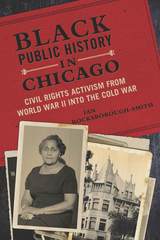 Black Public History in Chicago: Civil Rights Activism from World War II into the Cold War
Ian Rocksborough-Smith
University of Illinois Press, 2018 In civil-rights-era Chicago, a dedicated group of black activists, educators, and organizations employed black public history as more than cultural activism. Their work and vision energized a movement that promoted political progress in the crucial time between World War II and the onset of the Cold War. Ian Rocksborough-Smith’s meticulous research and adept storytelling provide the first in-depth look at how these committed individuals leveraged Chicago’s black public history. Their goal: to engage with the struggle for racial equality. Rocksborough-Smith shows teachers working to advance curriculum reform in public schools, while well-known activists Margaret and Charles Burroughs pushed for greater recognition of black history by founding the DuSable Museum of African American History. Organizations like the Afro-American Heritage Association, meanwhile, used black public history work to connect radical politics and nationalism. Together, these people and their projects advanced important ideas about race, citizenship, education, and intellectual labor that paralleled the shifting terrain of mid-twentieth-century civil rights.
 The Black Public Sphere
Edited by The Black Public Sphere Collective
University of Chicago Press, 1995 During the 1980s and 1990s the black public sphere has expanded in reach and complexity even as progressive black political agendas have been and continue to be shattered and social programs gutted. Today, African Americans find themselves more highly integrated into American life than ever before, and yet, in many ways they are still as thoroughly segregated as at any time during this century.
To think about the black public sphere we have to be willing to rethink the relationship between markets and freedom, commodity and identity, property and pleasure. This book provides more sophisticated approaches to matters historically consigned to inadequate rubrics—"the Negro problem," "subcultures," "minorities," "inner city," and "multicultural." While these rubrics constrict and stereotype, the analytic potential of the black public sphere is that it facilitates new ways to discuss democratic values and citizenship.
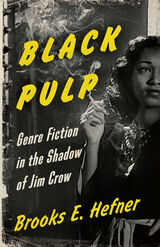 Black Pulp: Genre Fiction in the Shadow of Jim Crow
Brooks E. Hefner
University of Minnesota Press, 2021 A deep dive into mid-century African American newspapers, exploring how Black pulp fiction reassembled genre formulas in the service of racial justice
In recent years, Jordan Peele’s Get Out, Marvel’s Black Panther, and HBO’s Watchmen have been lauded for the innovative ways they repurpose genre conventions to criticize white supremacy, celebrate Black resistance, and imagine a more racially just world—important progressive messages widely spread precisely because they are packaged in popular genres. But it turns out, such generic retooling for antiracist purposes is nothing new. As Brooks E. Hefner’s Black Pulp shows, this tradition of antiracist genre revision begins even earlier than recent studies of Black superhero comics of the 1960s have revealed. Hefner traces it back to a phenomenon that began in the 1920s, to serialized (and sometimes syndicated) genre stories written by Black authors in Black newspapers with large circulations among middle- and working-class Black readers. From the pages of the Pittsburgh Courier and the Baltimore Afro-American, Hefner recovers a rich archive of African American genre fiction from the 1920s through the mid-1950s—spanning everything from romance, hero-adventure, and crime stories to westerns and science fiction. Reading these stories, Hefner explores how their authors deployed, critiqued, and reassembled genre formulas—and the pleasures they offer to readers—in the service of racial justice: to criticize Jim Crow segregation, racial capitalism, and the sexual exploitation of Black women; to imagine successful interracial romance and collective sociopolitical progress; and to cheer Black agency, even retributive violence in the face of white supremacy. These popular stories differ significantly from contemporaneous, now-canonized African American protest novels that tend to represent Jim Crow America as a deterministic machine and its Black inhabitants as doomed victims. Widely consumed but since forgotten, these genre stories—and Hefner’s incisive analysis of them—offer a more vibrant understanding of African American literary history.
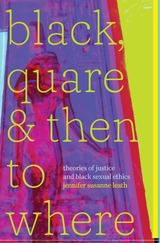 Black, Quare, and Then to Where: Theories of Justice and Black Sexual Ethics
jennifer susanne leath
Duke University Press, 2023 In Black, Quare, and Then to Where jennifer susanne leath explores the relationship between Afrodiasporic theories of justice and Black sexual ethics through a womanist engagement with Maât the ancient Egyptian deity of justice and truth. Maât took into account the historical and cultural context of each human’s life, thus encompassing nuances of politics, race, gender, and sexuality. Arguing that Maât should serve as a foundation for reconfiguring Black sexual ethics, leath applies ancient Egyptian moral codes to quare ethics of the erotic, expanding what relationships and democratic practices might look like from a contemporary Maâtian perspective. She also draws on Pan-Africanism and examines the work of Alice Walker, E. Patrick Johnson, Cheikh Anta Diop, Sylvia Wynter, Sun Ra, and others. She shows that together these thinkers and traditions inform and expand the possibilities of Maâtian justice with respect to Black sexual experiences. As a moral force, leath contends, Maât opens new possibilities for mapping ethical frameworks to understand, redefine, and imagine justices in the United States.
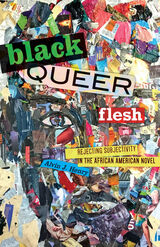 Black Queer Flesh: Rejecting Subjectivity in the African American Novel
Alvin J. Henry
University of Minnesota Press, 2021 A groundbreaking examination of how twentieth-century African American writers use queer characters to challenge and ultimately reject subjectivity
Black Queer Flesh reinterprets key African American novels from the Harlem Renaissance to Black Modernism to contemporary literature, showing how authors have imagined a new model of Black queer selfhood. African American authors blame liberal humanism’s model of subjectivity for double consciousness and find that liberal humanism’s celebration of individual autonomy and agency is a way of disciplining Black queer lives. These authors thus reject subjectivity in search of a new mode of the self that Alvin J. Henry names “Black queer flesh”—a model of selfhood that is collective, plural, fluctuating, and deeply connected to the Black queer past. Henry begins with early twentieth-century authors such as Jessie Redmon Fauset and James Weldon Johnson. These authors adapted the Bildungsroman, the novel of self-formation, to show African Americans gaining freedom and agency by becoming a liberal, autonomous subjects. These authors, however, discovered that the promise of liberal autonomy held out by the Bildungsroman was yet another tool of antiblack racism. As a result, they tentatively experimented with repurposing the Bildungsroman to throw off subjectivity and its attendant double consciousness. In contrast, Nella Larsen, Henry shows, was the first author to fully reject subjectivity. In Quicksand and Passing, Larsen invented a new genre showing her queer characters—characters whose queerness already positioned them on the margins of subjectivity—escaping subjectivity altogether. Using Ralph Ellison’s archival drafts, Henry then powerfully rereads Invisible Man, revealing that the protagonist as a queer, disabled character taught by the novel’s many other queer, disabled characters to likewise seek a selfhood beyond subjectivity. Although Larsen and Ellison sketch glimpses of this selfhood beyond subjectivity, only Saidiya Hartman’s Wayward Lives, Beautiful Experiments shows a protagonist fully inhabiting Black queer flesh—a new mode of selfhood that is collective, plural, always evolving, and no longer alienated from the black past. Black Queer Flesh is an original and necessary contribution to Black literary studies, offering new ways to understand and appreciate the canonical texts and far more.
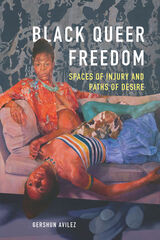 Black Queer Freedom: Spaces of Injury and Paths of Desire
GerShun Avilez
University of Illinois Press, 2020 Whether engaged in same-sex desire or gender nonconformity, black queer individuals live with being perceived as a threat while simultaneously being subjected to the threat of physical, psychological, and socioeconomical injury. Attending to and challenging threats has become a defining element in queer black artists’ work throughout the black diaspora. GerShun Avilez analyzes the work of diasporic artists who, denied government protections, have used art to create spaces for justice. He first focuses on how the state seeks to inhibit the movement of black queer bodies through public spaces, whether on the street or across borders. From there, he pivots to institutional spaces—specifically prisons and hospitals—and the ways such places seek to expose queer bodies in order to control them. Throughout, he reveals how desire and art open routes to black queer freedom when policy, the law, racism, and homophobia threaten physical safety, civil rights, and social mobility.
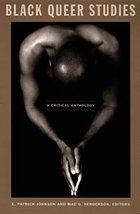 Black Queer Studies: A Critical Anthology
E. Patrick Johnson and Mae G. Henderson, eds.
Duke University Press, 2005 While over the past decade a number of scholars have done significant work on questions of black lesbian, gay, bisexual, and transgendered identities, this volume is the first to collect this groundbreaking work and make black queer studies visible as a developing field of study in the United States. Bringing together essays by established and emergent scholars, this collection assesses the strengths and weaknesses of prior work on race and sexuality and highlights the theoretical and political issues at stake in the nascent field of black queer studies. Including work by scholars based in English, film studies, black studies, sociology, history, political science, legal studies, cultural studies, and performance studies, the volume showcases the broadly interdisciplinary nature of the black queer studies project. The contributors consider representations of the black queer body, black queer literature, the pedagogical implications of black queer studies, and the ways that gender and sexuality have been glossed over in black studies and race and class marginalized in queer studies. Whether exploring the closet as a racially loaded metaphor, arguing for the inclusion of diaspora studies in black queer studies, considering how the black lesbian voice that was so expressive in the 1970s and 1980s is all but inaudible today, or investigating how the social sciences have solidified racial and sexual exclusionary practices, these insightful essays signal an important and necessary expansion of queer studies. Contributors. Bryant K. Alexander, Devon Carbado, Faedra Chatard Carpenter, Keith Clark, Cathy Cohen, Roderick A. Ferguson, Jewelle Gomez, Phillip Brian Harper, Mae G. Henderson, Sharon P. Holland, E. Patrick Johnson, Kara Keeling, Dwight A. McBride, Charles I. Nero, Marlon B. Ross, Rinaldo Walcott, Maurice O. Wallace
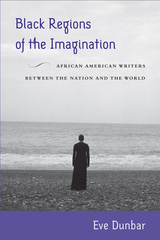 Black Regions of the Imagination: African American Writers between the Nation and the World
Eve Dunbar
Temple University Press, 2012 Zora Neale Hurston, Richard Wright, James Baldwin, and Chester Himes were all pressured by critics and publishers to enlighten mainstream (white) audiences about race and African American culture. Focusing on fiction and non-fiction they produced between the Harlem Renaissance and the Black Arts Movement, Eve Dunbar’s important book, Black Regions of the Imagination, examines how these African American writers—who lived and traveled outside the United States—both document and re-imagine their “homegrown” racial experiences within a worldly framework. From Hurston’s participant-observational accounts and Wright’s travel writing to Baldwin’s Another Country and Himes’ detective fiction, these writers helped develop the concept of a “region” of blackness that resists boundaries of genre and geography. Each writer represents—and signifies—blackness in new ways and within the larger context of the world. As they negotiated issues of “belonging,” these writers were more critical of social segregation in America as well as increasingly resistant to their expected roles as cultural “translators.”
 Black Representation and Urban Policy
Albert Karnig and Susan Welch
University of Chicago Press, 1981 Recent years have witnessed a dramatic growth in the number of black elected officials. Although blacks still constitute barely 1 percent of elected officeholders in the nation, their increasing political power cannot be denied. In Black Representation and Urban Policy, Albert K. Karnig and Susan Welch focus on the election of blacks to mayoral and city council seats, using the most current data available on more than 250 cities. They address two major questions: What conditions promote blacks' chances of winning election to public office? Does the election of blacks to municipal office have an effect on urban policy?
In exploring the factors that underlie the election of blacks to public office, the authors found that the resources of the black community itself—the size as well as the education and income of the black population—are the best predictors of blacks' winning political office. The authors' assessment of the impact of black elected officials on urban policy constitutes perhaps their most profoundly important finding. Cities with black mayors have had greater increases in social welfare expenditures than have similar communities without black mayors. The authors point out that election of blacks to mayoral posts, then, can have more than symbolic consequences for public policy.
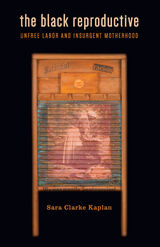 The Black Reproductive: Unfree Labor and Insurgent Motherhood
Sara Clarke Kaplan
University of Minnesota Press, 2021 How Black women’s reproduction became integral to white supremacy, capitalism, and heteropatriarchy—and remains key to their dismantling
In the United States, slavery relied on the reproduction and other labors of unfree Black women. Nearly four centuries later, Black reproductivity remains a vital technology for the creation, negotiation, and transformation of sexualized and gendered racial categories. Yet even as Black reproduction has been deployed to resolve the conflicting demands of white supremacy, capitalism, and heteropatriarchy, Sara Clarke Kaplan argues that it also holds the potential to destabilize the oppressive systems it is supposed to maintain. The Black Reproductive convenes Black literary and cultural studies with feminist and queer theory to read twentieth- and twenty-first-century texts and images alongside their pre-emancipation counterparts. These provocative, unexpected couplings include how Toni Morrison’s depiction of infanticide regenders Orlando Patterson’s theory of social death, and how Mary Prince’s eighteenth-century fugitive slave narrative is resignified through the representational paradoxes of Gayl Jones’s blues novel Corregidora. Throughout, Kaplan offers new perspectives on Black motherhood and gendered labor, from debates over the relationship between President Thomas Jefferson and Sally Hemings, to the demise of racist icon Aunt Jemima, to discussions of Black reproductive freedom and abortion. The Black Reproductive gives vital insight into the historic and ongoing conditions of Black unfreedom, and points to the possibilities for a Black feminist practice of individual and collective freedom.
|
|
